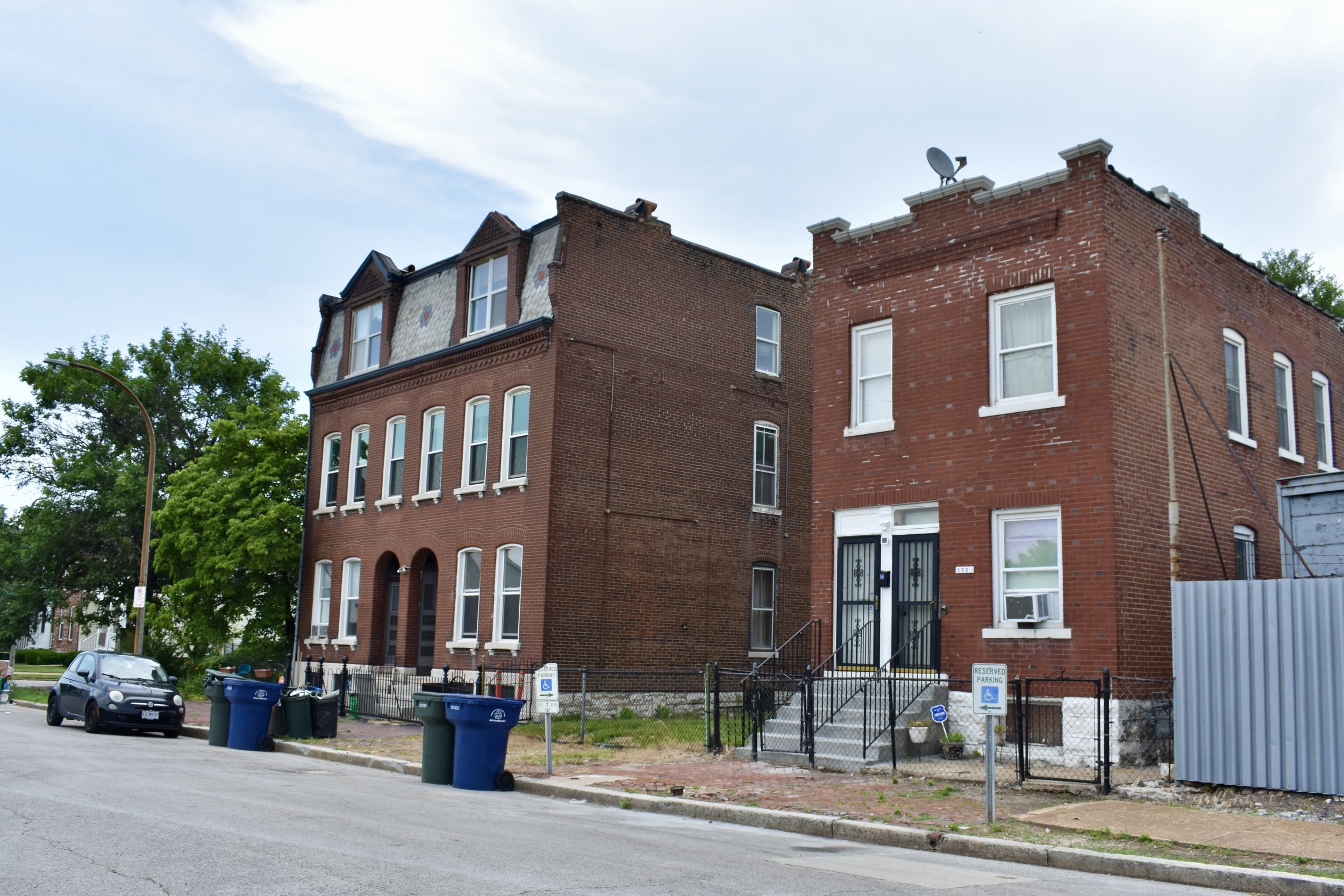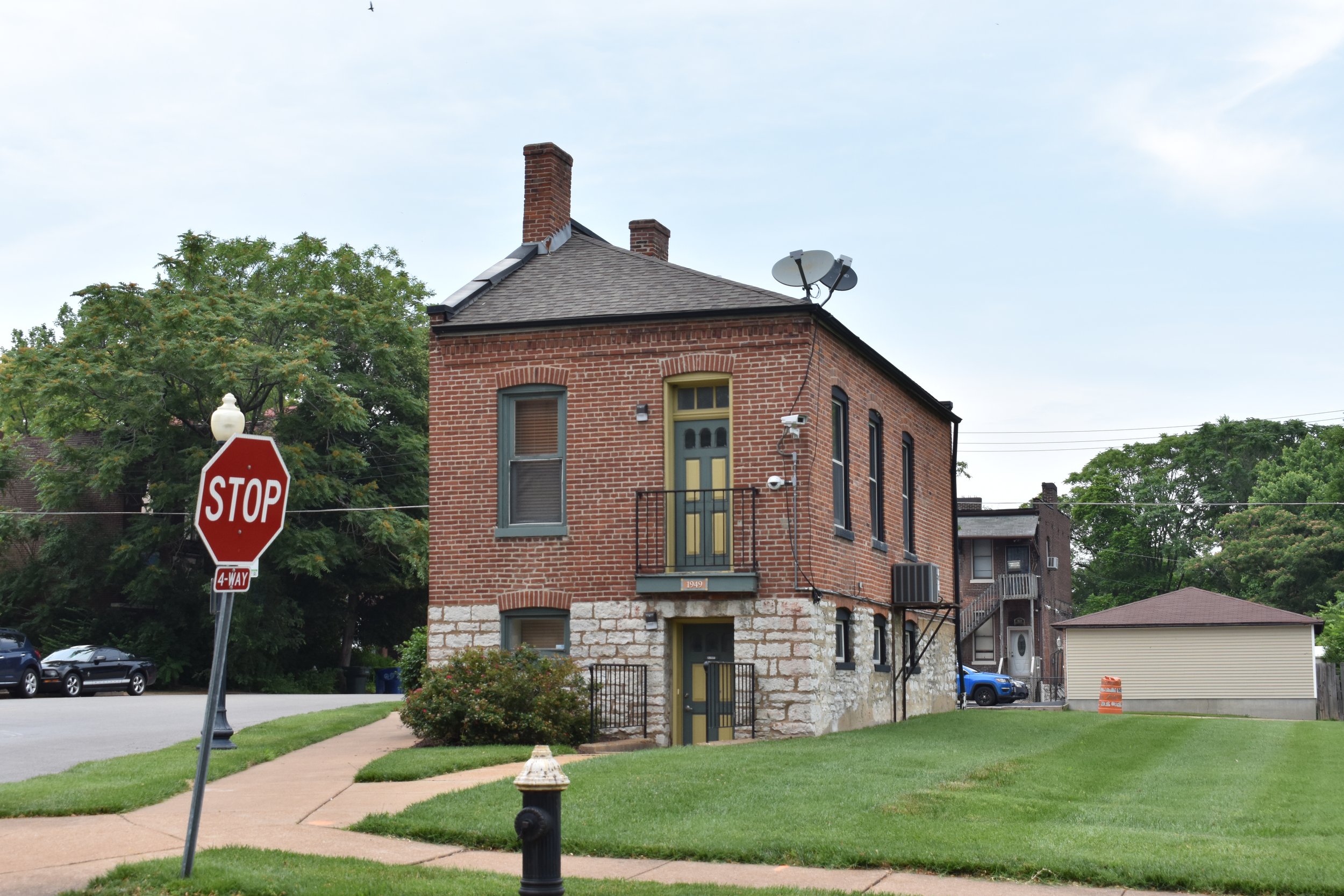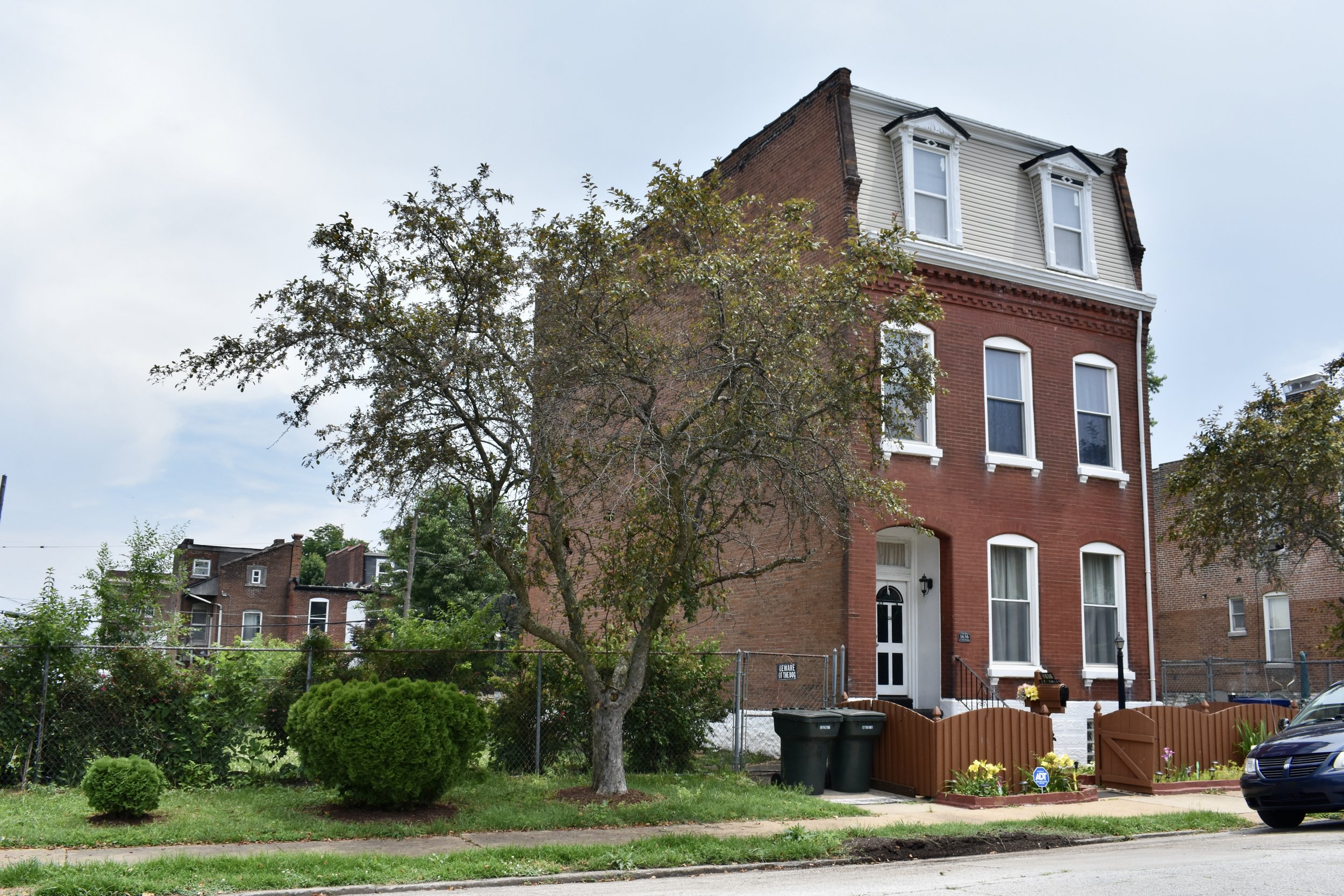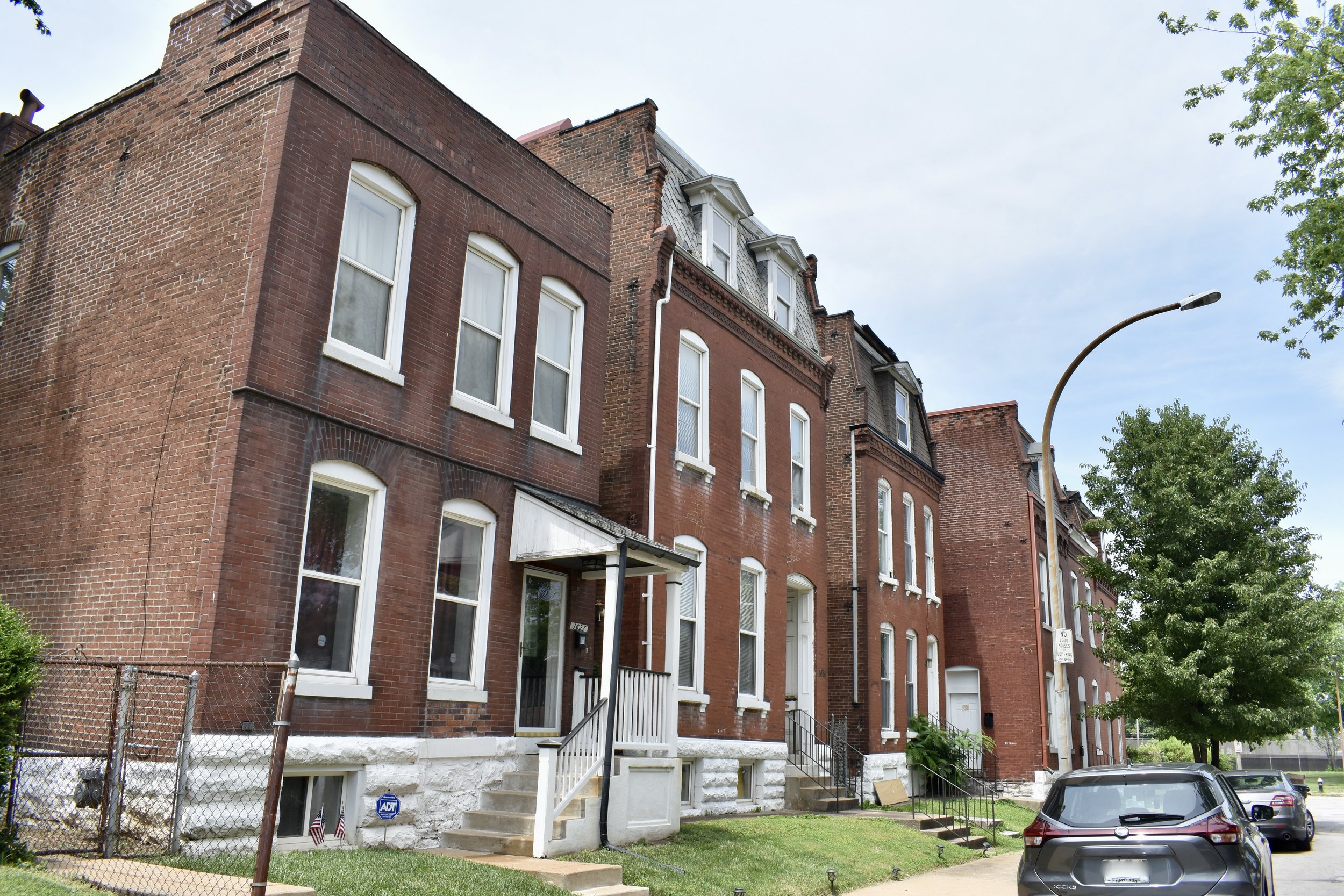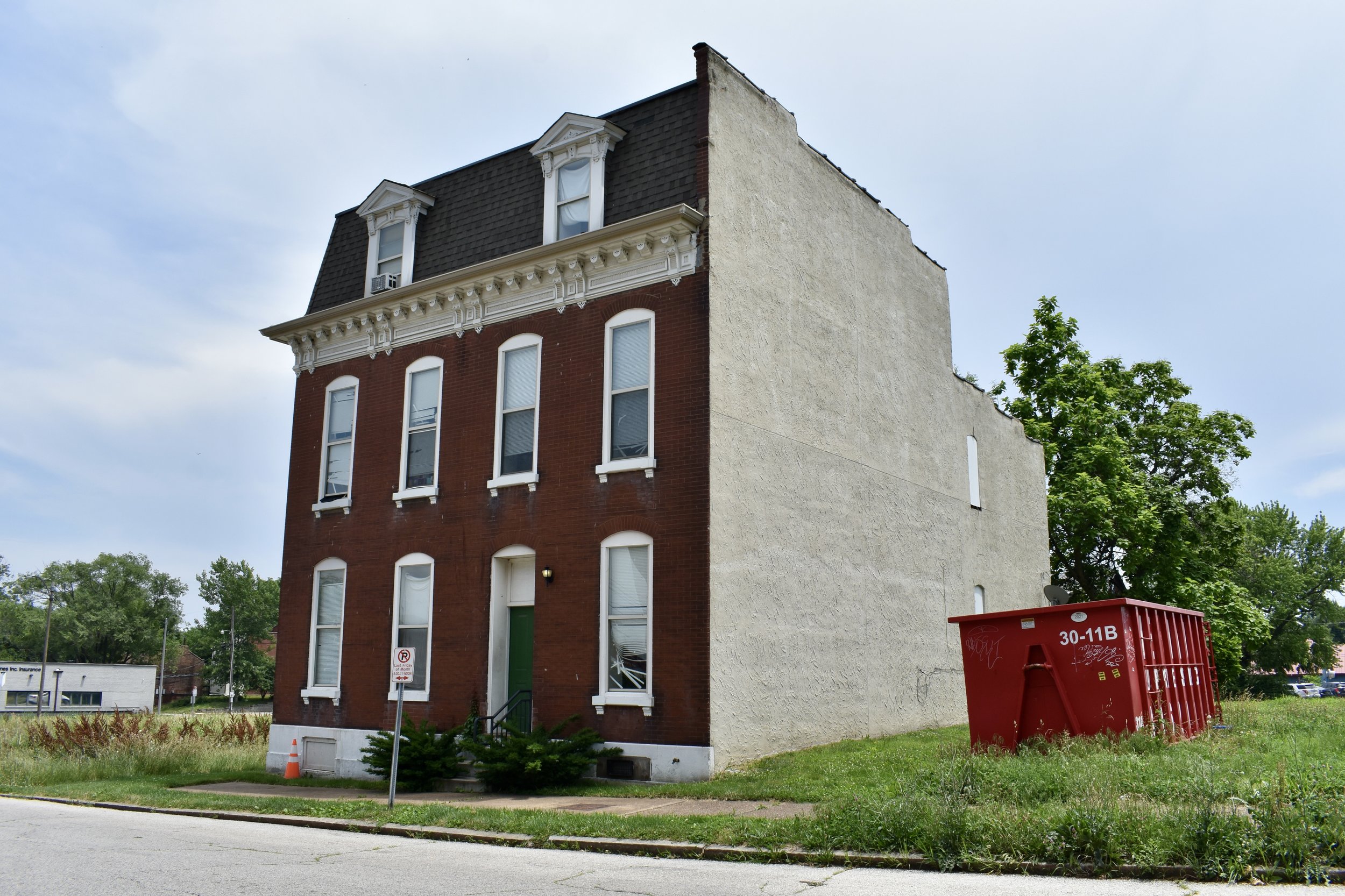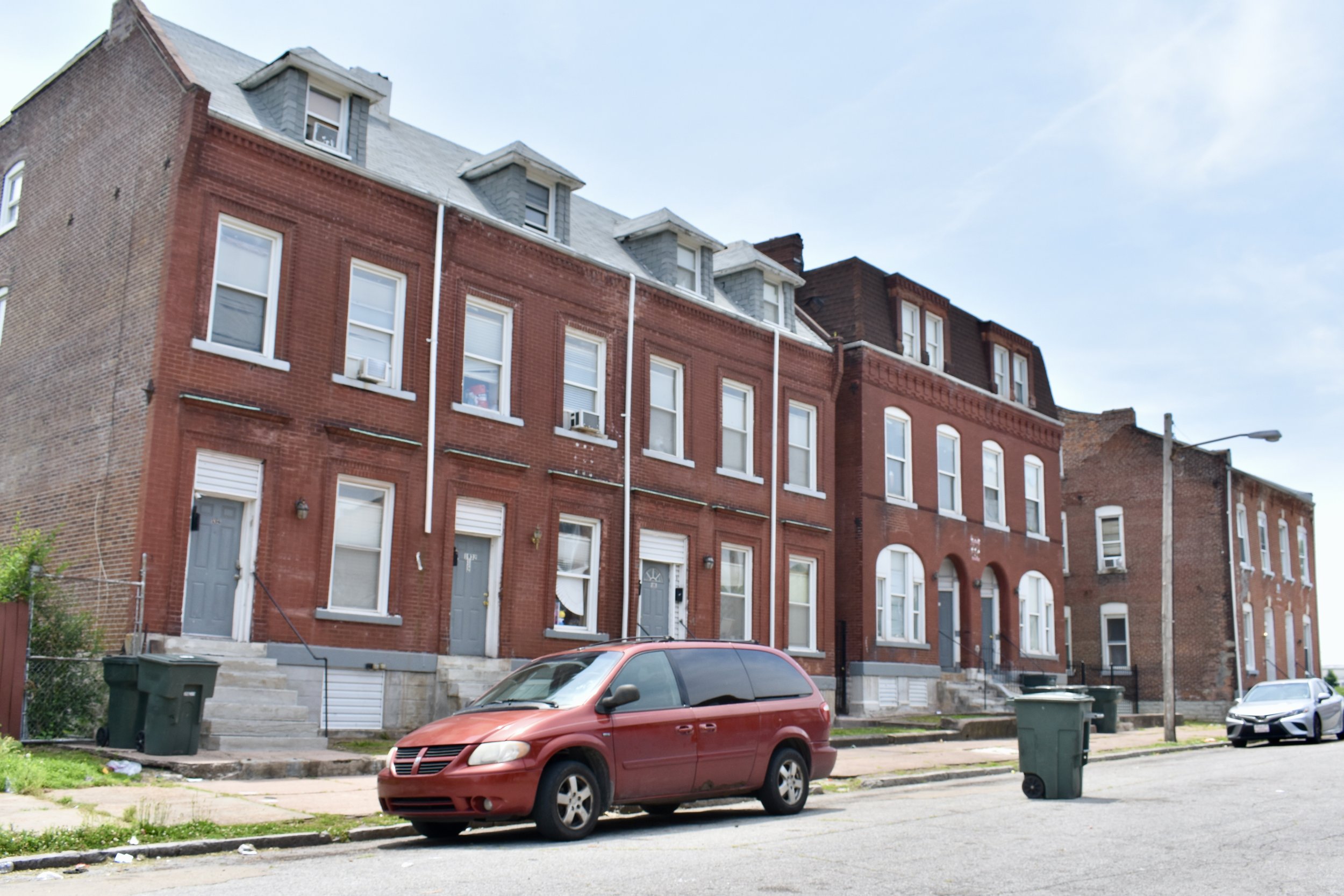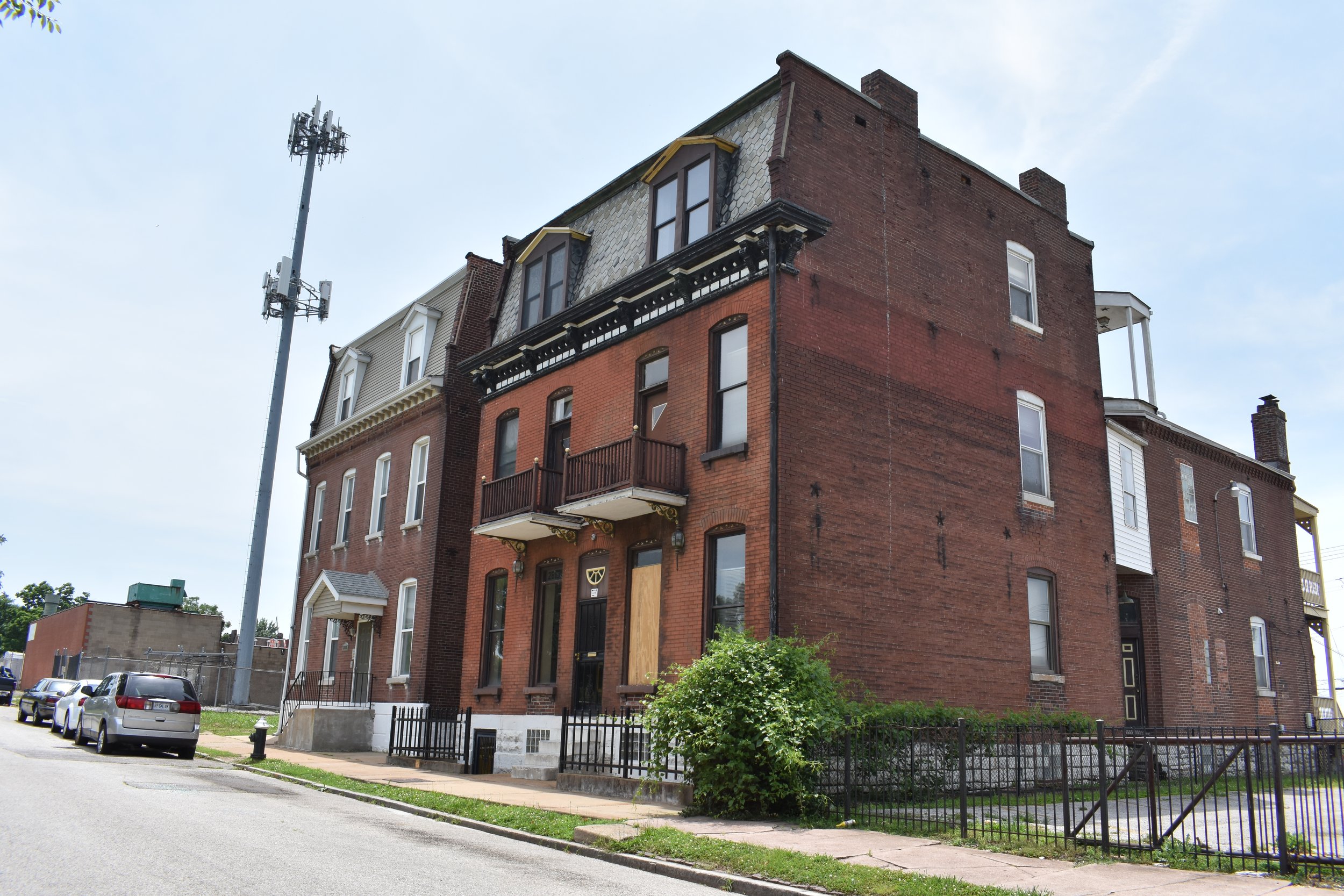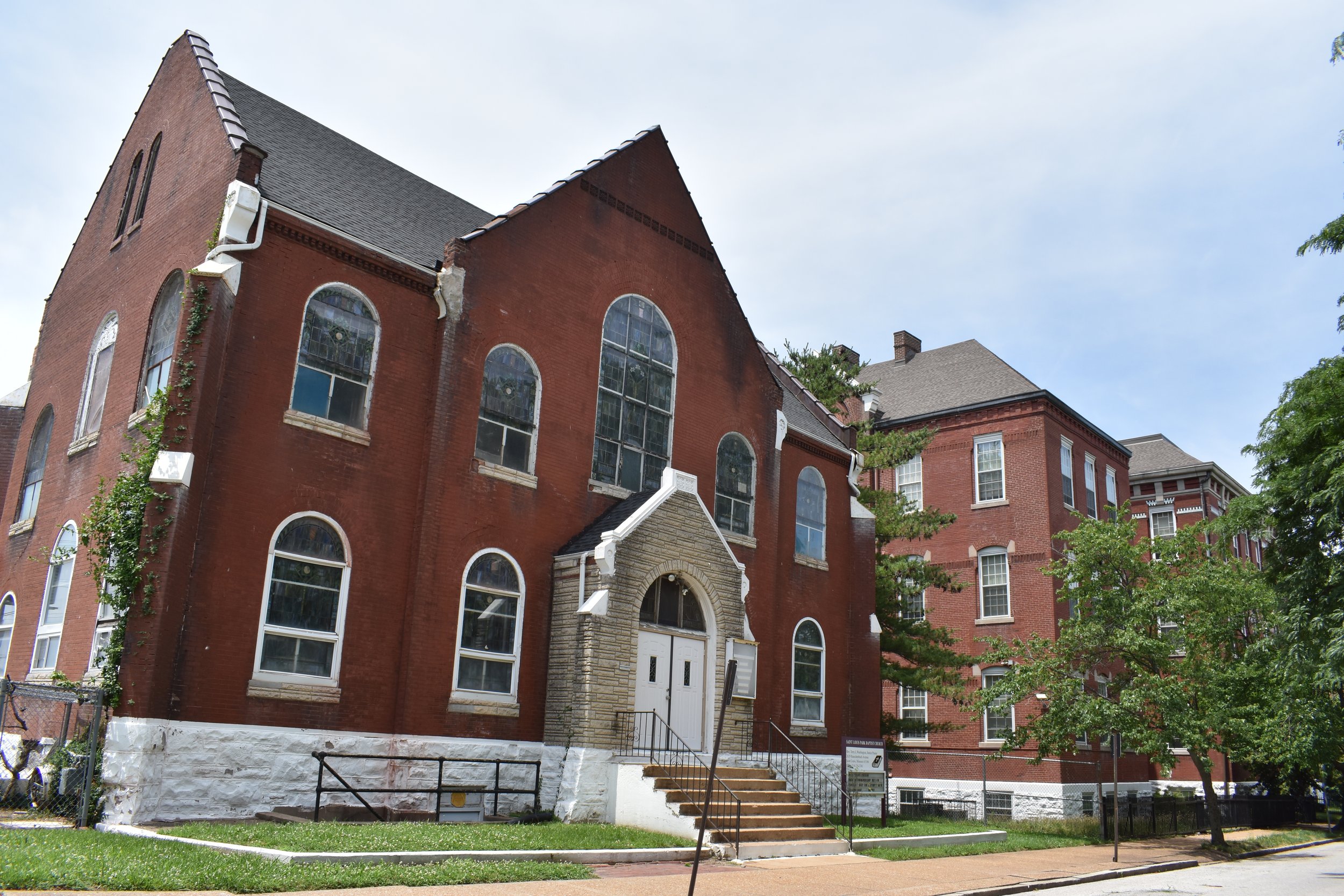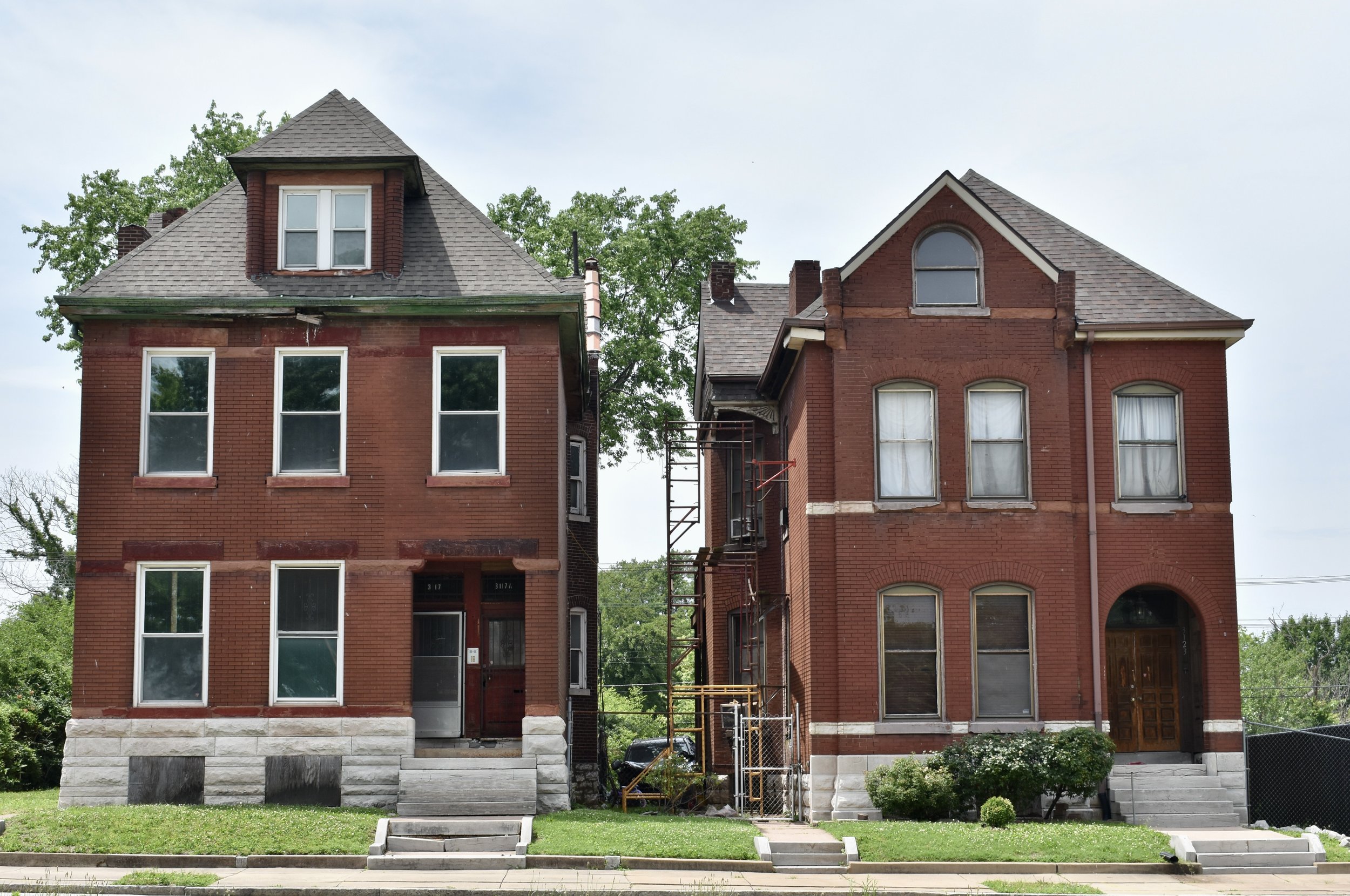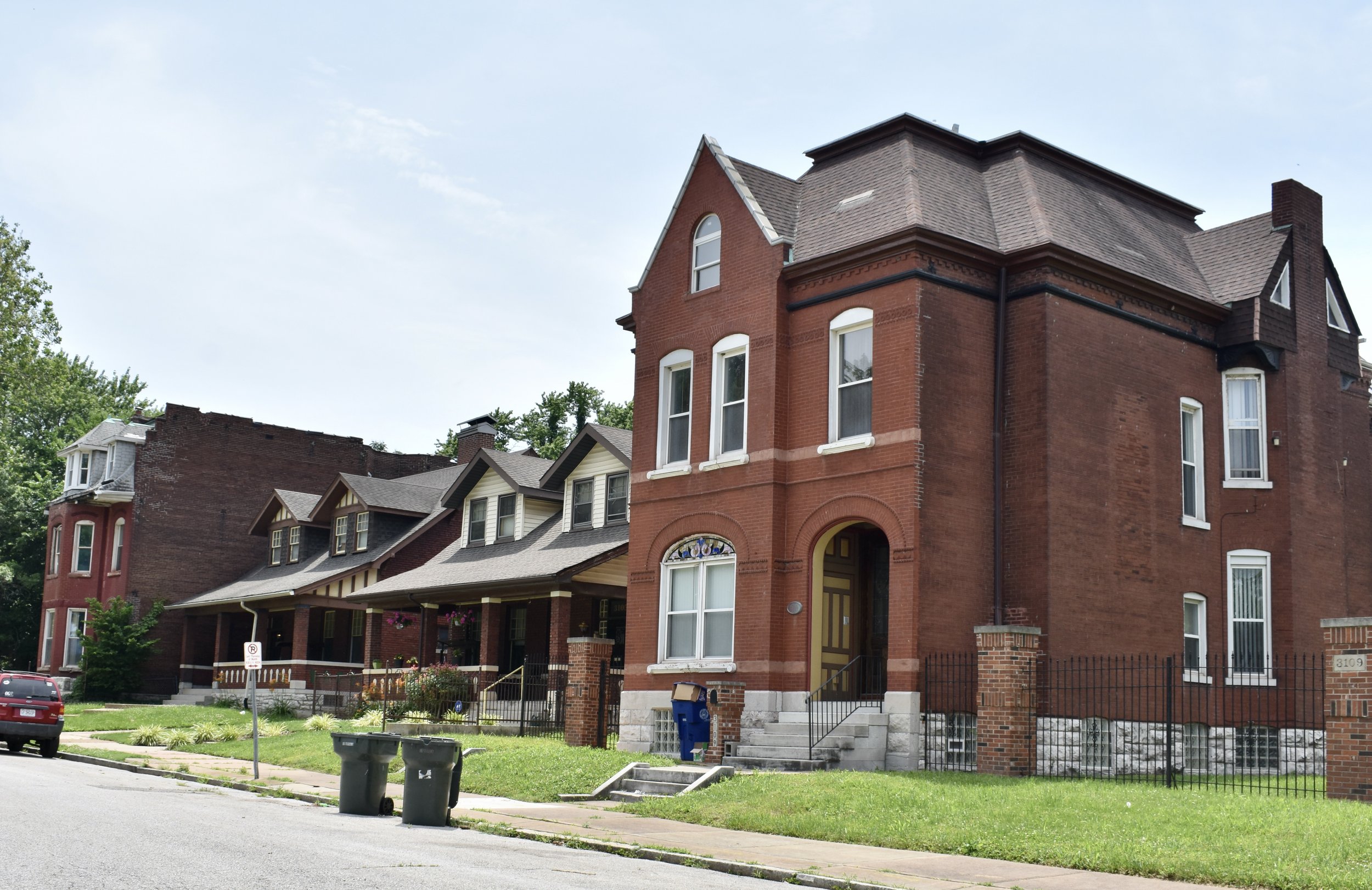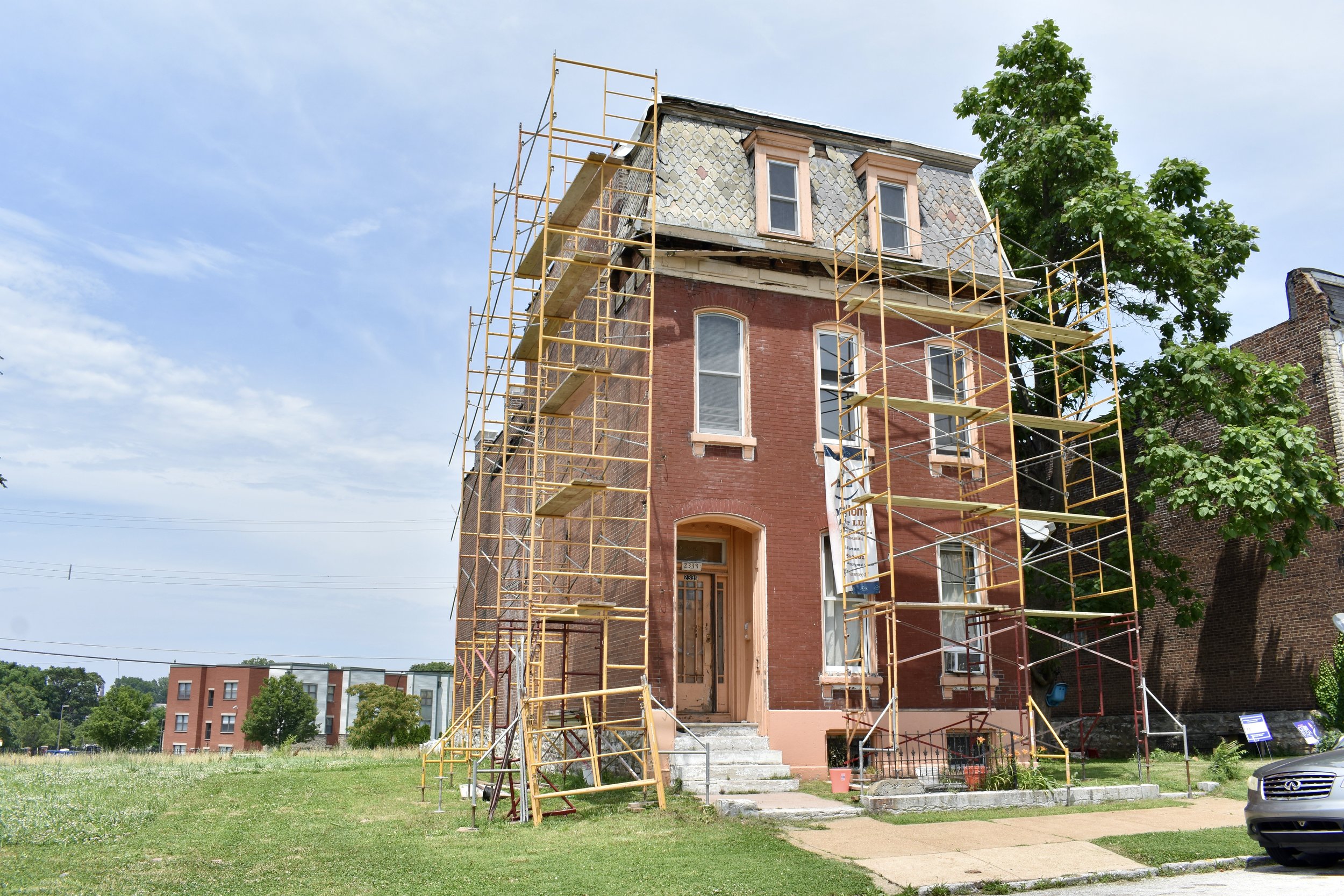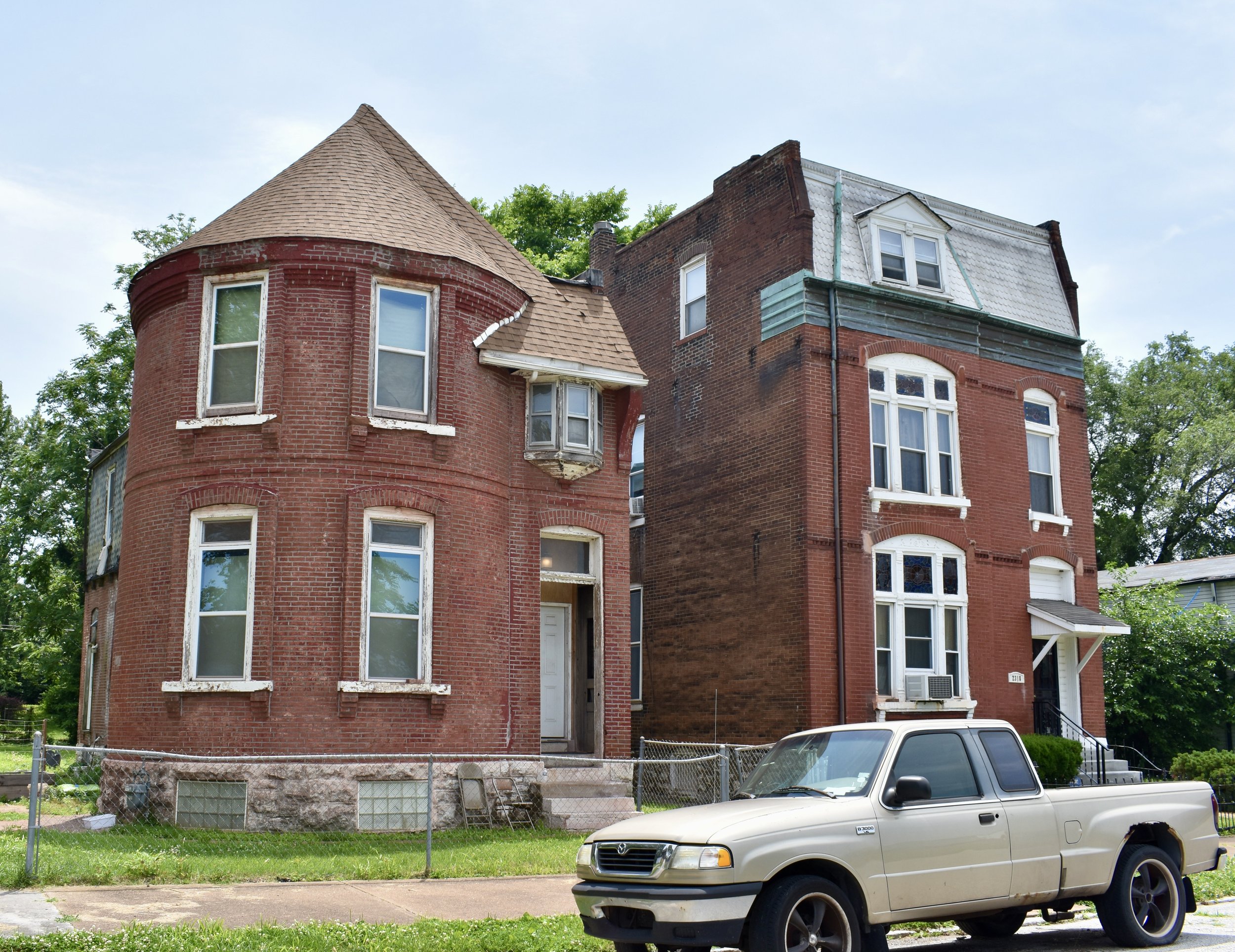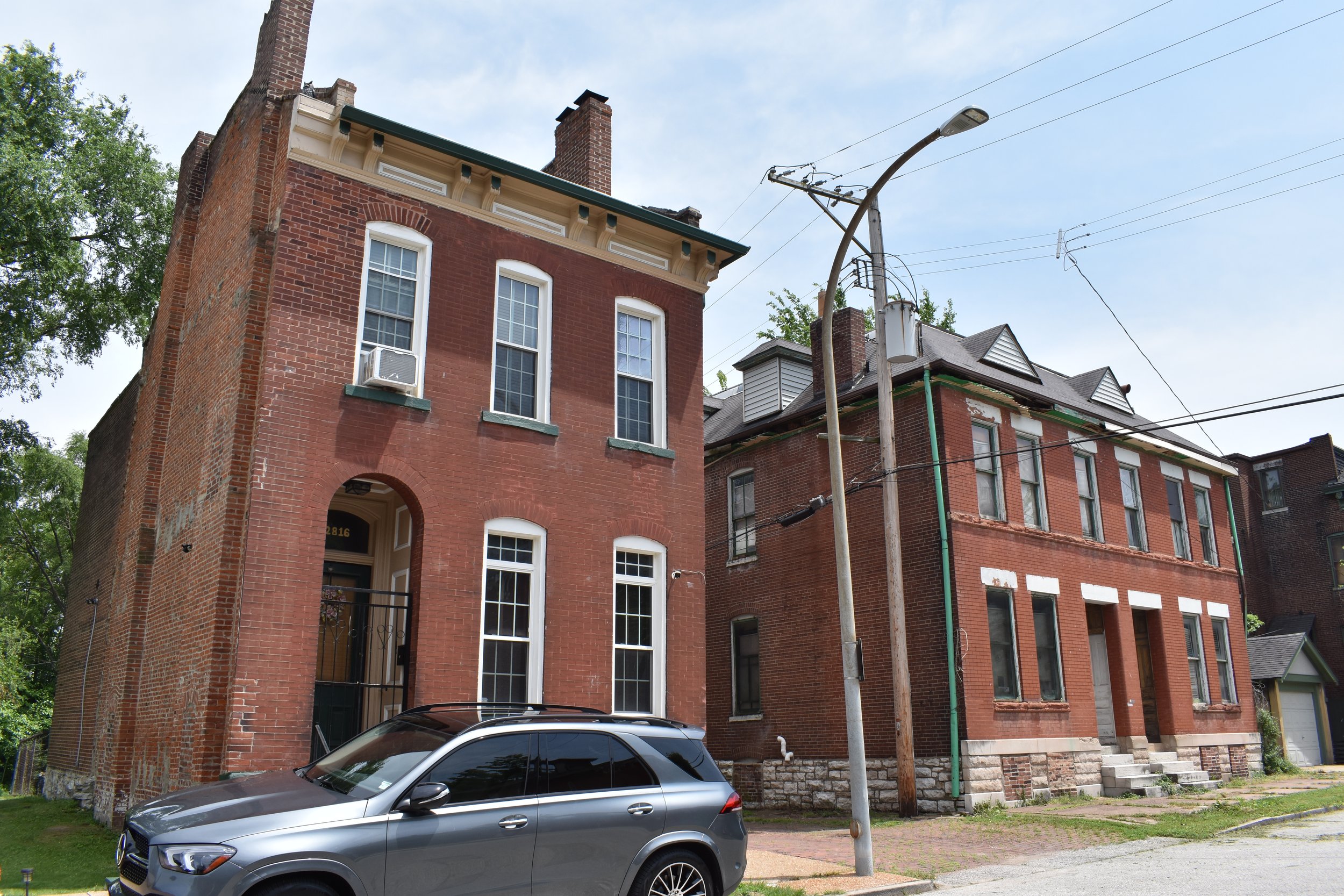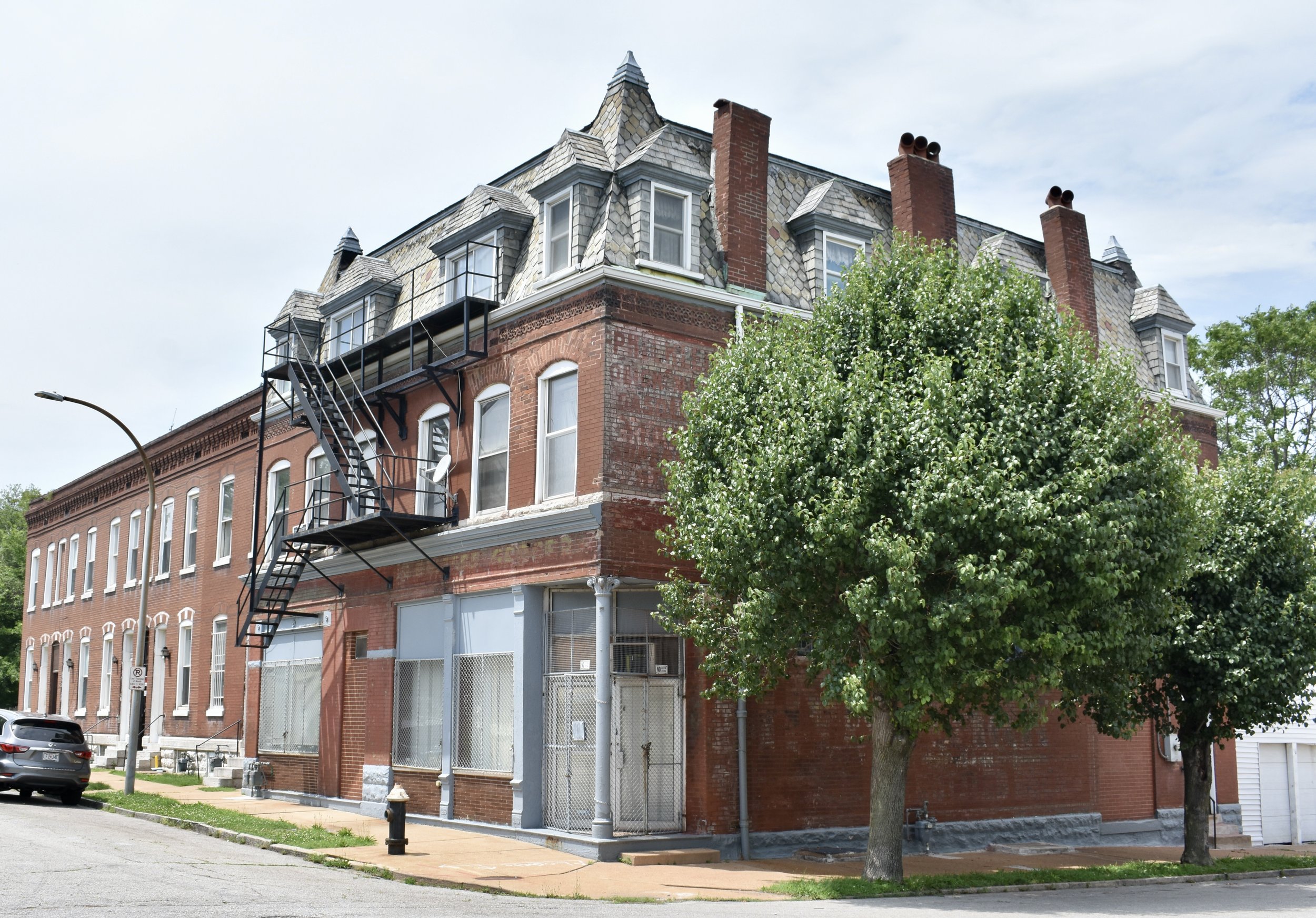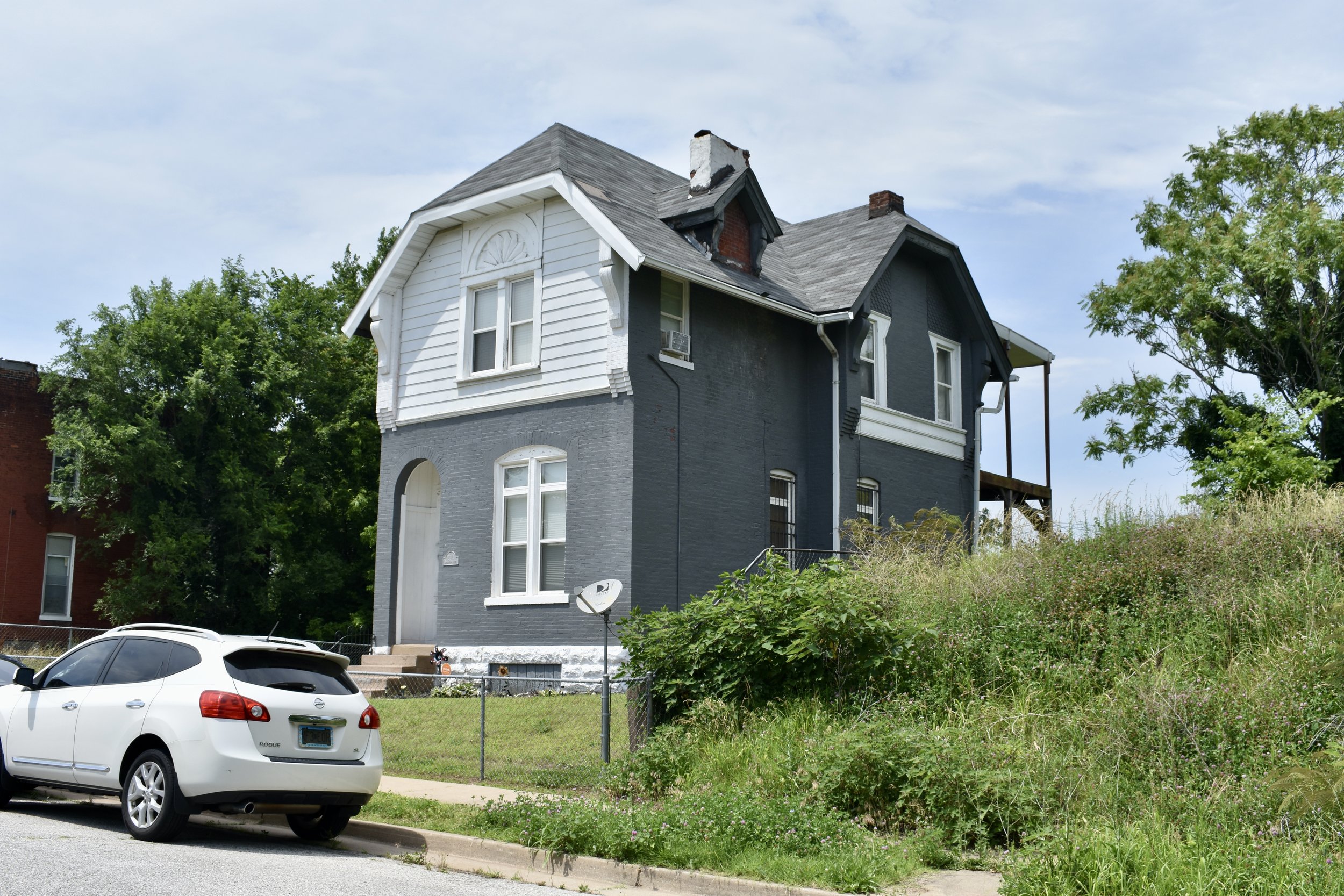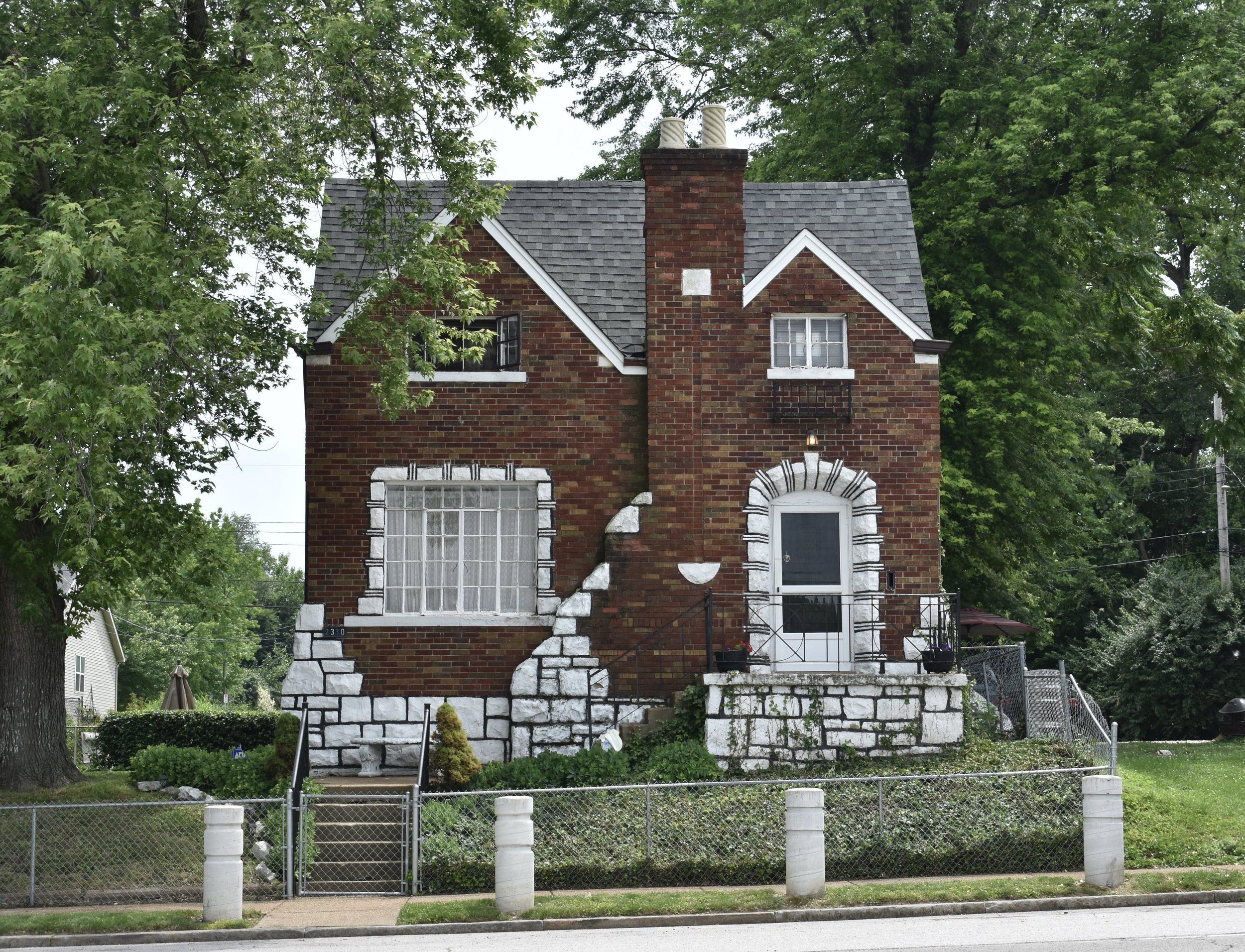
St. Louis Place is a neighborhood in St. Louis, bound by Palm Street/Natural Bridge Avenue on the north, Cass Avenue to the south, N. Florissant Avenue/13th Street to the east and Jefferson Avenue/Parnell to the west:
Take a good look at the map. The area to the south is Carr Square which was largely cleared for such projects as Pruitt-Igoe and the current 1980’s apartment complexes. Cass Avenue serves as the dividing line for the old street grid vs. the recent-past failed attempts at urban renewal in this part of town. Just take a look at how damaging the projects were to St. Louis’ early street/neighborhood design. It’s good to see St. Louis Place holding on to its 19th Century grid.
St. Louis Place, not unlike virtually all north city neighborhoods (Baden is an exception) took a beating from 1990 to 2000, losing 27% of its residents. They are down to 2,763 people, 88% black, 10% white and 1% Hispanic/Latino. There were 1,395 housing units counted, 67% of which were occupied. The owner/renter split is 40%/60%.
Here’s a statement from the scant St. Louis Place website:
This neighborhood is primarily a diverse working-class community that has been the first home for many St. Louis families. We welcome first time residents as well as people returning to their roots.
The description of diversity is not one that strikes me both after reading the stats and seeing the neighborhood. If there are 276 white people living here today (the stats are 10 years old) I’d be surprised.
The 2010 Census saw an increase in population of 176 people. Not sure if this is the result of new housing from the Murphy-Blair development, Census counting anomalies or what. Either way, 2,939 people were counted, 90% Black, 7% white and <1% of Hispanic/Latino, Asian and other. There were 1,437 total housing units, 76% occupied. So there was hope in 2010, but diversity was taking a hit.
By 2020, St. Louis Place was down to 2,336 total residents, a 20% loss over that decade from 2010 to 2020. The racial makeup was 90% Black, 6% white, 1% Hispanic/Latino and less than 1% other races. Total housing units were down to 1,313 with an occupancy rate of 80%. Not bad you might think, but the number is a bit misleading in that there have been many properties lost, skewing the percentage of occupancy.
This neighborhood has seen better days, no doubt. There are the problems that plague many city neighborhoods and especially north side neighborhoods. Unused urban prairies, crumbling housing stock, abominations/failed attempts from the 1970’s-1980’s and contemporary construction both decent and not so much. I’ll show examples of both. There is no walkable business/retail within the neighborhood that serves the area to provide the essentials of decent food (fast food joints appear to be the only option), clothing, or anything the normal household would need to exist.
This was once an amazing neighborhood settled mainly by German immigrants. There are 3 approaches in St. Louis Place that are among the most stunning in all of the city. The first is on N. Market heading east from 19th street toward Hogan Street. This is the site of a former Catholic church (St. Liborius) at an intersection that is arguably one of the most beautiful settings in the city. My pictures sadly don’t do this approach justice, and I’ll have to go back to properly document this intersection when the sun is setting to the west.
Some background on the church:
A church was built at Hogan and North Market Streets in 1857 and schools were erected in 1859 and 1865. The present church as completed in 1889 and featured a 265 foot stone lace-work steeple similar to that of Freiburg Cathedral in Germany. This was removed in 1966. The present school was built in 1886 and the rectory in 1890. The church is notable for its imported altar and stained glass windows.
The original steeple was removed in the 1960’s and the church has been vacant since the 1980’s. An auction was held in 1993 and the ornamentation and details were stripped from the inside. These behemoths still visually anchor neighborhoods across north St. Louis, but for how long. Is there any chance that St. Liborious will still be standing in 30 years?
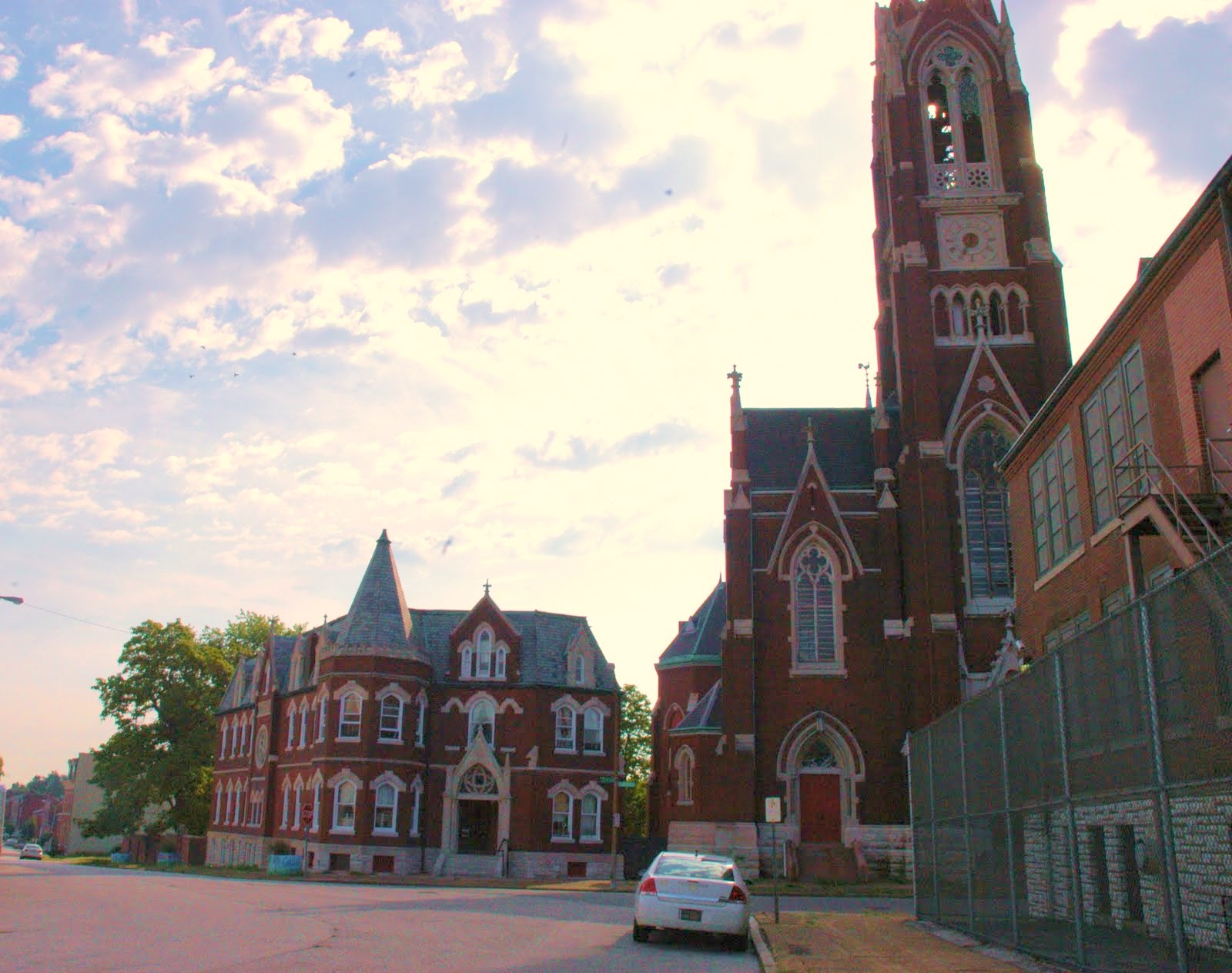

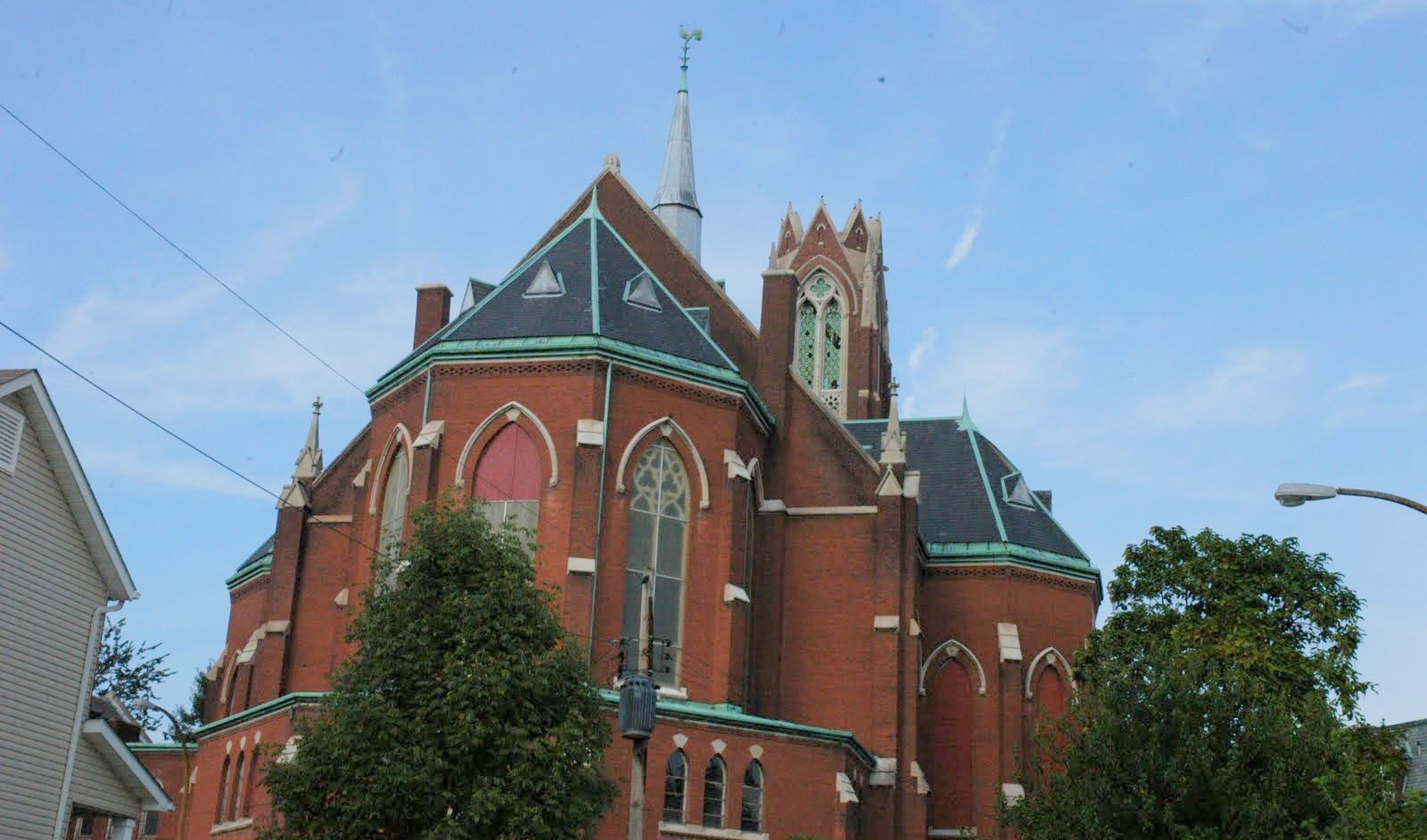
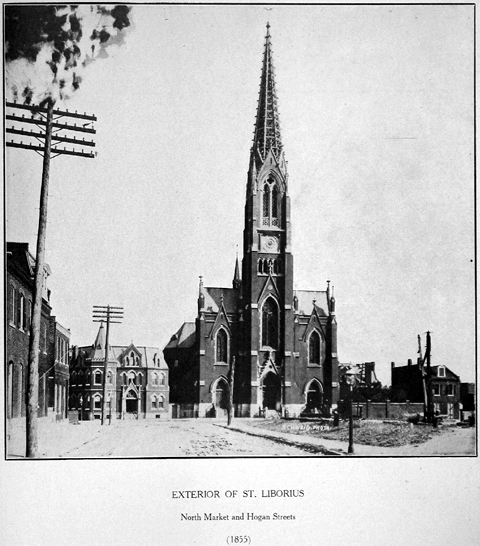
As usual, Built St. Louis has a great pictorial history. Here’s just one:
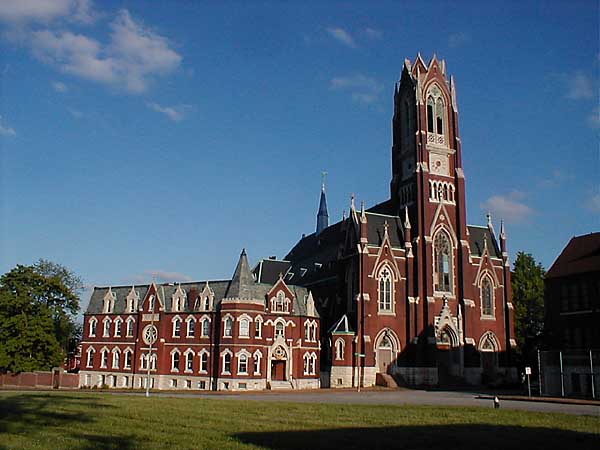
The second treasure of St. Louis Place is St. Louis Avenue which is straight up amazing through this part of town. There are several streets in St. Louis that should be heralded as some of the best in the nation, and this is one of them. You won’t believe how beautiful this is; and, imagine what could be with some investment and new ideas. In 2011 parts of the neighborhood were nominated for historic district designation. Let’s face it, it’s going to require tax credits and more to keep this beautiful area intact.
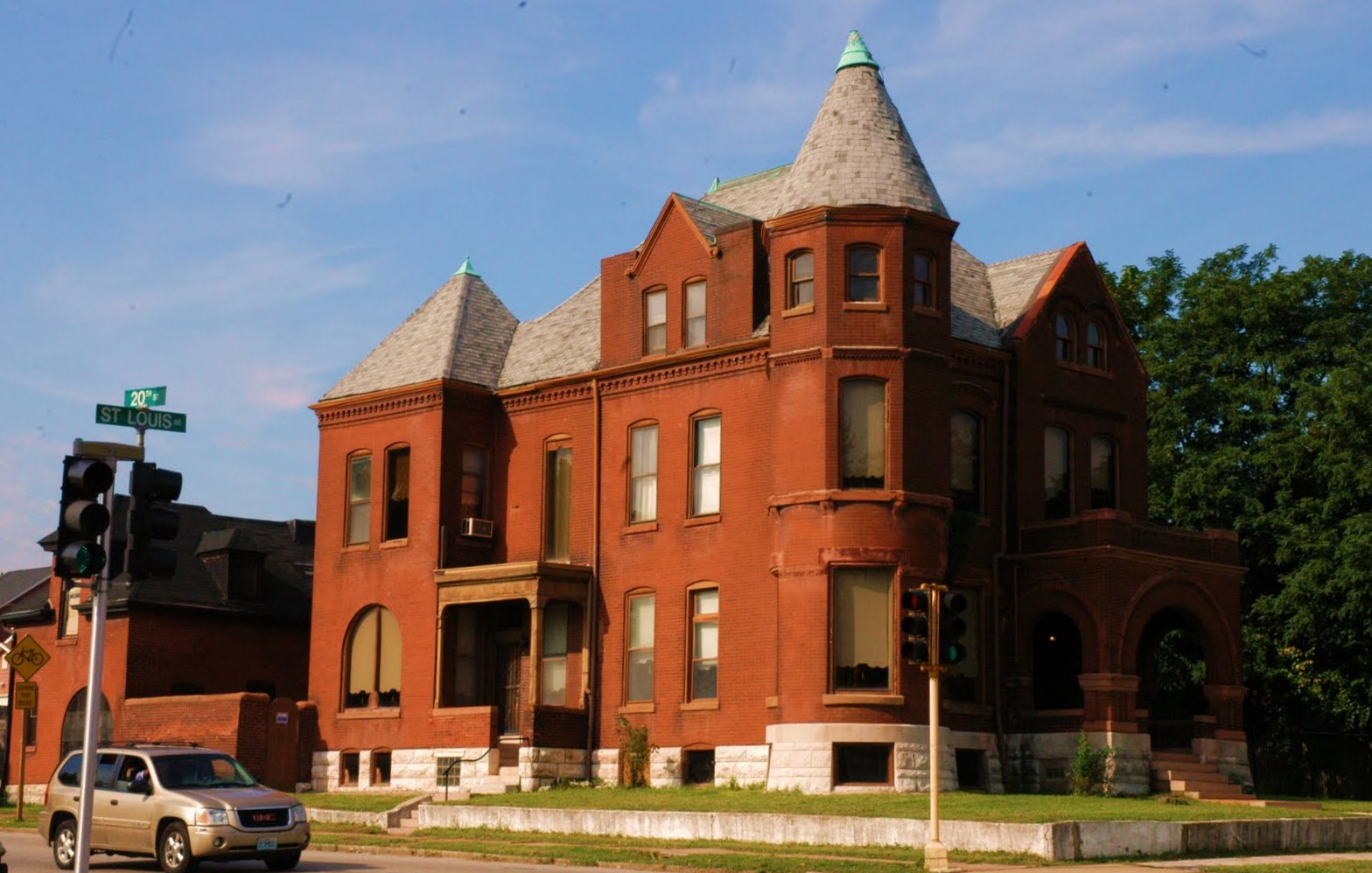
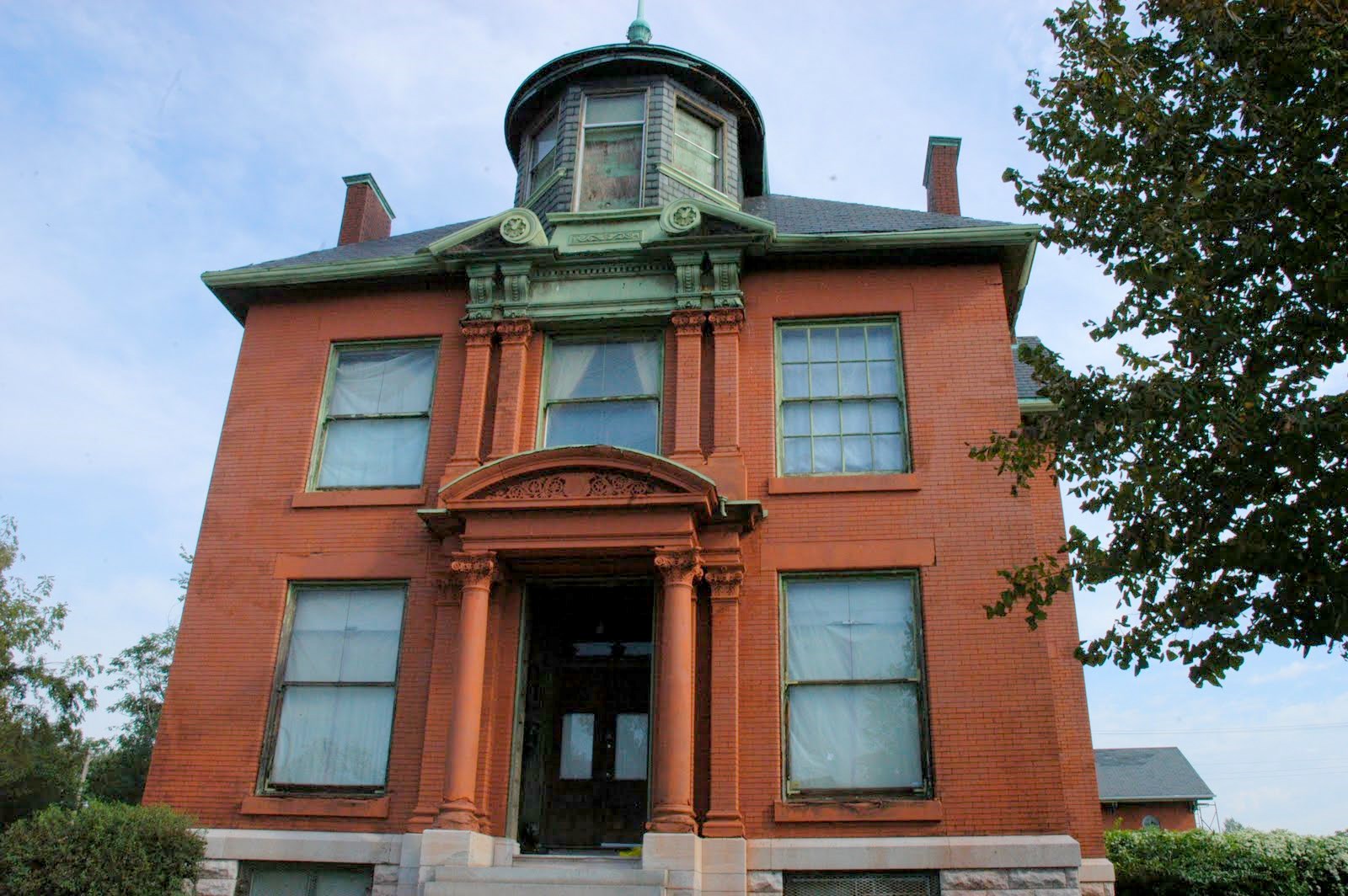


A flyer produced by the Preservation Research Office:
Proposed Saint Louis Place Historic District
This is the first I’ve heard of the Griot Museum of Black History. It’s housed in a beautifully restored building right along St. Louis Avenue:

More beauties along St. Louis Avenue:


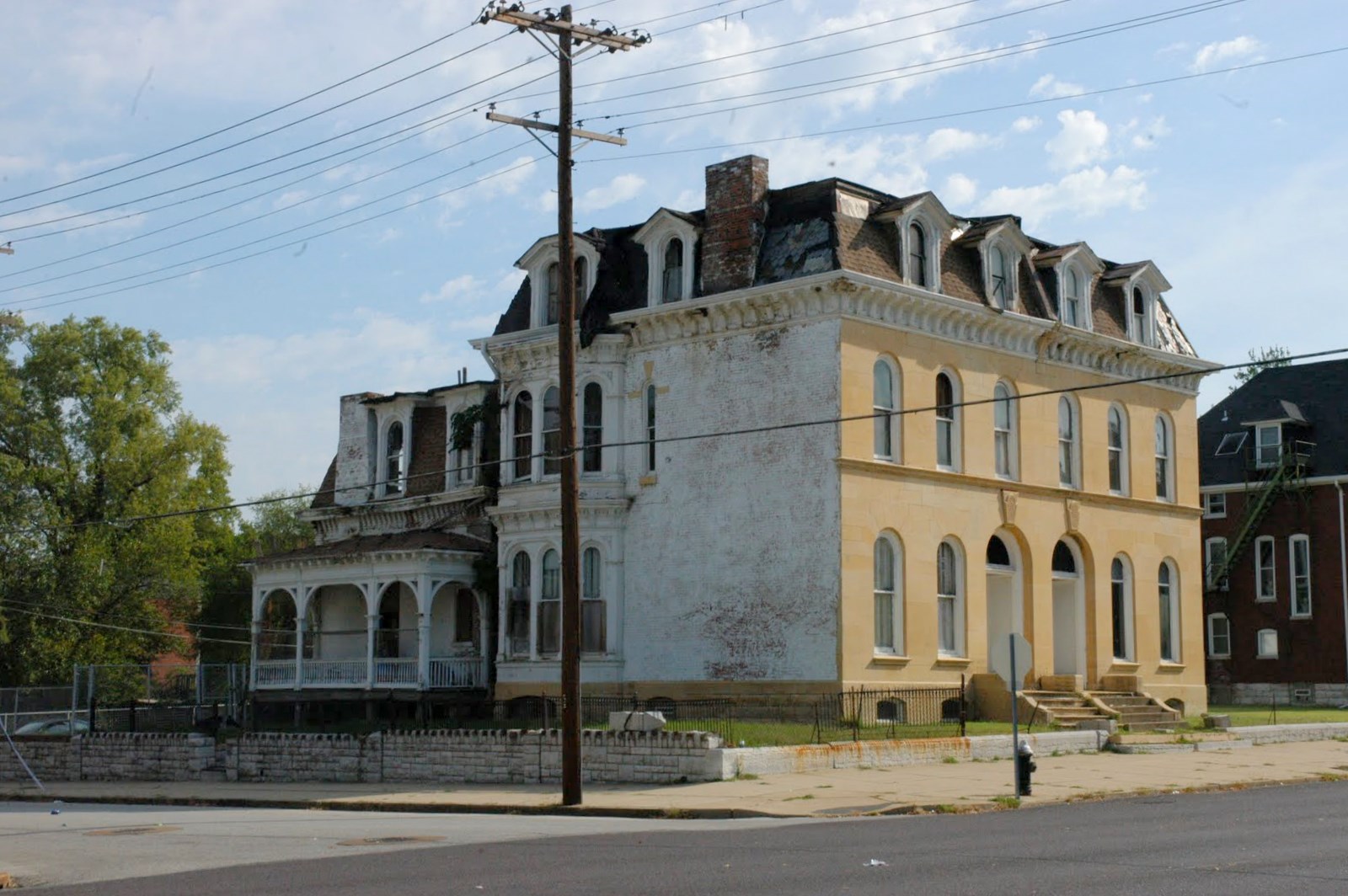
The third charm of St. Louis Place is the former Columbia Brewery which was purchased by Falstaff in 1948 (from falstaffbrewing.com):
1948: Falstaff purchases the Colombia Brewery, which becomes plant 5, in St. Louis and becomes listed on the New York Stock Exchange. This company had been opened in 1892 at the corners of 20th and Madison Streets in St Louis. In 1906 it had merged with the Independent Breweries Company, which also had been part of the Griesedieck’s first brewing enterprise. It was the showcase brewery for Falstaff, and tours were held at this plant, not plants one or two. The Colombia brewery in East St Louis (which brewed Lemp Beer in 1939), which produces Falstaff for a short period of time, is closed. The buildings are sold for a mere $35,000. The East St Louis site was torn down to make way for a Sears store, which later becomes the offices of the public schools. Falstaff also move their headquarters to the Continental Bank Building in St Louis.
This former brewery was converted to apartments starting in 1987. The areas surrounding the brewery are among the nicest spots in the neighborhood.
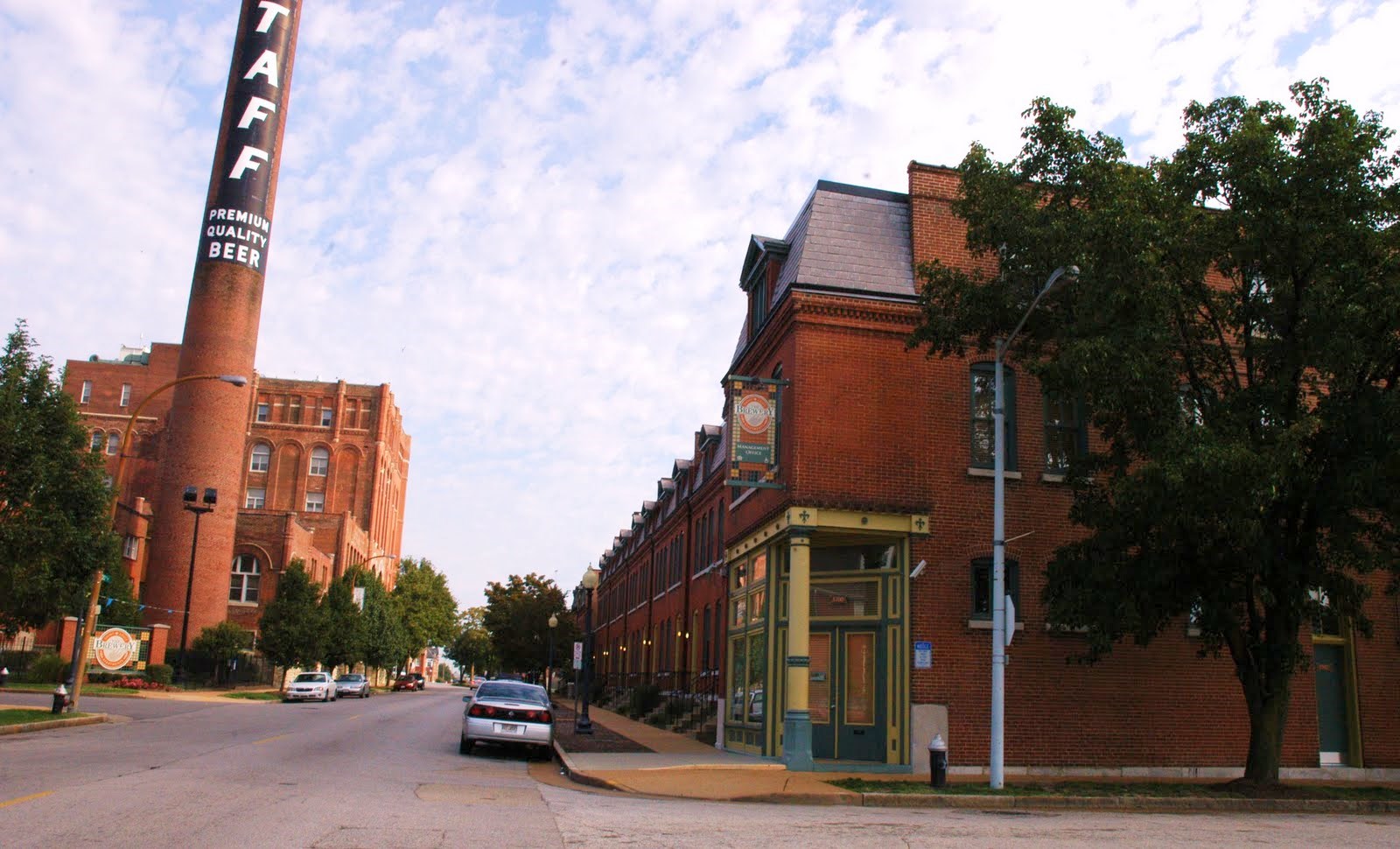

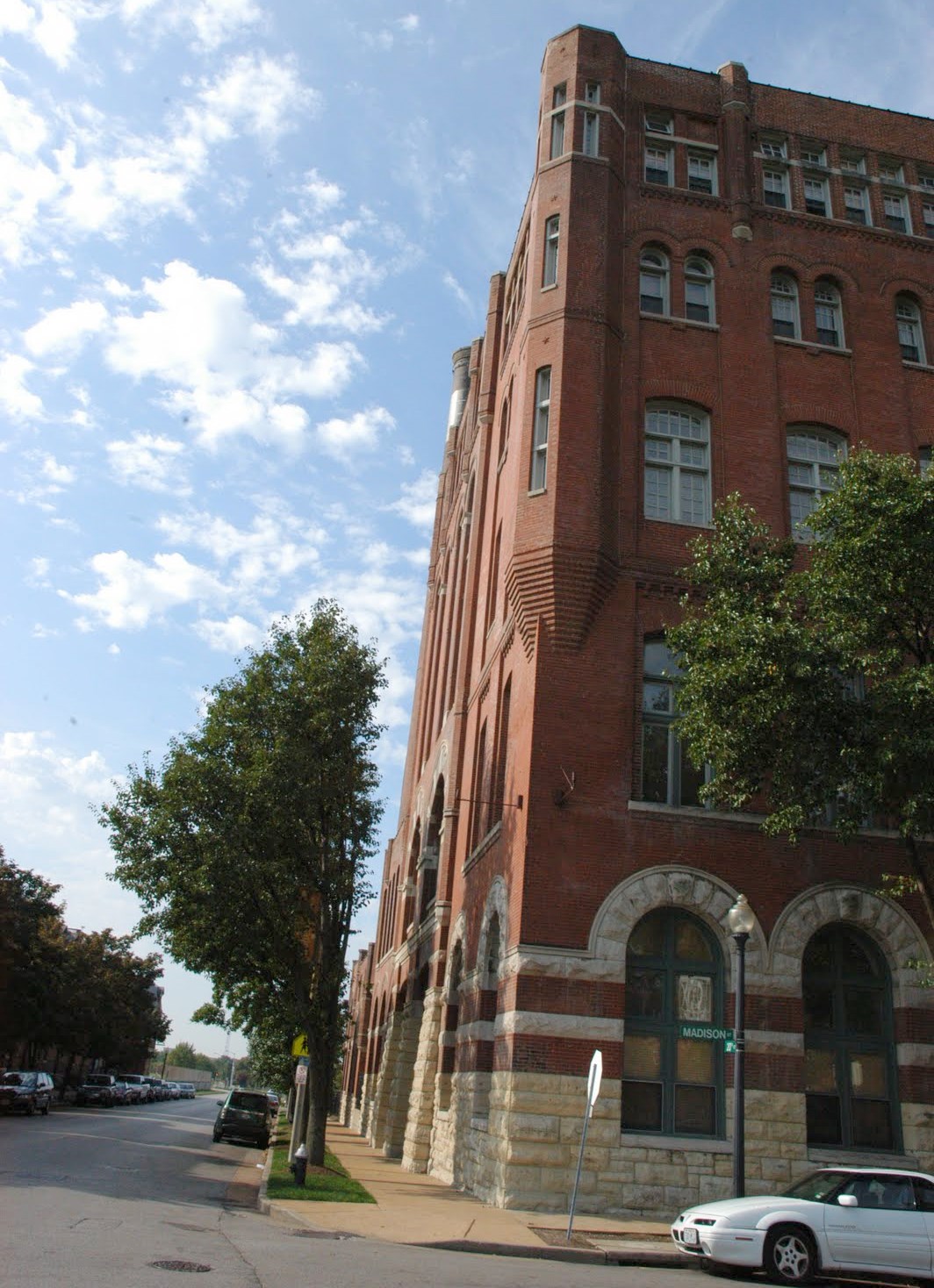
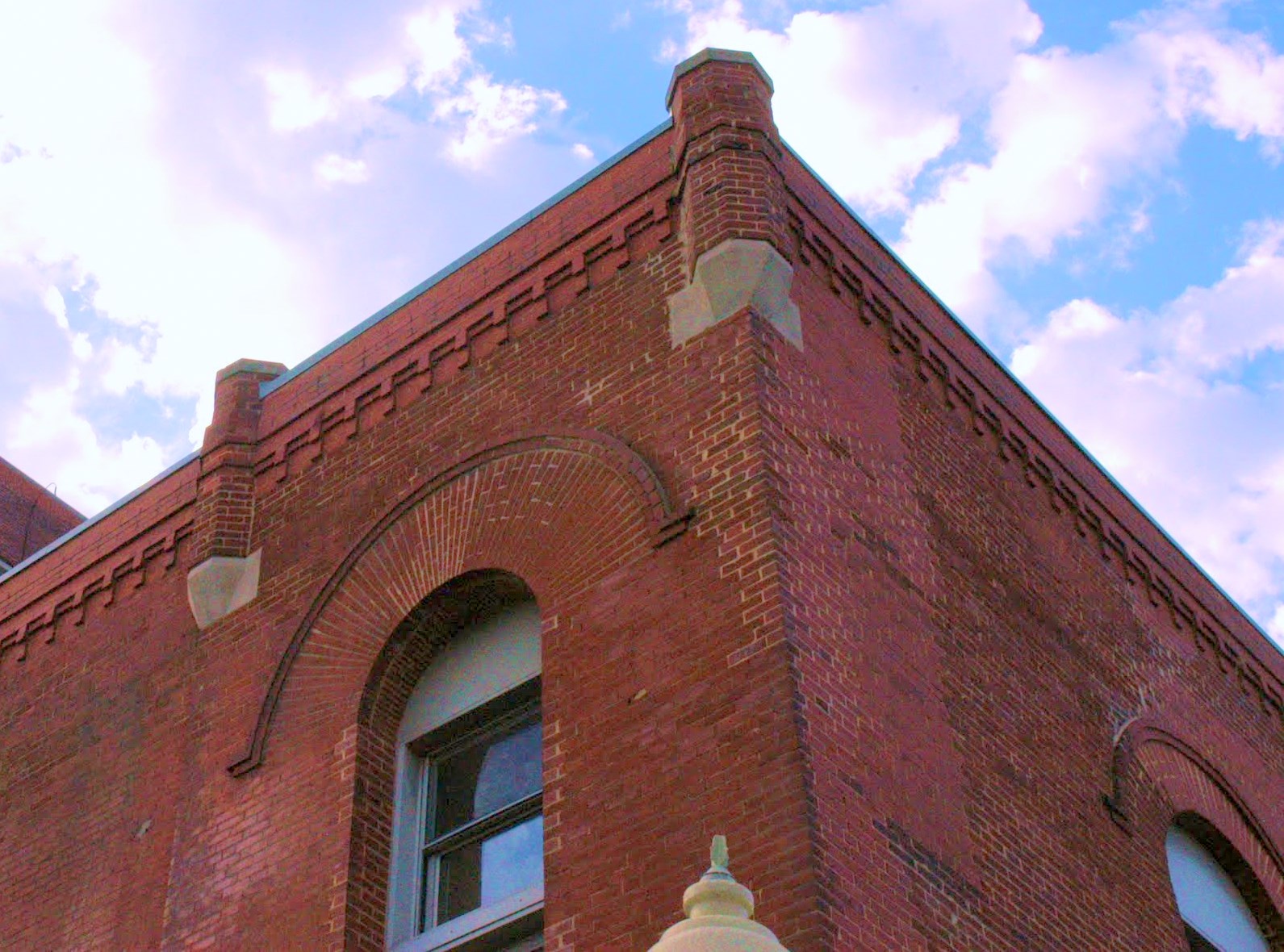

Many of the dwellings in and around the former brewery are contemporary, but don’t stand out like a sore thumb. In fact, they fit in quite well, and seem to bring the highest level of density to the area. There were people on the streets walking dogs, kids playing, etc., something not evident in other parts of St. Louis Place.

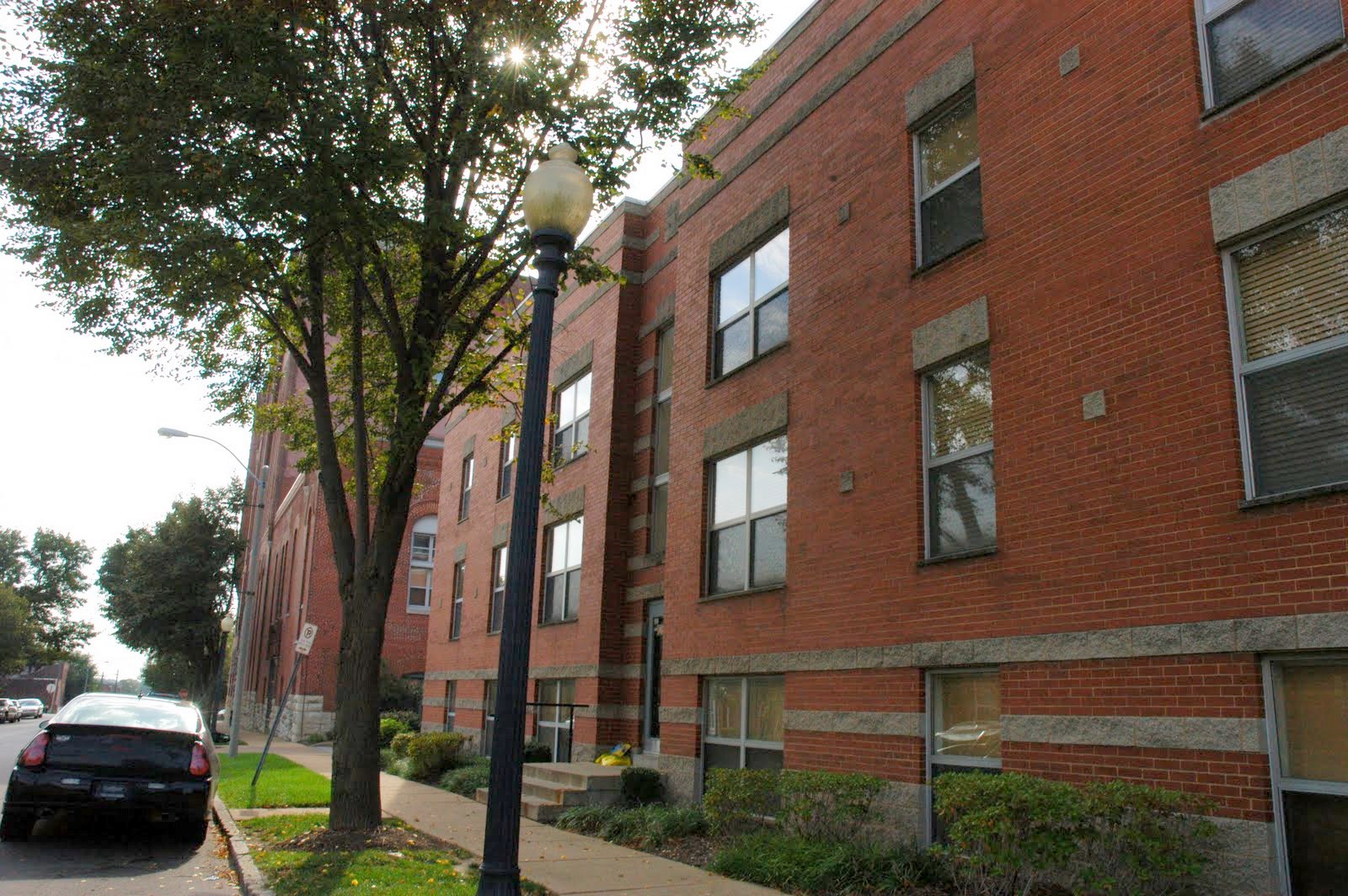

As you can see this is not a neighborhood without hope. There is huge potential to regain the original feel of the neighborhood, especially around the brewery and around the 3 grand churches that still exist. I was surprised that St. Louis Avenue isn’t heralded more, as in my opinion, it is among the most stunning architectural examples of St. Louis brick we have to offer. This part of town, must be saved and restored. I have hope that the amazing successes and positivity being seen in Old North St. Louis just to the east will continue to St. Louis Place.
Here’s one of three churches that are prominent works of art:


There are some with an eye on St. Louis Place’s future such as suburban developer Paul McKee who has some new ideas with his NorthSide project which spans St. Louis Place. But it appears that he’s not well received by the “legacy” and “thanks McKee” spray painted messages throughout the neighborhood that the natives are not hopeful and resistant to new ideas, investment and money (although I’d bet dimes to dollars that the anti-McKee commentary came from people who don’t live in SLP).
Here’s a McKee property with such commentary:
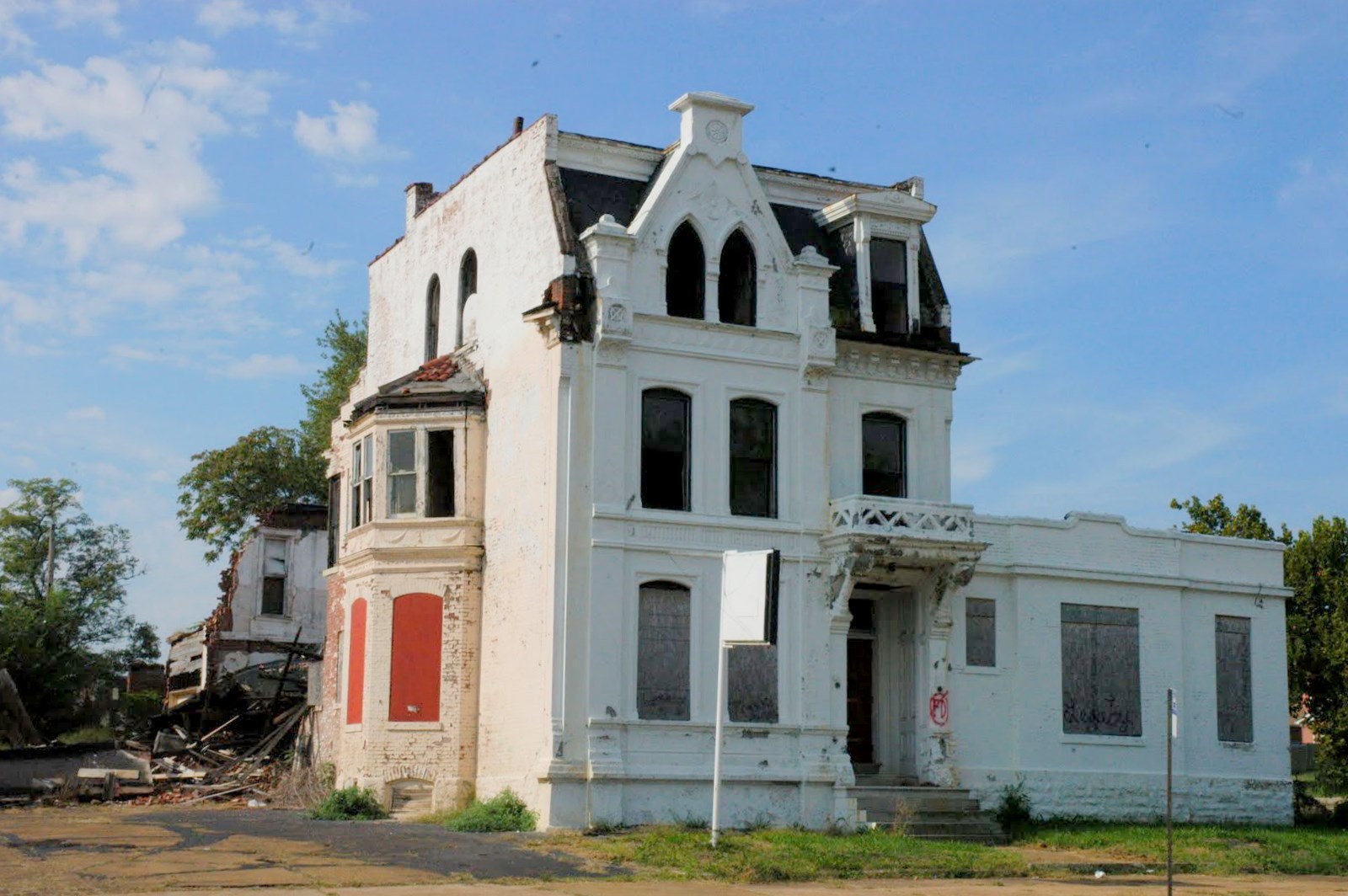

There are plenty of reasons to be pissed at McKee for not doing anything about brick rustlers and other ass holes that choose to destroy/dismantle these properties for a meager profit instead of getting a job like the rest of us. However, one of the things I’ve always thought curious is that because McKee is a white suburban businessman who doesn’t live in St. Louis, he is viewed with full-on skepticism and suspicion by people who live in his proposed development area and the city in general. Maybe rightfully so, we’ll see.
Whereas, the new developments that were openly ushered in by the current regime of neighborhood groups, aldermen and churches in recent years are decidedly suburban and awkward in nature. I hope McKee would be able to leave behind a more sustainable legacy than these:
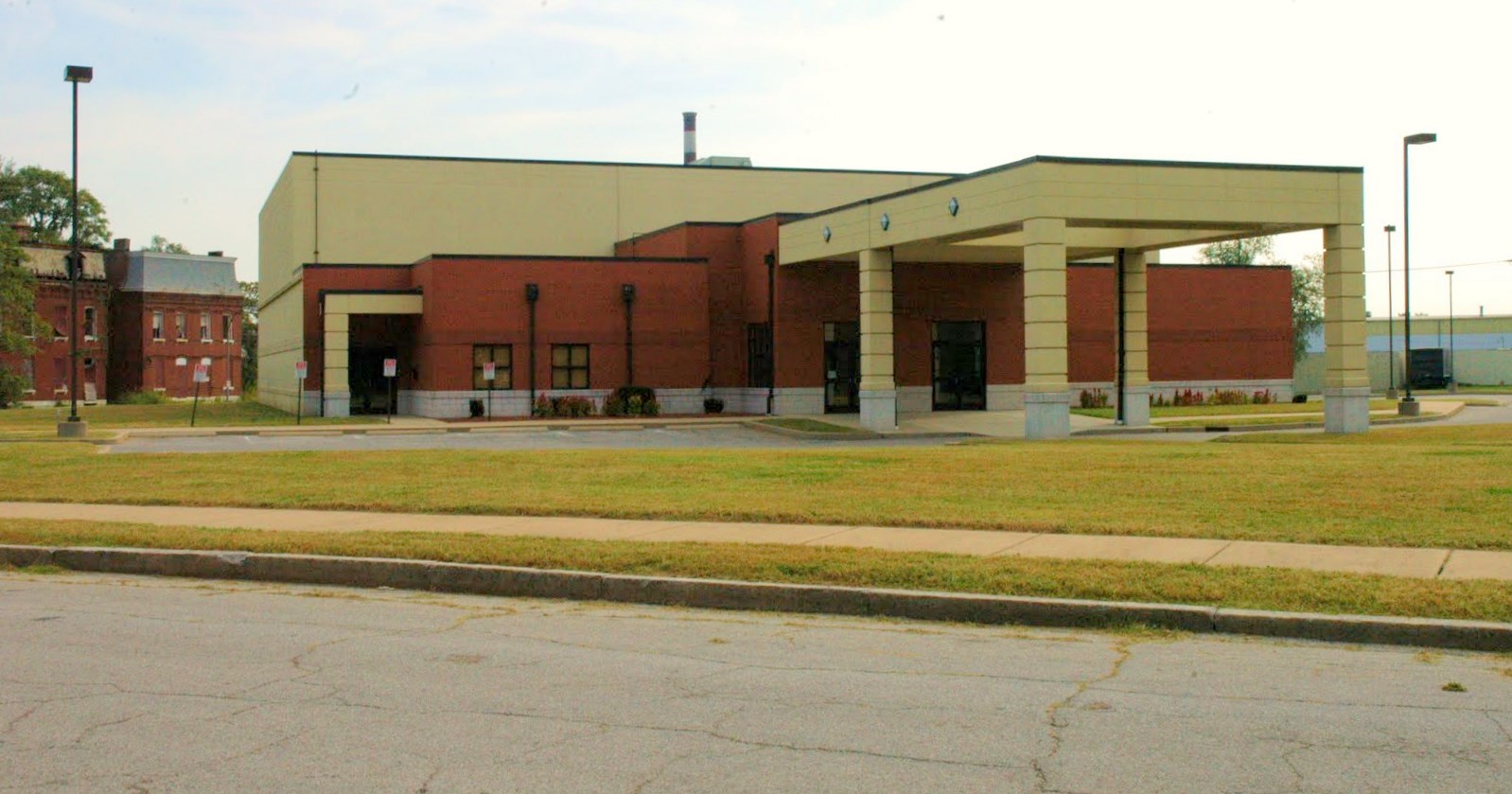


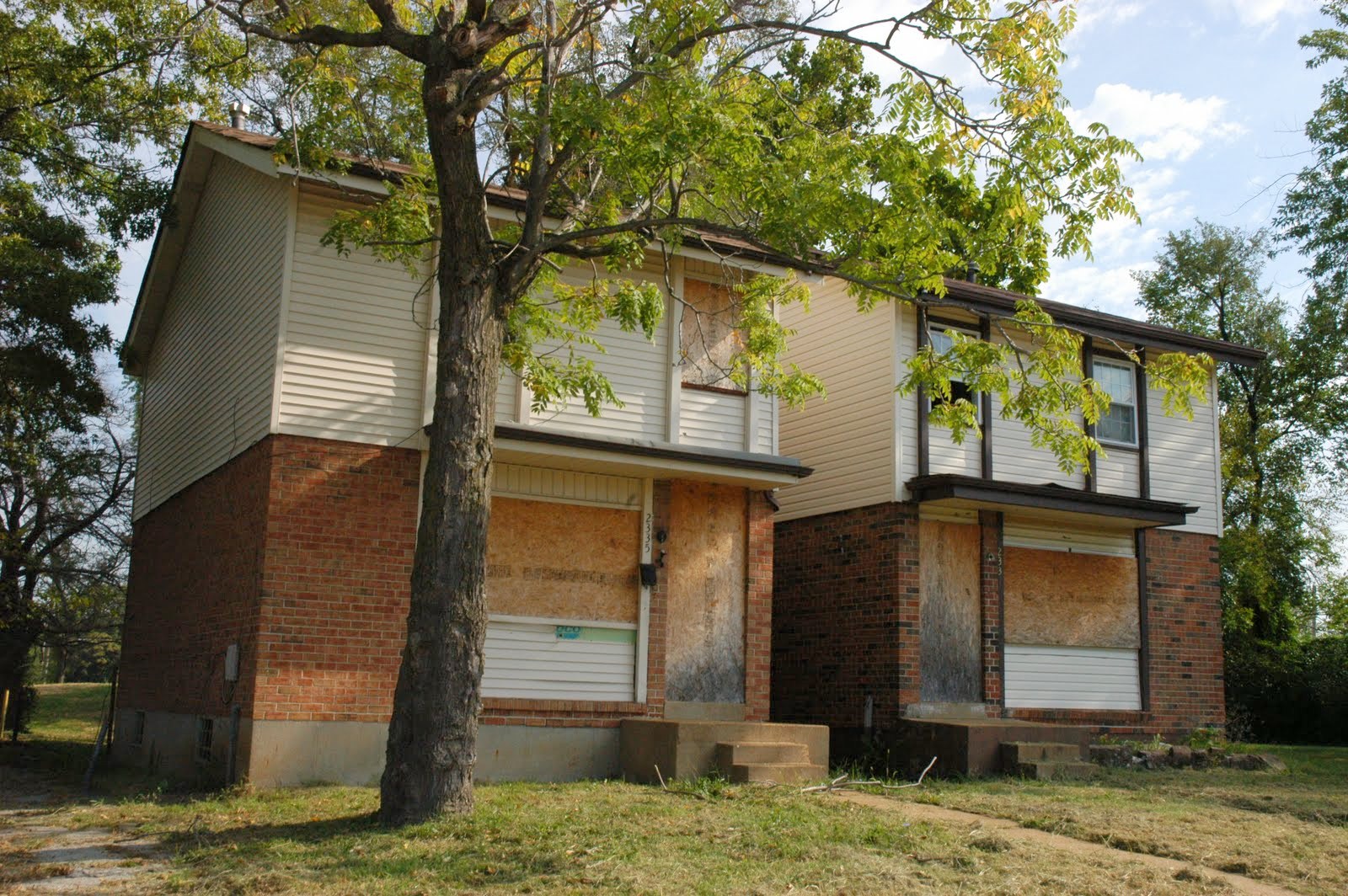


I hope readers know that I’m not criticizing the efforts of those who think the above is the answer for North City. We need more residents in the city…duh, and apparently, this is what people who want to live in St. Louis Place want. I don’t know what the answer is, but I’m pretty sure that no one will be documenting the importance of these suburban styled new homes in 100 years. I think we can do better, that’s all I’m saying.
There are other stretches of buildings that have either re-realized their potential through tasteful rehabs or are sitting in wait for some new uses to contribute to a cohesive, important place:
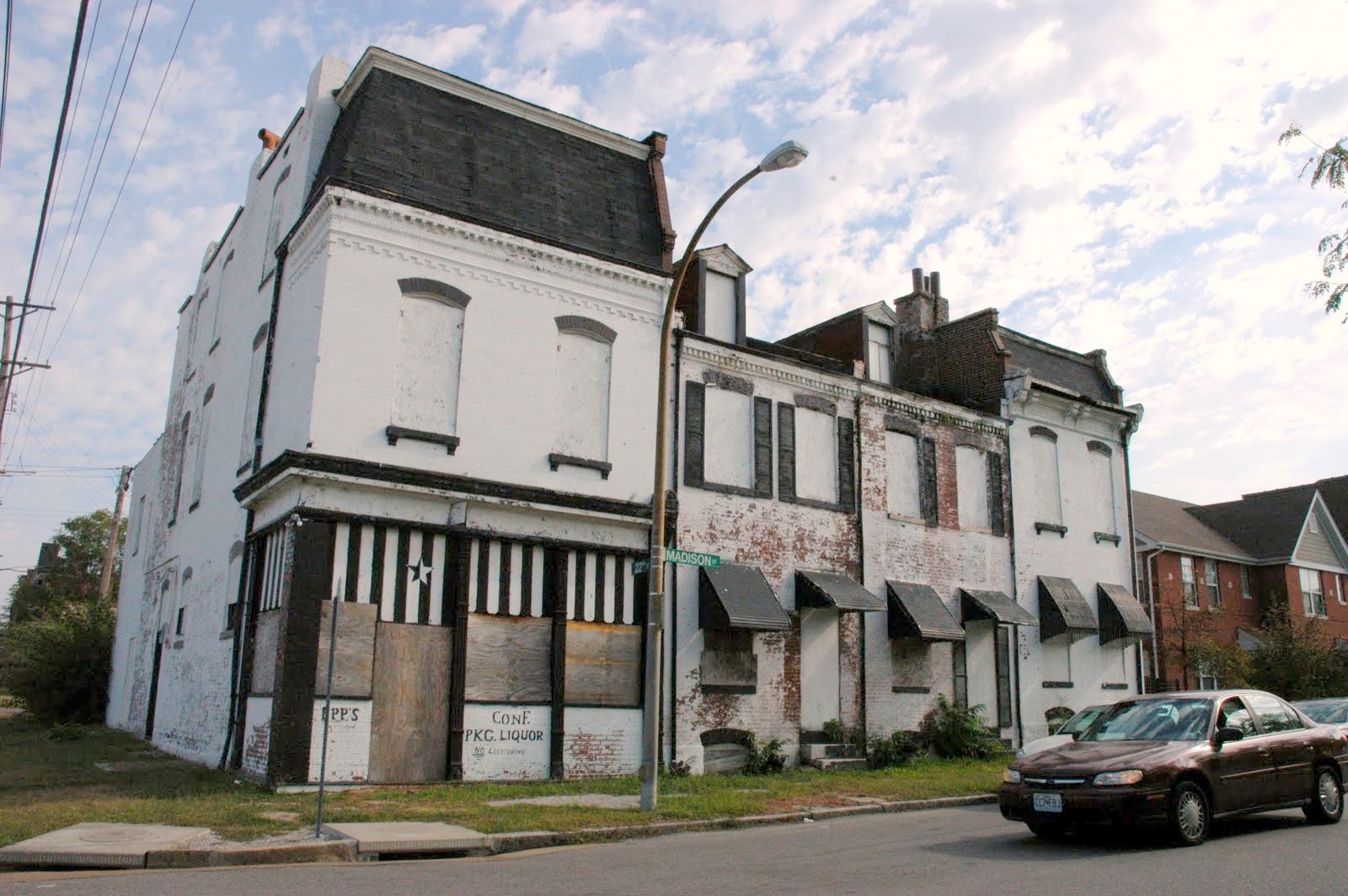


Luckily, there are other historical points of interest in St. Louis Place such as the Clemens Mansion (uncle of Mark Twain) which has been slated for a $13M renovation by a team including Paul McKee for some time. The renovation is once again on hold and after owning the historic property for several years, nothing beyond the most basic stabilization has occurred. It’s still very possible that these buildings will be lost. There is an excellent summary of the property and some great photos by Built St. Louis.
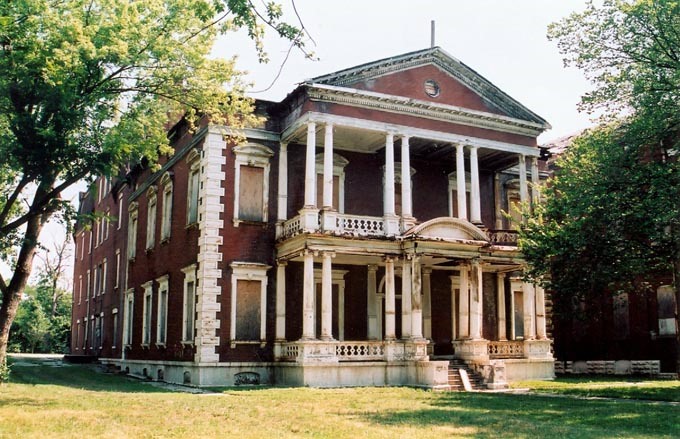

Here’s the view from Cass Avenue today:
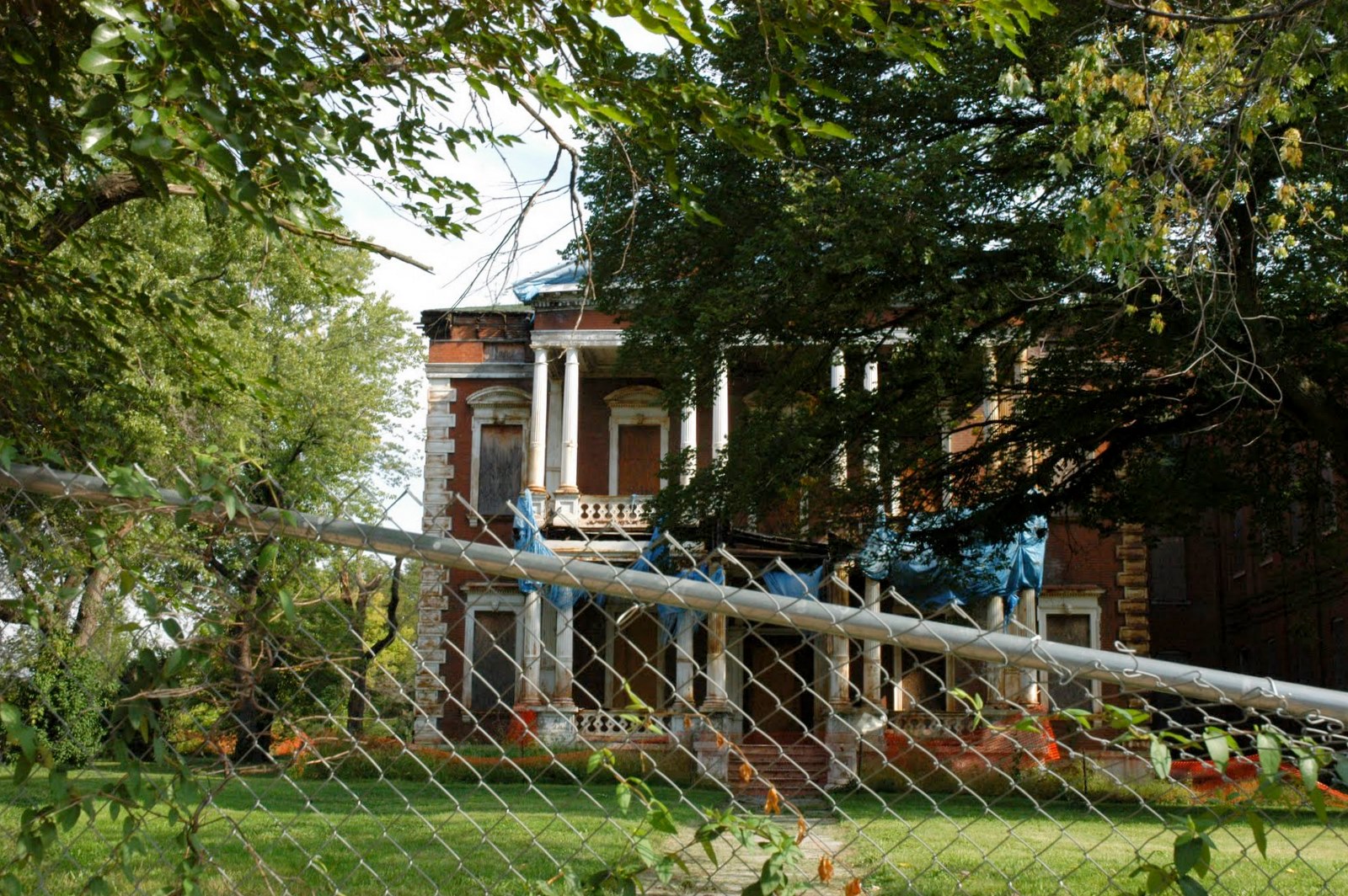
And a fancy rendering of what the McKee extreme makeover might look like:
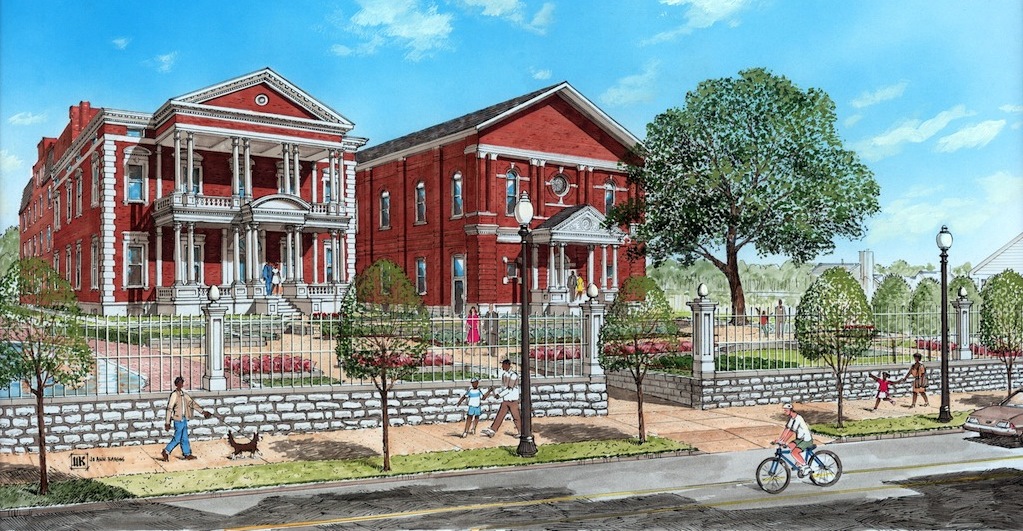
There is another really cool building that houses the Grenadier’s Club:

But that’s the relatively good news, there is bad news too. Urban prairies, ramshackle properties, almost no business/retail (outside of fast food chains), brick theft and dumping of all kinds are evident throughout the neighborhood. There are public health and safety concerns everywhere. On public dumping, these scenes usually tell a story, or at least provide a vignette of contemporary urban street life in a decayed neighborhood. Frankly, I’m fascinated with them; this scene of the empty oven cleaner can, huffing hose and stuffed animal was one I thought worth sharing:
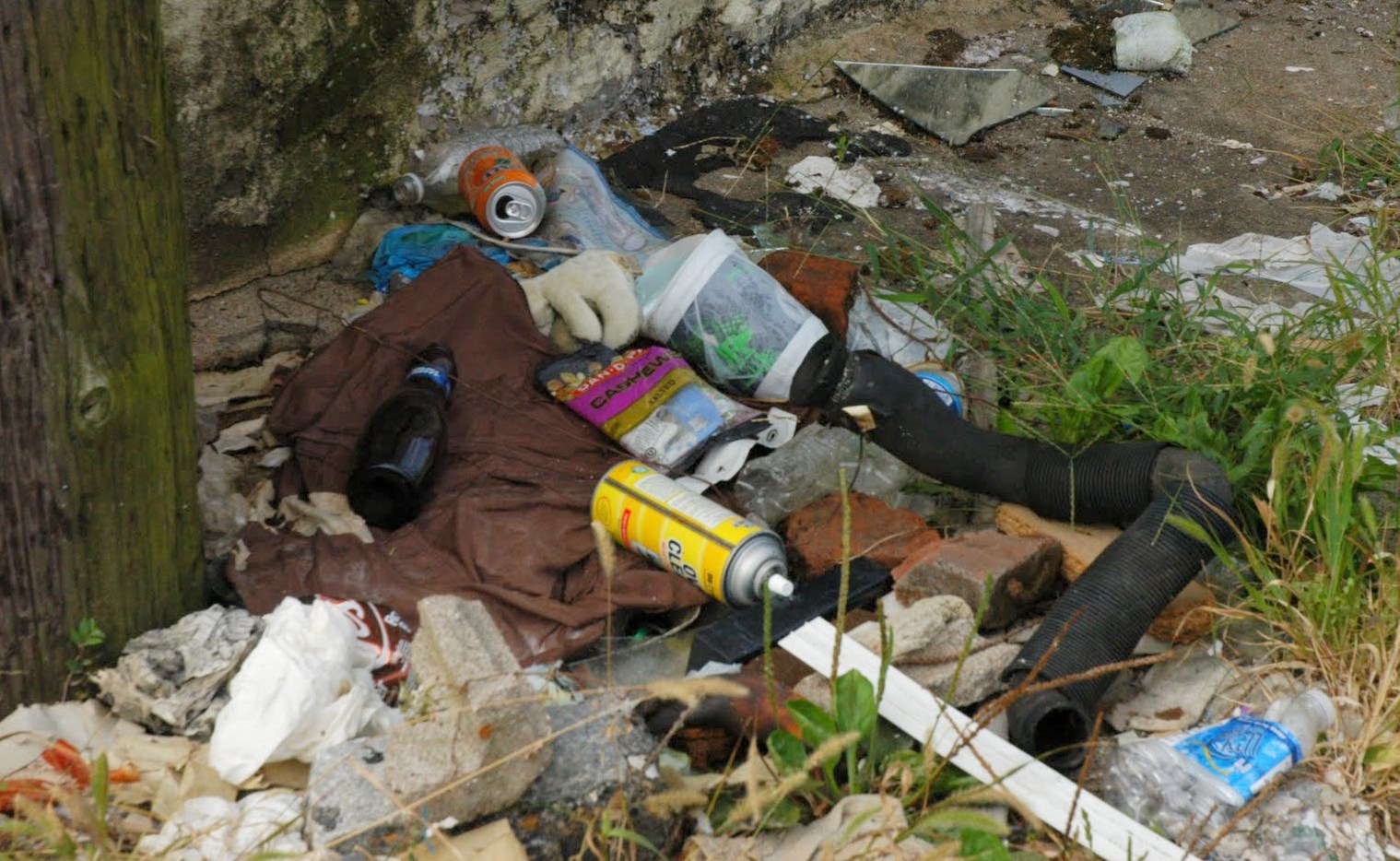
Urban prairies:

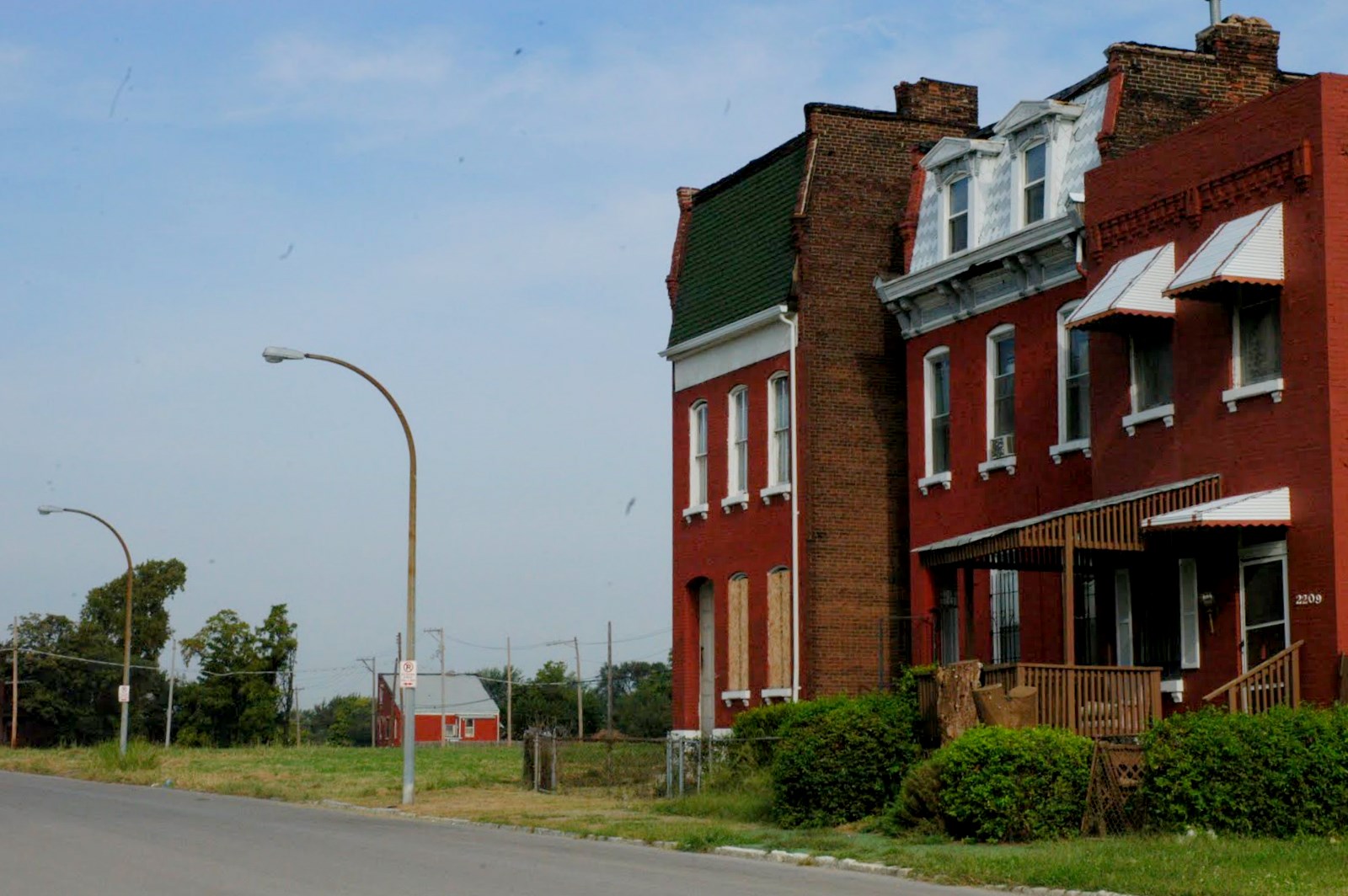
Falling and crumbling structures sometimes block the streets, and certainly block many of the sidewalks.
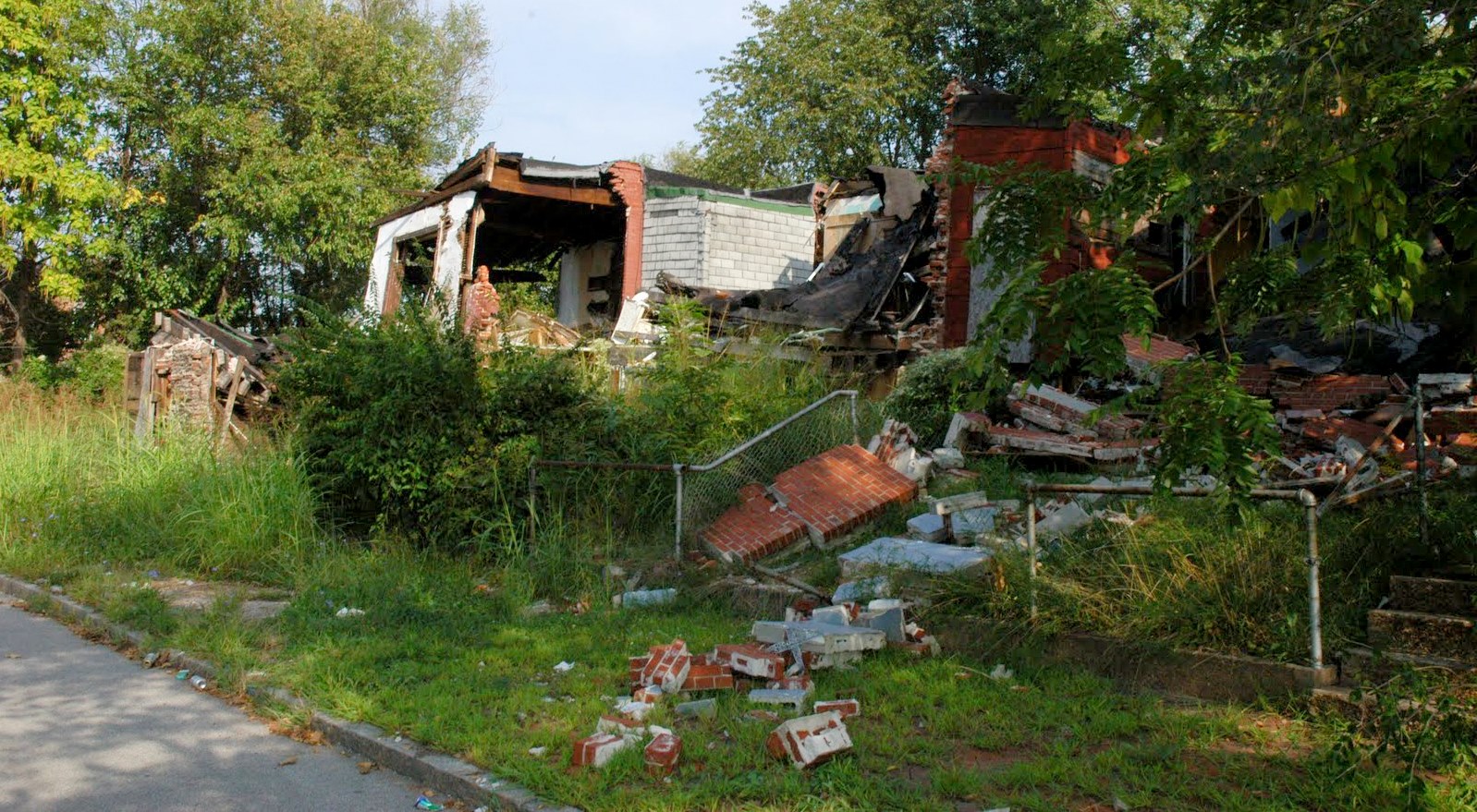
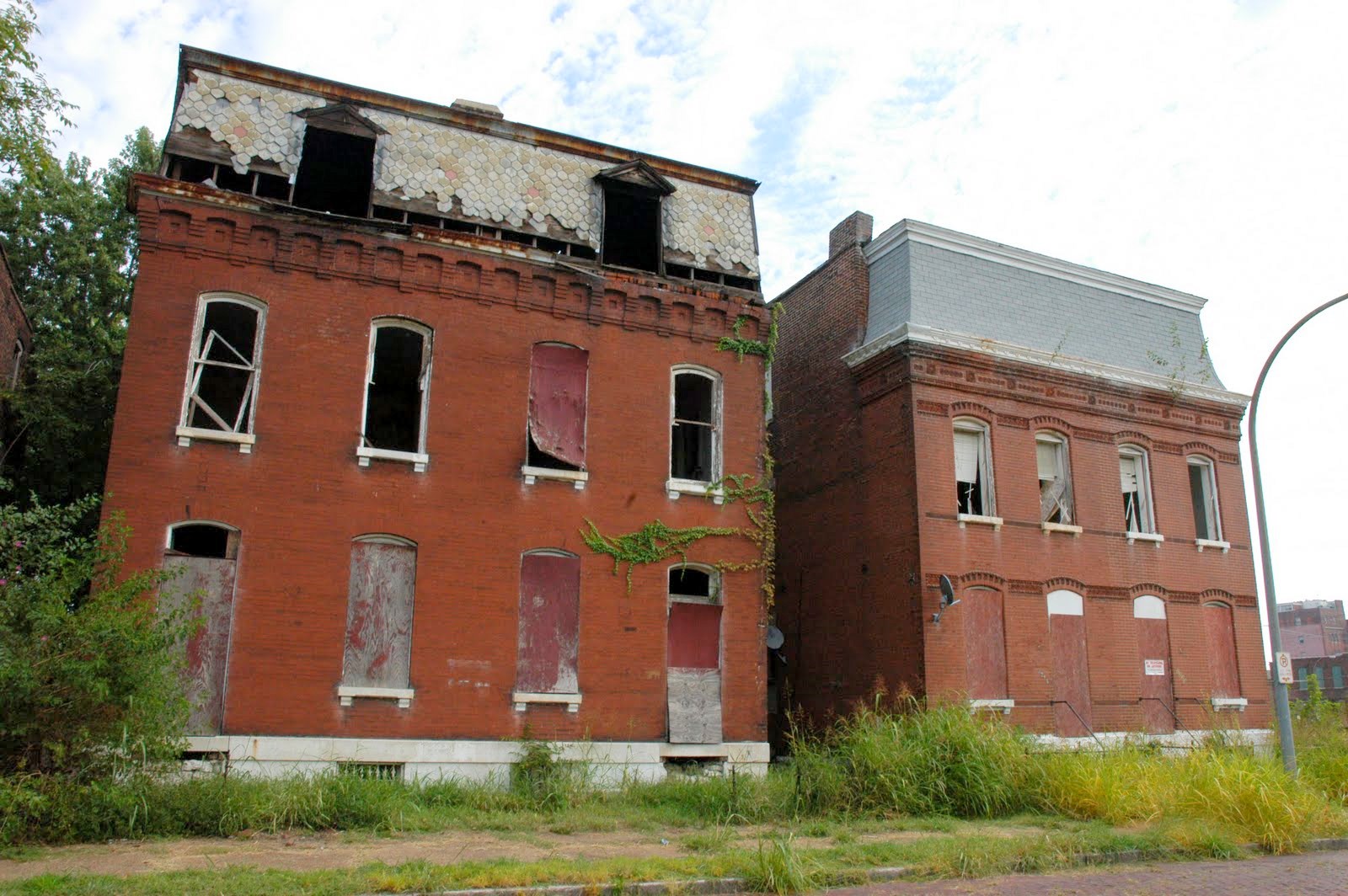
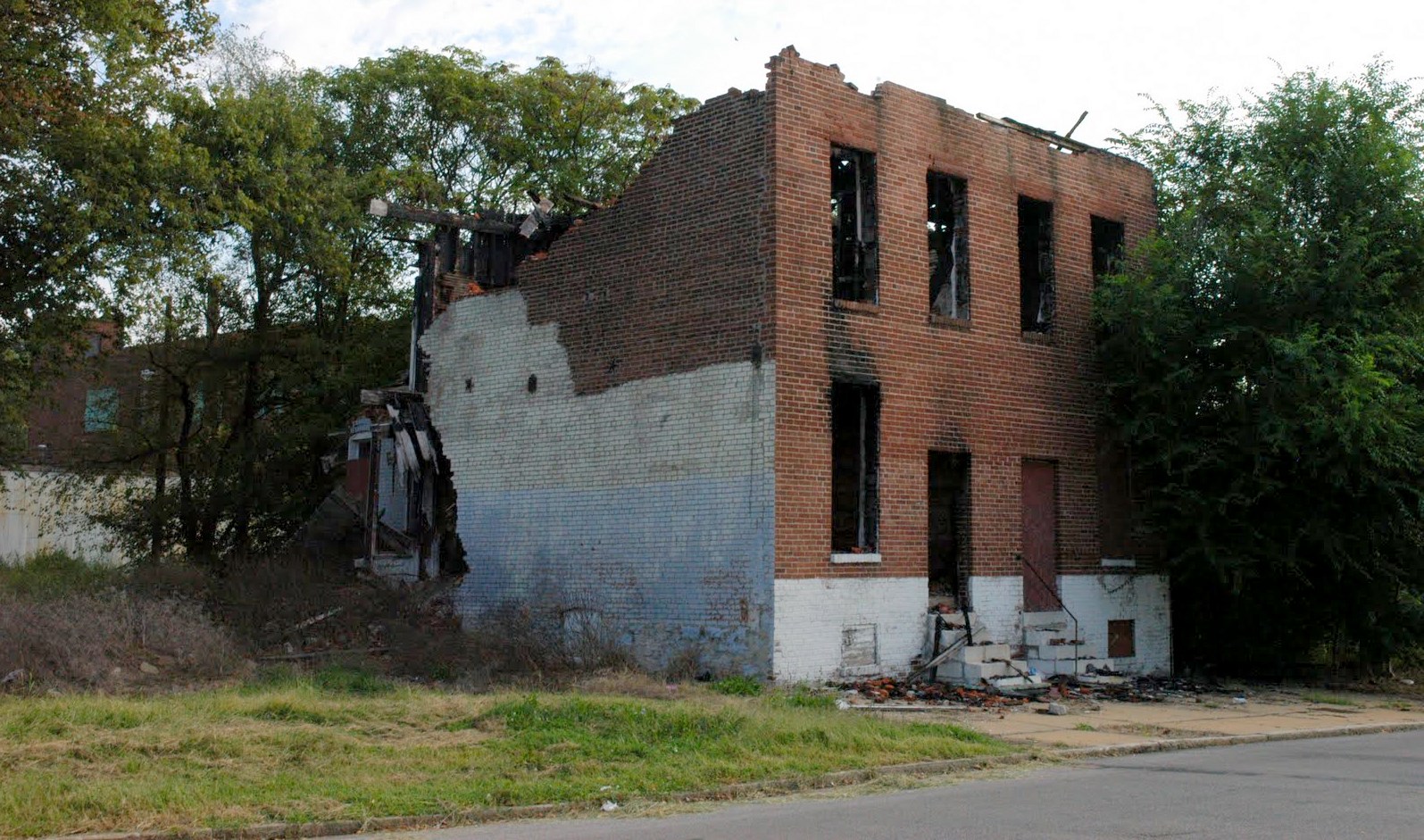

There are many more like the above examples.
Most of the schools that once served the area have been closed:

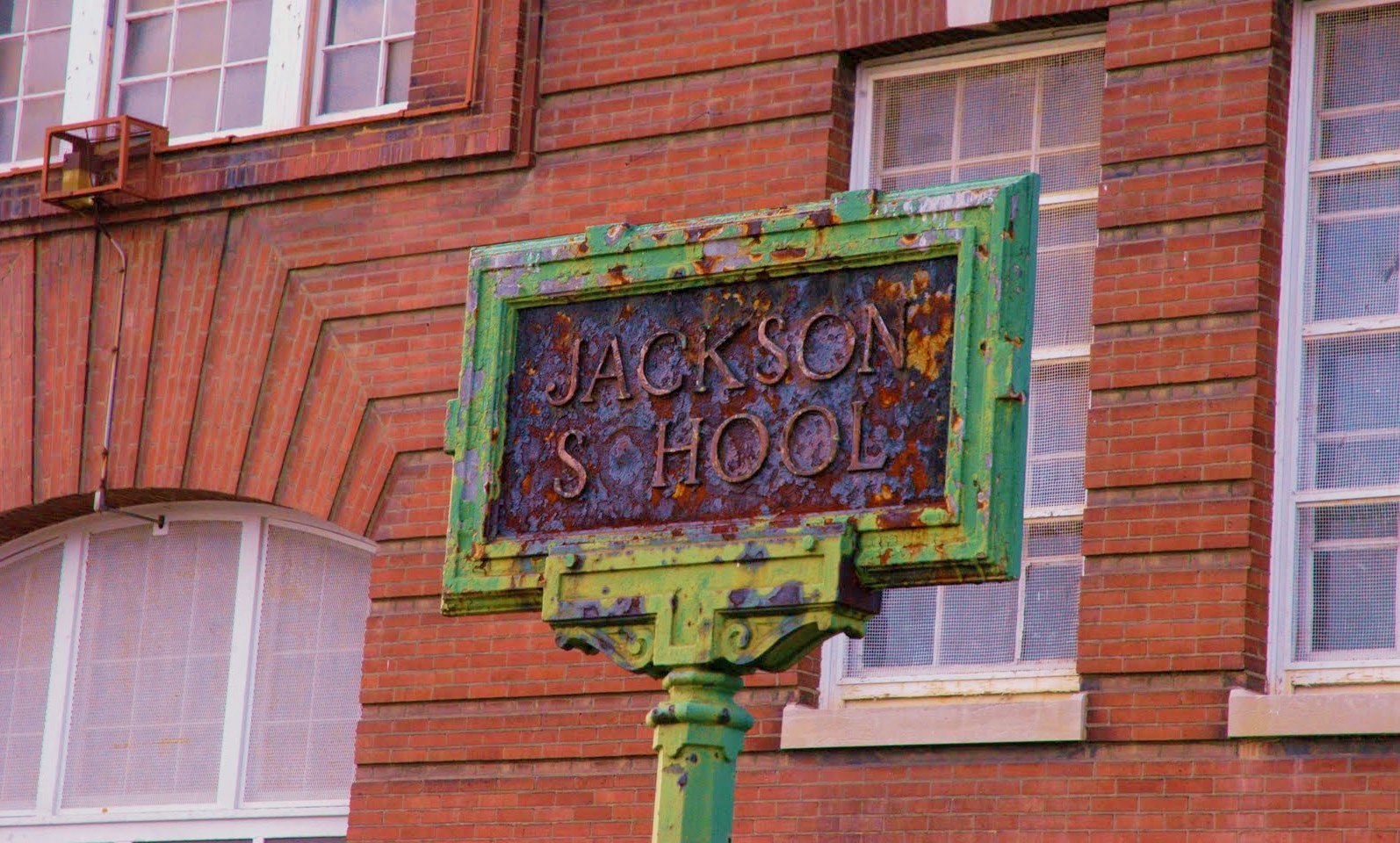
Like many former St. Louis public school buildings, Jackson continues to sit empty, awaiting a buyer that likely will never appear:
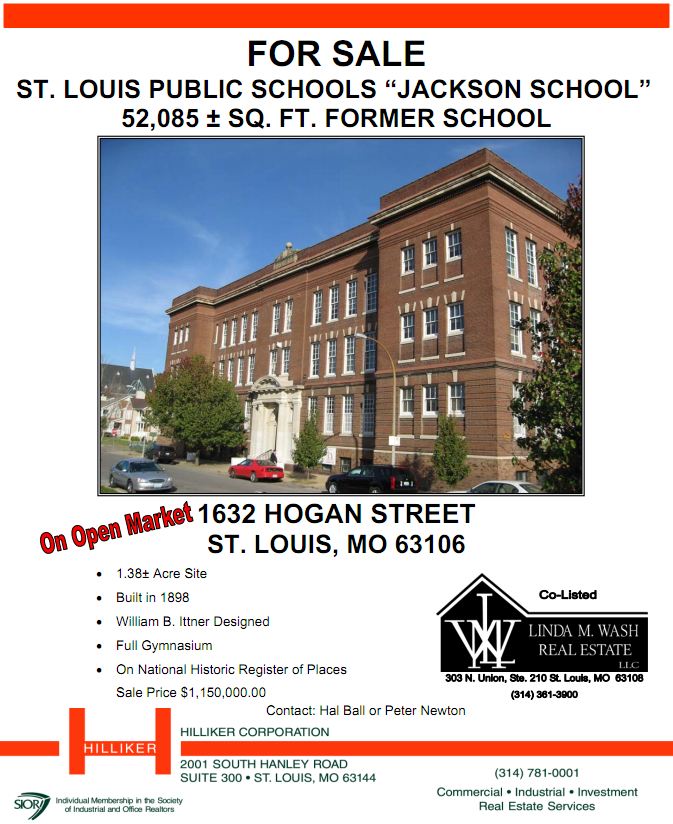
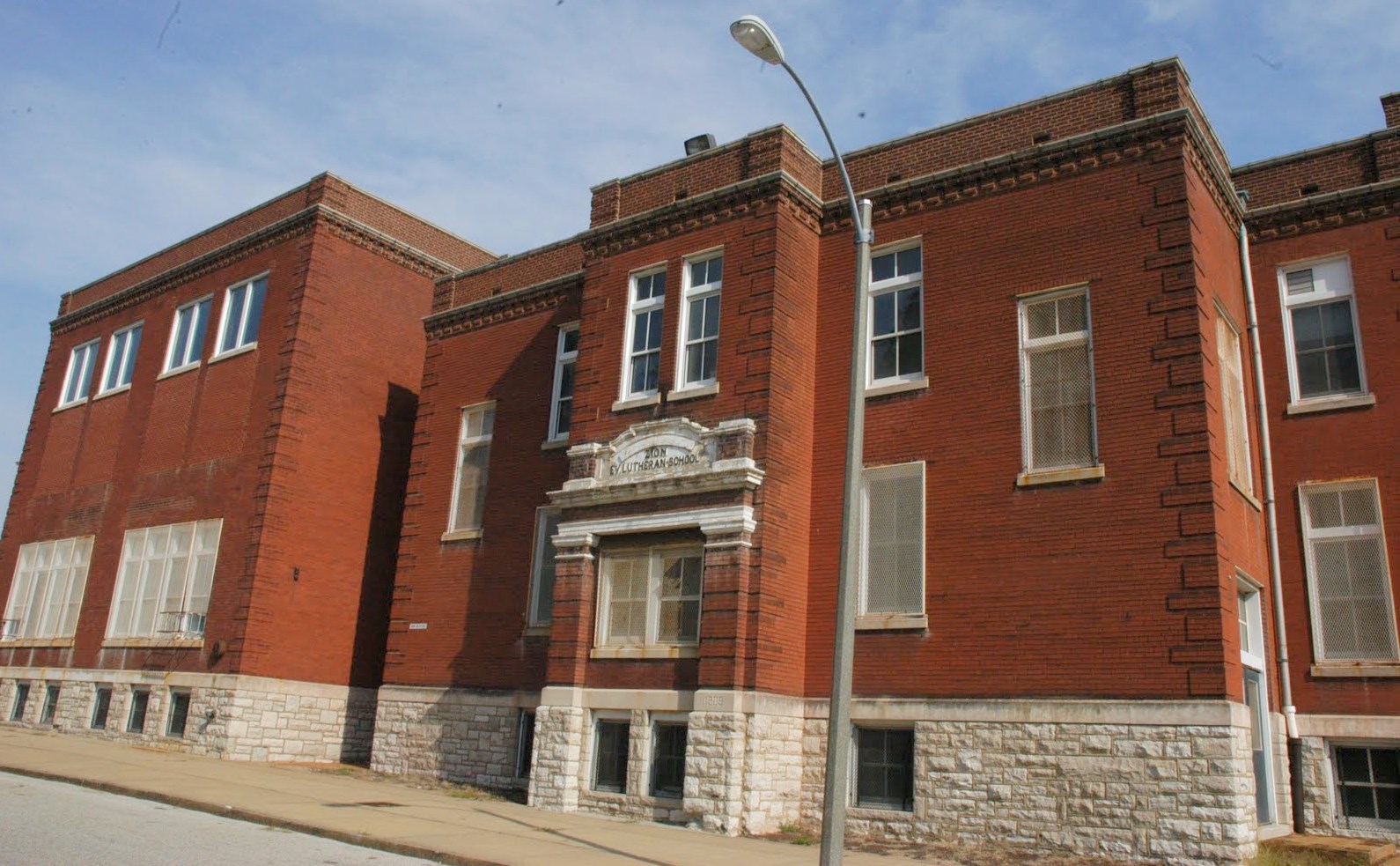
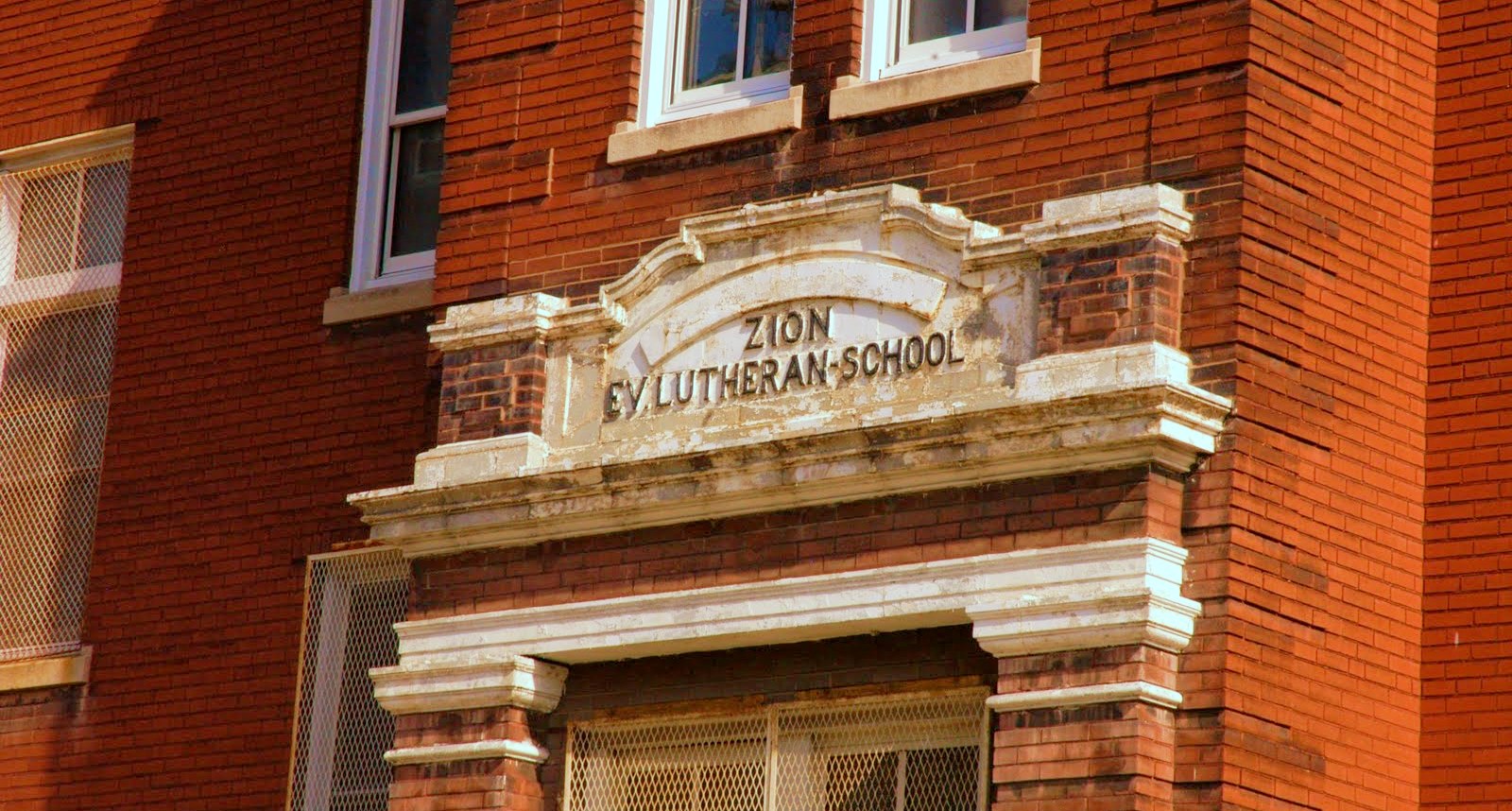
But there is the cool mid-century modern Blewett Middle School:
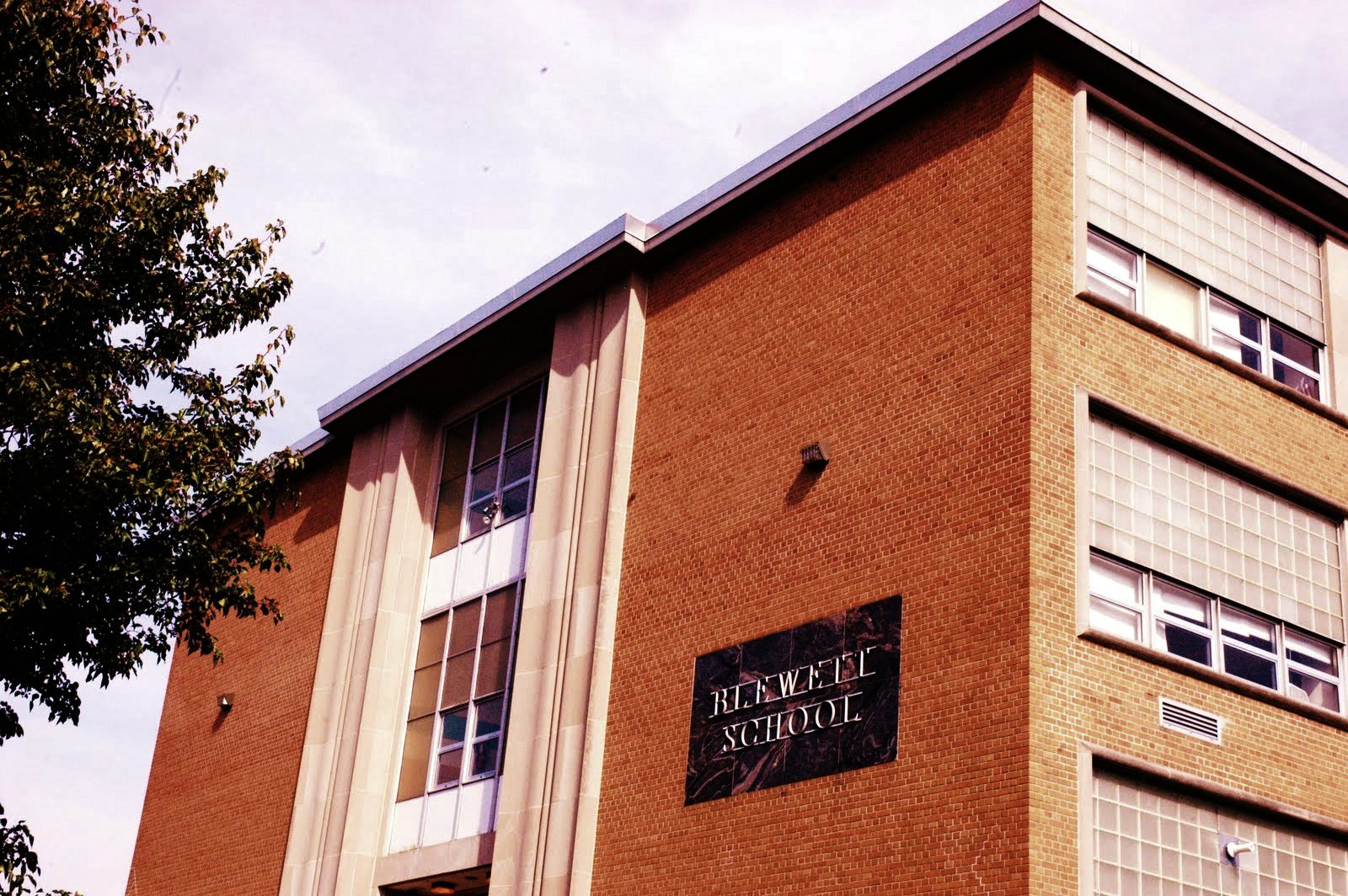
One of the early St. Louis families of politicians/merchants were the Mullanphy’s; and one of their former buildings appears to have lost one of its balconies recently. Of course, it’s in danger of losing much more:
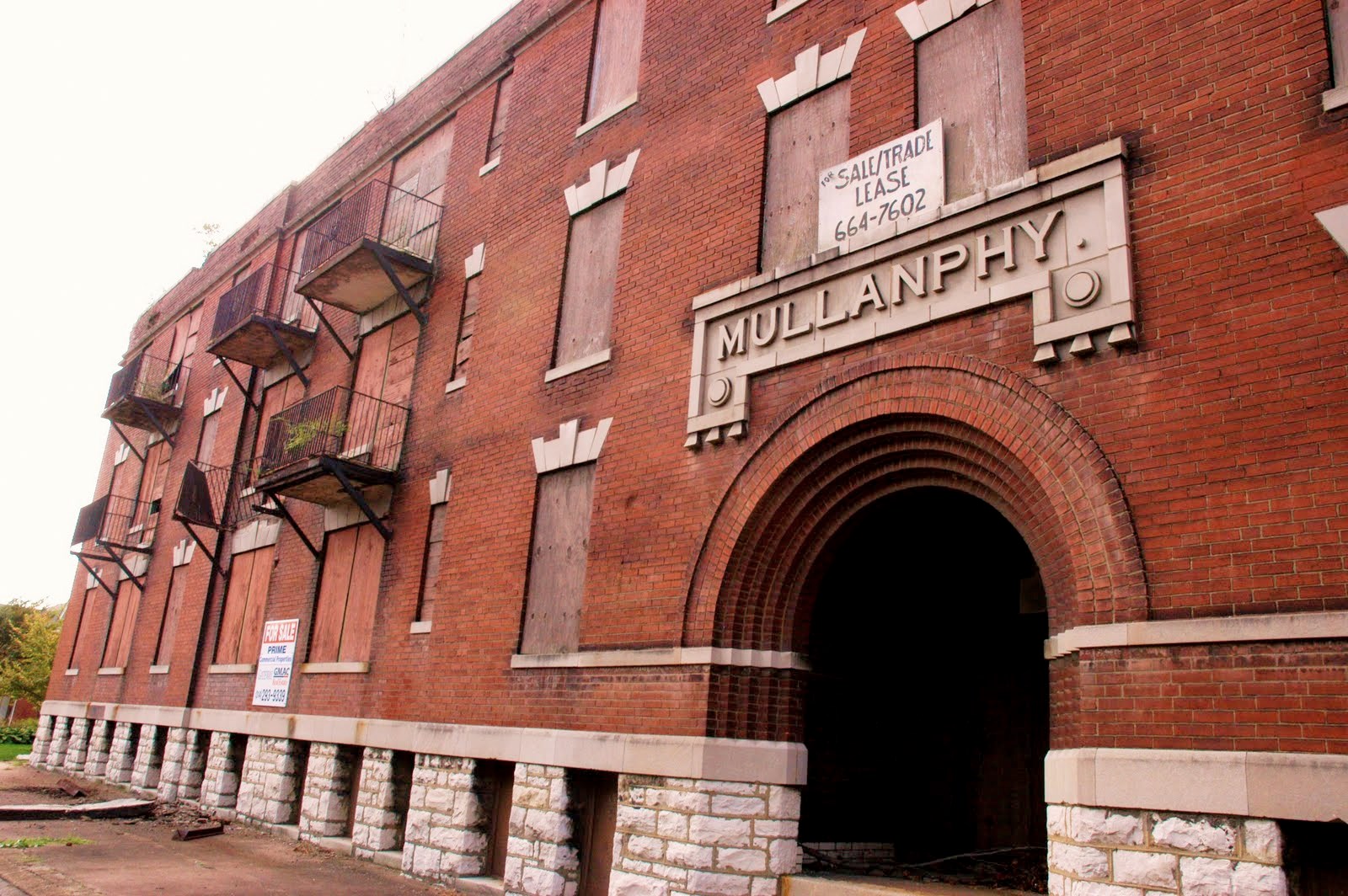

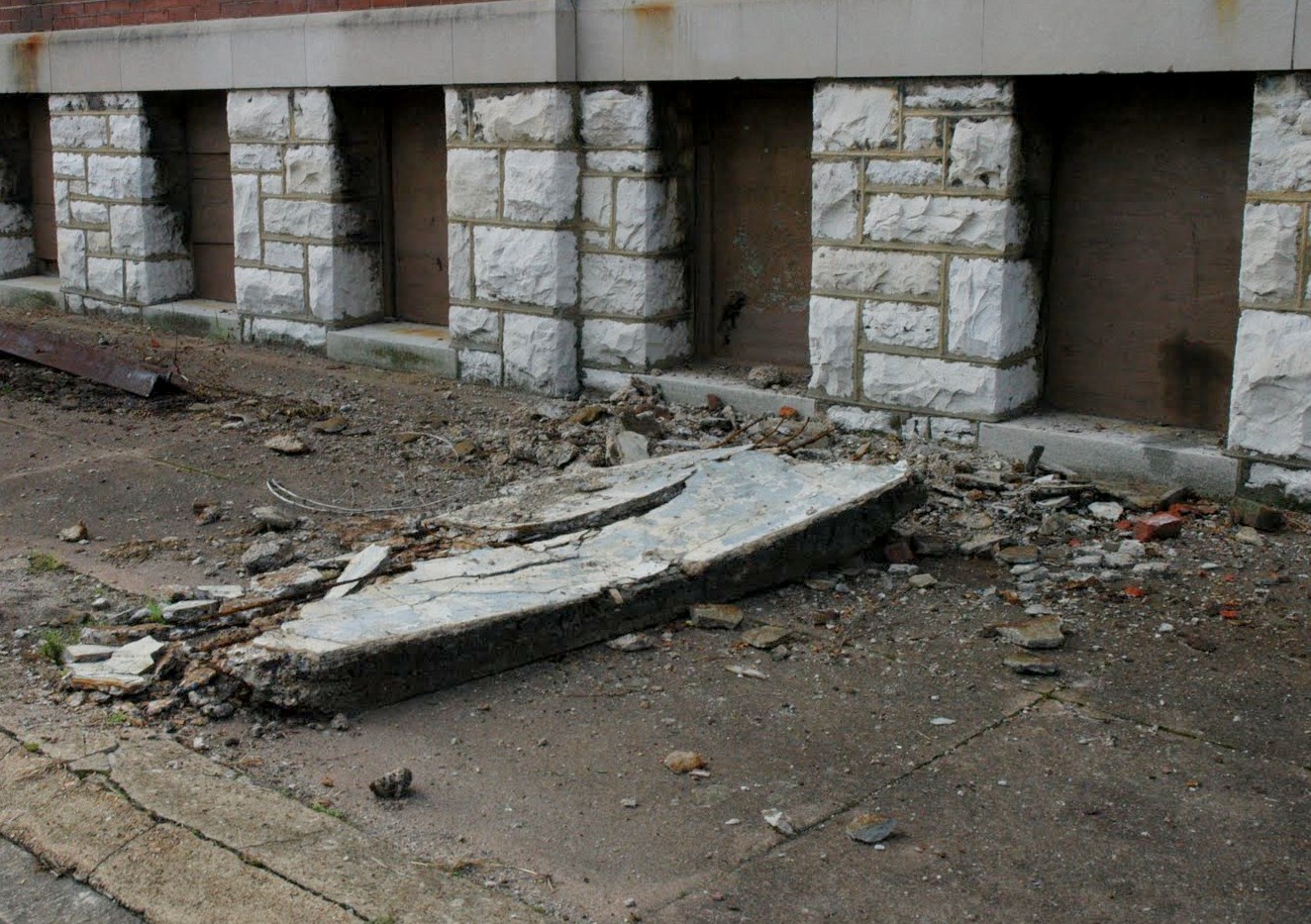

There is a drastically underused park (St. Louis Place Park) at it’s center that is lined with new homes to the east and old homes to the west. I couldn’t tell what the structure in the middle was, but a helpful reader says it’s a water play area.

This could and should be the central gathering place for the neighborhood. It isn’t today; and the streets are intentionally closed to prevent traffic in this area.
Enough of the negative side, the fact is, this neighborhood needs to be embraced. It should be on the endangered list and saved. Another example of a building that is on the dividing line between Carr Square’s contemporary apartments and the older structures in St. Louis Place. One such example is the Cass Avenue Bank:
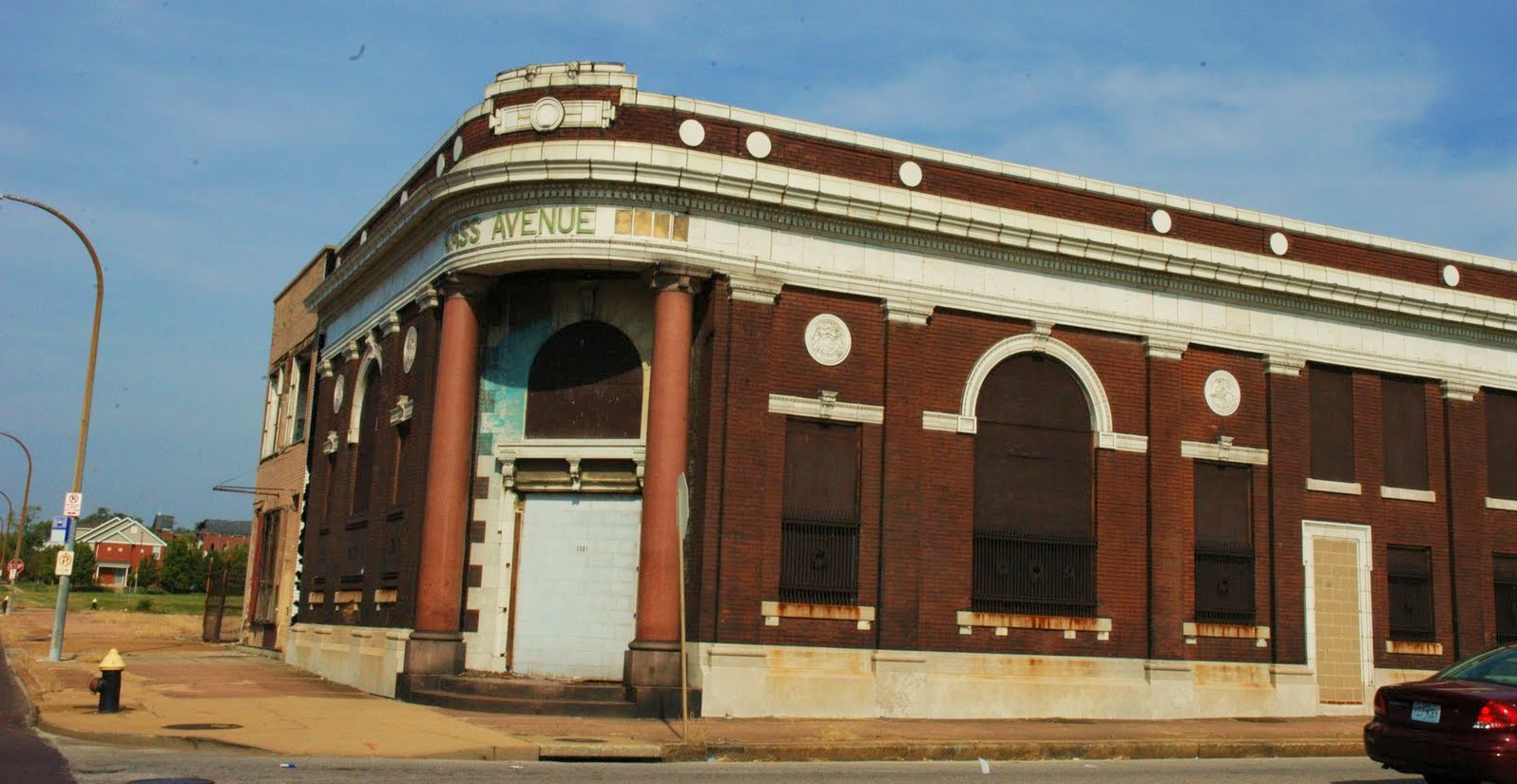

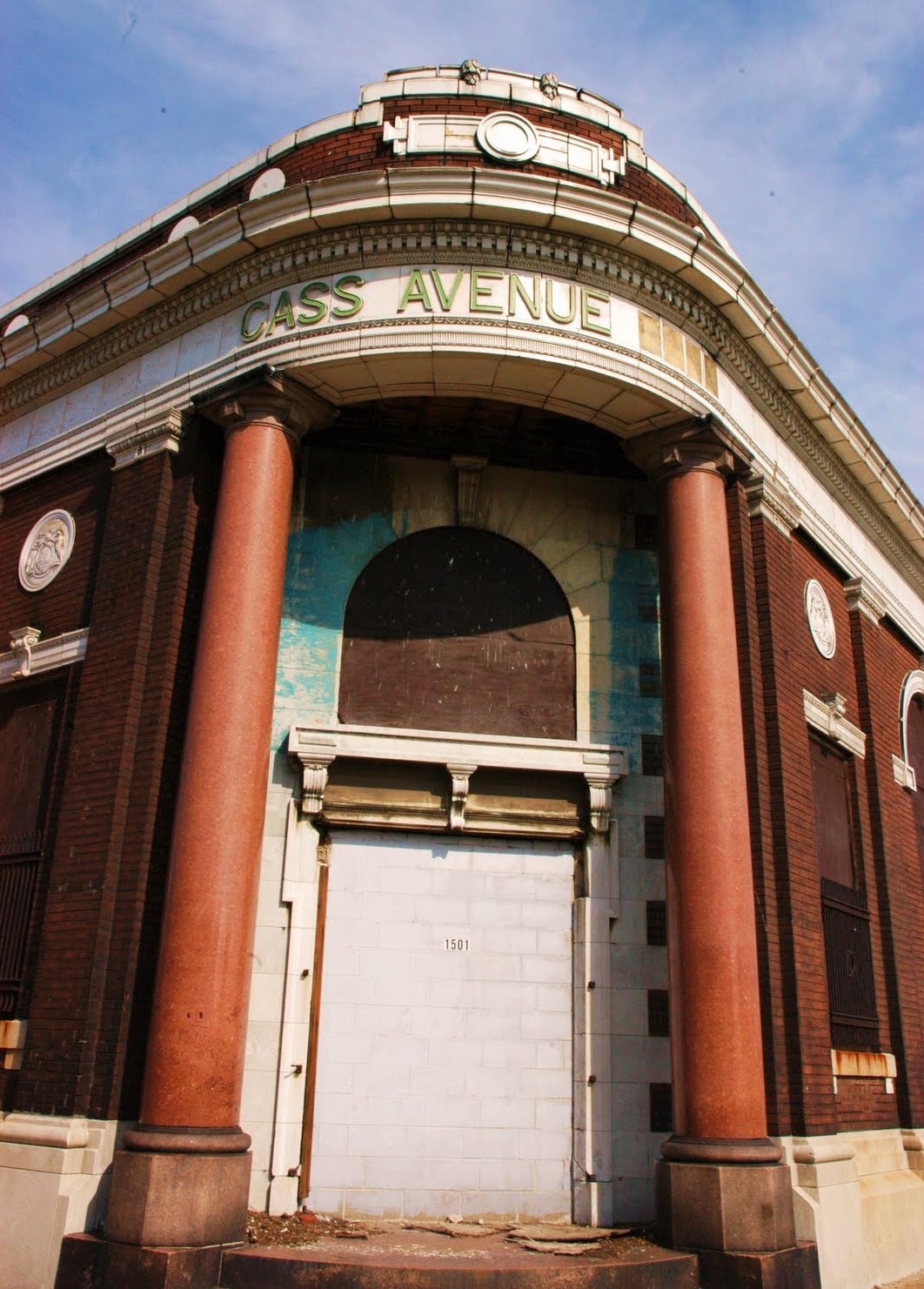
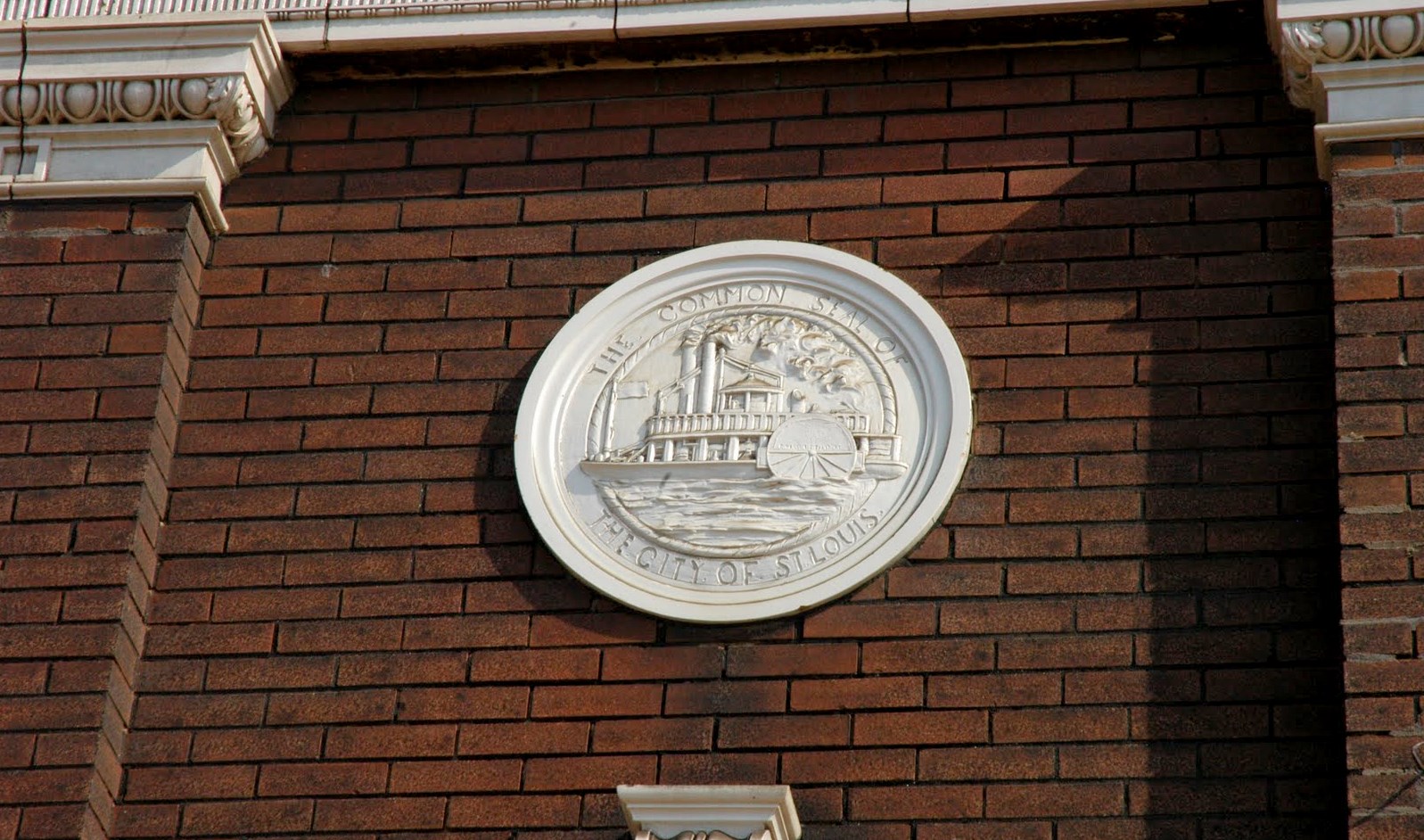
There is an excellent summary of the property as well as some great photos on the Built St. Louis website:
According to the original bank’s web site, the building went up in 1915, as the second home for the Cass Avenue Bank, later the Cass Bank & Trust Company. The bank moved out in 1927, and leased the building to the Post Office afterward.
There is a lot to like here if you are fan of rust belt cities, here are some sights that caught my eye today.
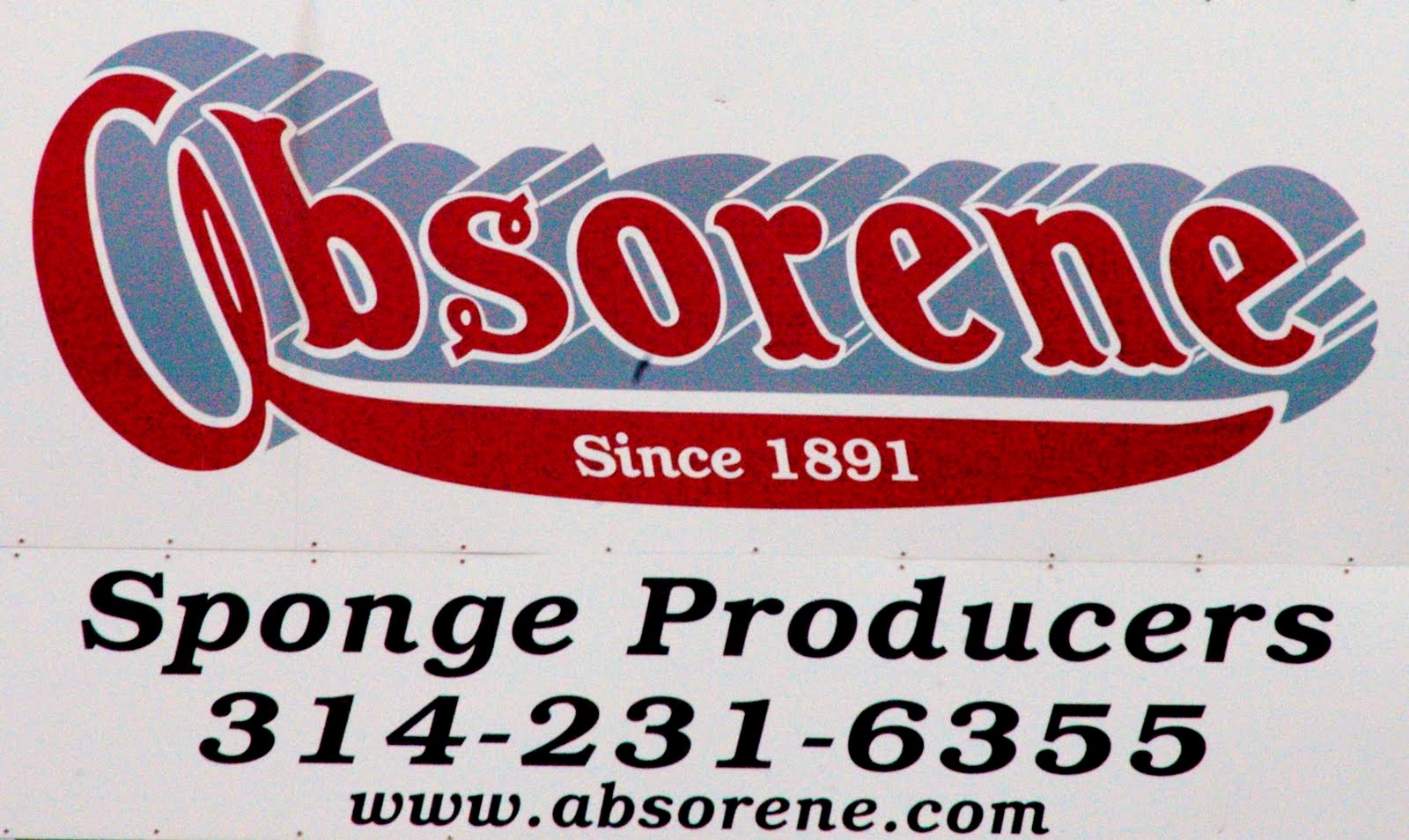

This Budweiser painted ad has held up well over the years.

I believe this “Where’s there’s life…there’s Bud” ad campaign was from around 1960. As per this story from that same year:
To promote its slogan “Where there’s life . . . there’s Bud,” the Anheuser-Busch brewery has spent $40 million. Last week it filed suit against the Chemical Corp. of America, which makes a floor wax that kills bugs too. Its complaint: the chemical company’s new slogan—”Where there’s life, there’s bugs”—tended to “disparage” Budweiser. Chemical Corp. blandly rejoined that its inspiration was really 18th century English Poet John Gay, who wrote: “While there is life there’s hope, he cried.” The court, in a temporary injunction, told Chemical Corp. to apply bug killer to its own slogan.
There is “Keep Out” and then there is “Keep the @#$% Out”:

This business along Jefferson Avenue has several awesome examples of fire escapes and other architectural niceties:


This ghost sign says “bowling alley” and you can tell by the shape of the building where the lanes were:


If you are a fan of “flounder houses”, I believe there are several examples in St. Louis Place. Information for the City of St. Louis website:
The flounder, sometimes called a half-flounder, is a house type which appears to be unique to St. Louis. The flounder is a narrow house, usually two or two and a half stories tall, and one or two bays wide. Entry was most often from the side elevation, which sometimes had a two-story gallery. Since these houses were exclusively working class homes, decoration was limited, confined to segmental arched windows and perhaps a corbelled cornice. Flounder houses were especially appropriate for dense neighborhoods, where space was at a premium. They were often constructed as alley buildings, sharing a lot with as many as two larger tenement buildings. Flounder houses can be found in the City’s oldest neighborhoods, Old North St. Louis, Hyde Park and Soulard.
Here are just a couple that I think qualify as flounders:


^ That last one is a classic.
Here’s to a brighter future for all of St. Louis!
**In June, 2022 I revisited the neighborhood and the following includes updated commentary and photos.***
Misses On Original Tour
Wow, I’m going to stop short of an apology for this original post. I was wrong on several fronts. Foremost, McKee has been a decidedly failed suburban property owner/slumlord dragging the area down as a whole. Further, I just didn’t do this one justice in my photos the first time around, so I hope to fix that with this update. I’ll include a way more inclusive view of what this neighborhood is about in its current day.
I specifically remember the day I did this original blog post. I was scared by a pack of dogs. When I say pack, I mean 10 or more and it scared the shit out of me on my scooter. I got the heck out of Dodge before really hitting the whole place. And, I dismissed the subsidized, new housing.
I kind of came across as dismissive of the new housing. There is a spectrum of new homes from bad to average to pretty handsome. But know, I respect any and all residents who choose to live here, or anywhere in St. Louis proper. You are my people, true St. Louisans whether you live in a brick classic or not. I’ll show more herein.
But hey, I’m doing these updates to evolve and share learnings from someone who loves this place and has lived here for 28 years. And, I’ve spent WAY more time exploring these parts as an admirer, so I’ve gained knowledge I didn’t have back then.
The Murphy Blair subdivision is handsome and well cared for. There is also a massive, X-shaped contemporary ~200-unit apartment complex called Sullivan Place Apartments that I didn’t include.
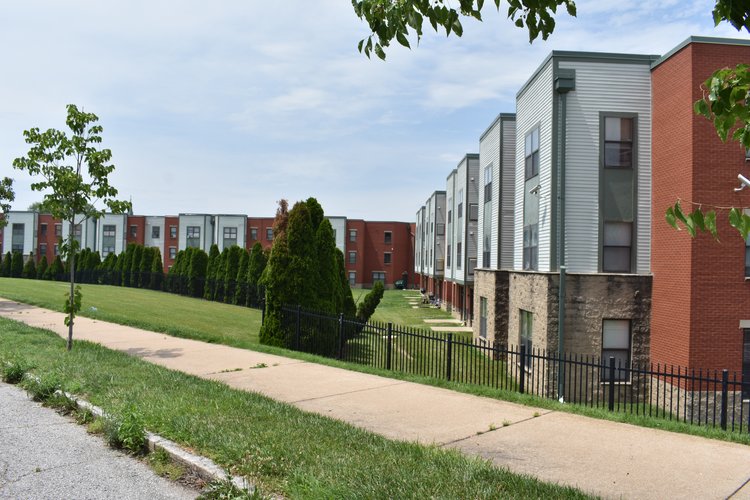
Some of the new homes are scaled better than others in an urban context. If you know the Gate District neighborhood, some will remind you of that approach. And when they are mixed in with the brick beauties, it works.

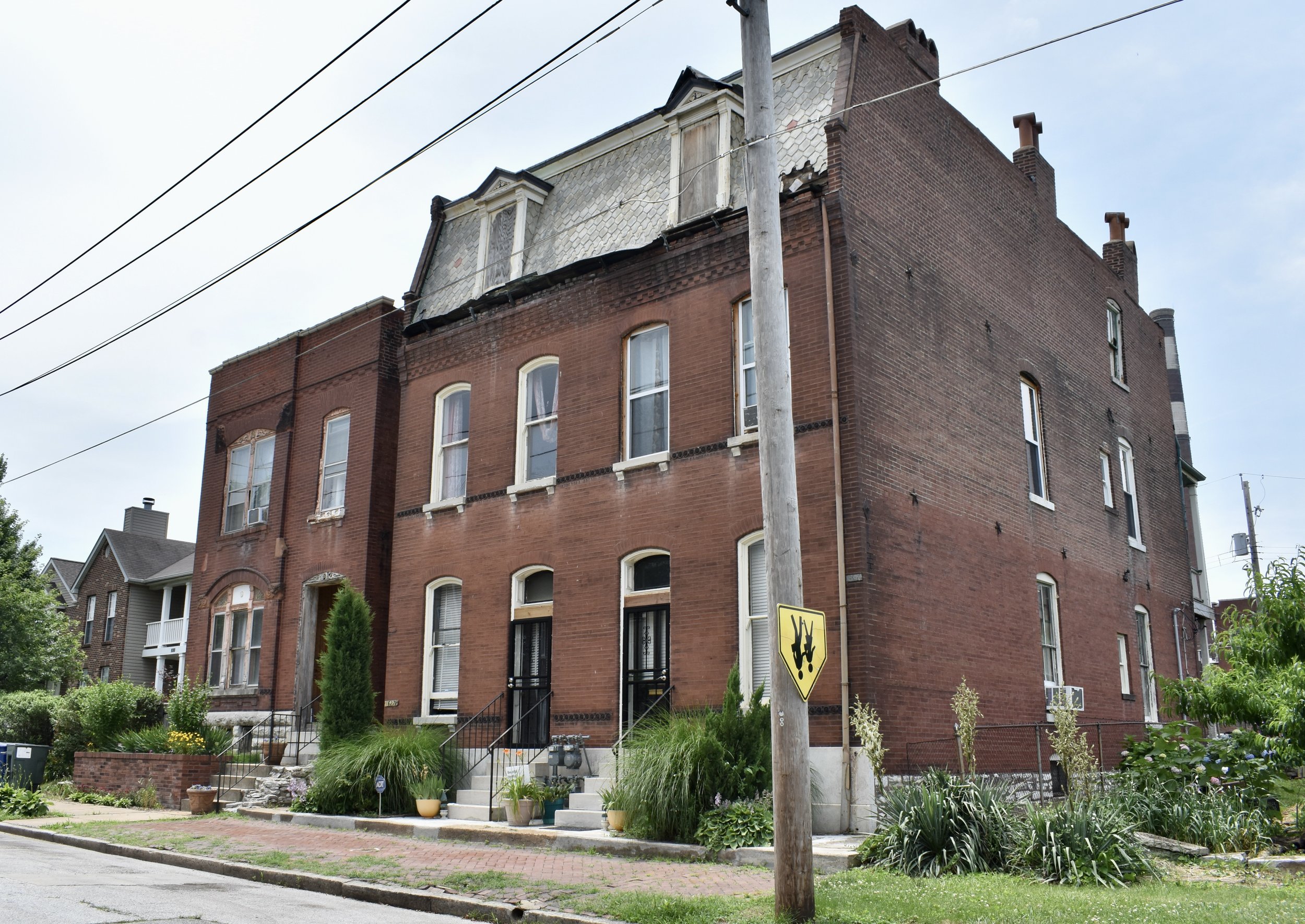
Others are decidedly suburban in nature, low density, large setbacks and driveways vs. alleys.
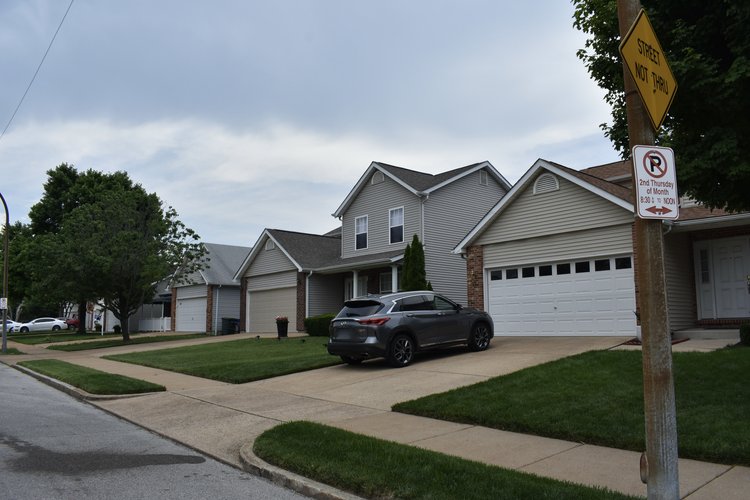
But the streets are tree-lined and there are sidewalks, so it’s not totally barren from a pedestrian perspective.
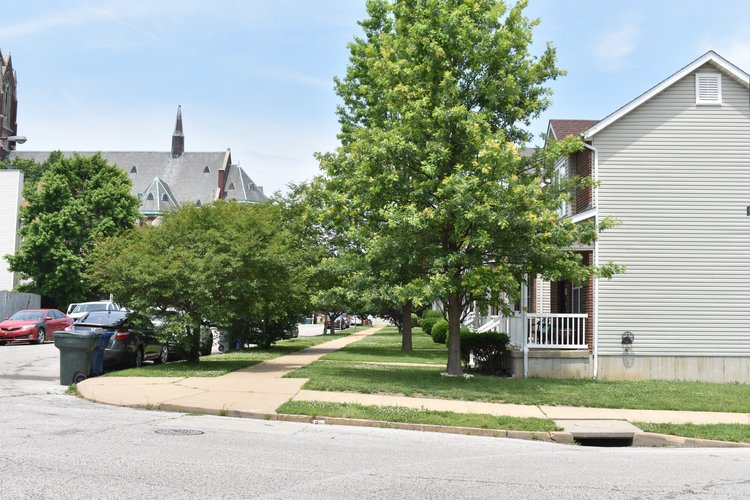
The contemporary style I like the most are the ones that try to mimic the various scales and shapes of the former brick homes. Imagine what these would look like with a cornice and an extra window on the 2nd floor. But then they are not affordable; I get it, everything is cost:benefit these days, no art or architecture first for the working class. Great to see new housing and people, though and they are cute, no? So much better than empty lots. These parts of the neighborhood are spic-n-span clean since there are people choosing to live here and maintain and take pride. Lovely.
These were the start of a net zero home development that stalled.
StlToday – Messenger: Is there a future for affordable housing with zero carbon footprint in St. Louis?

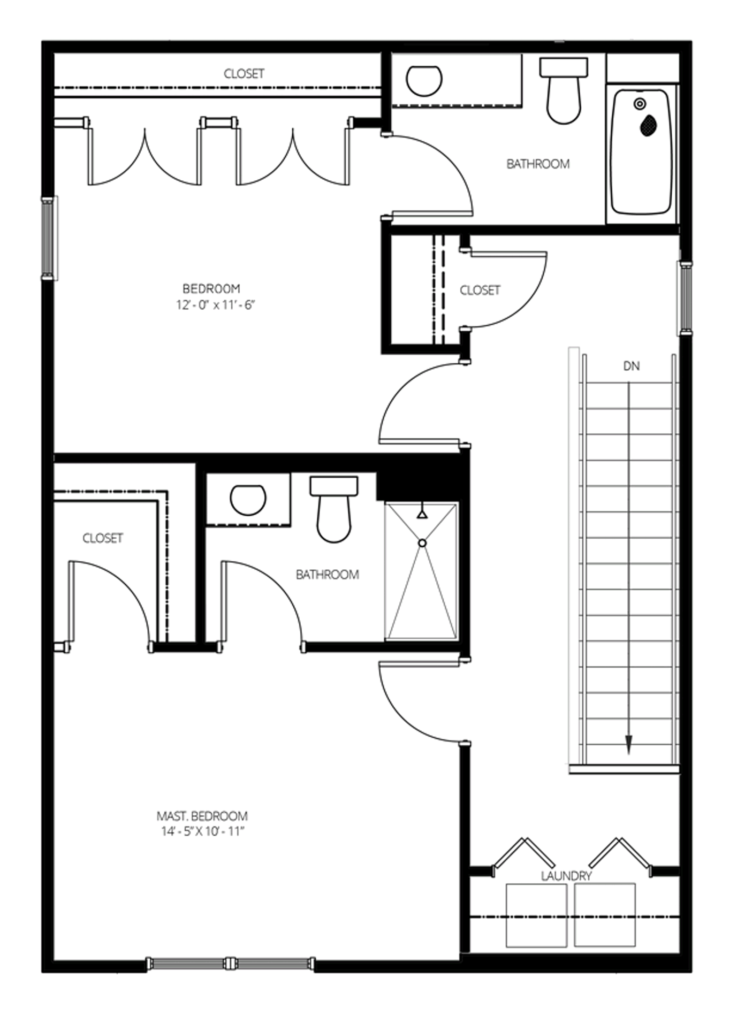
The Little Sisters of the Poor had to make the tough decision to close up shop in the last decade. (source)
The property has been purchased by someone else and the 1970’s residential building is still in use.

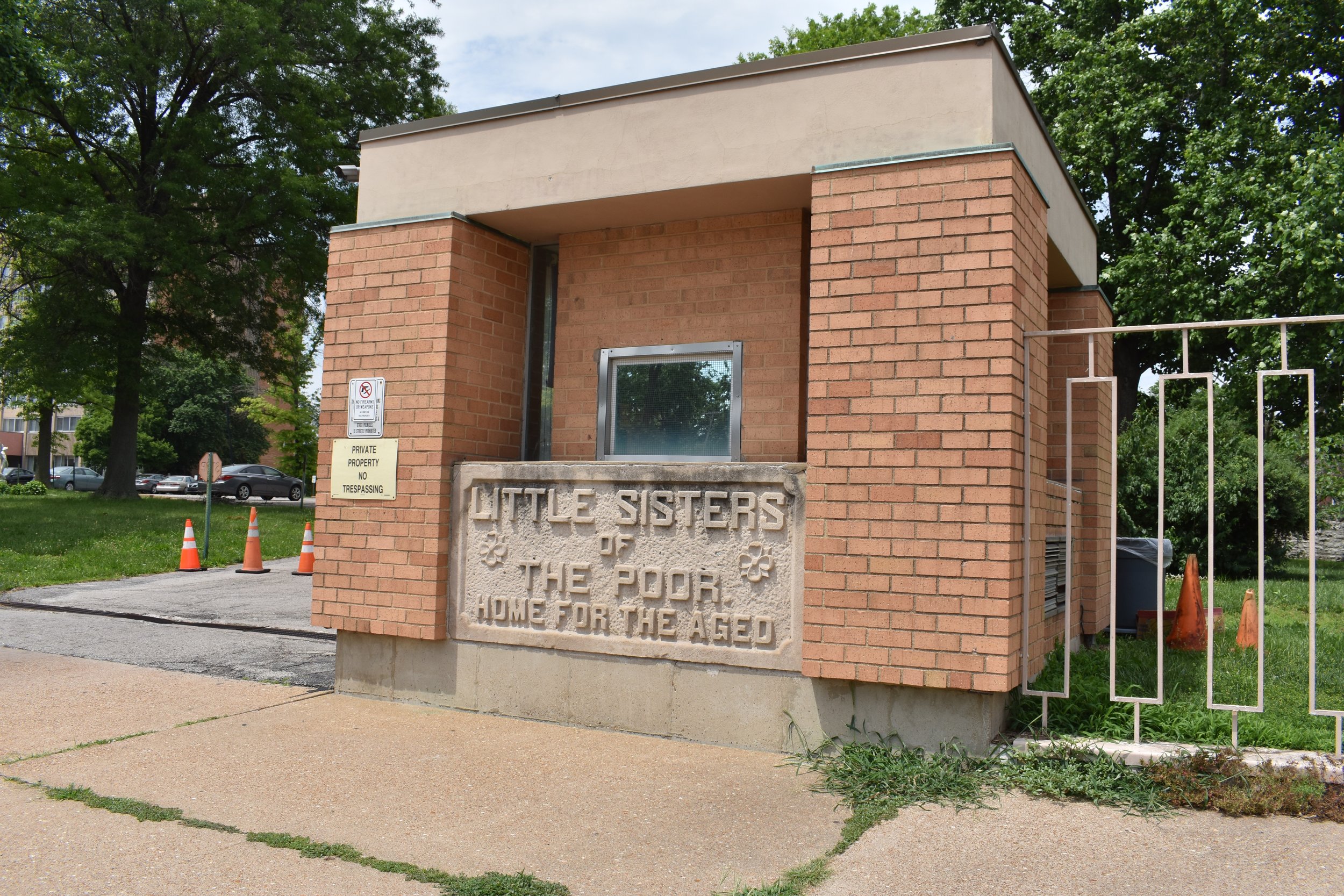
I didn’t do justice to the gorgeous churches and tabernacles, both active and not. They are tucked into the neighborhood in the most charming of ways. They frame the homes and neighborhoods so well.

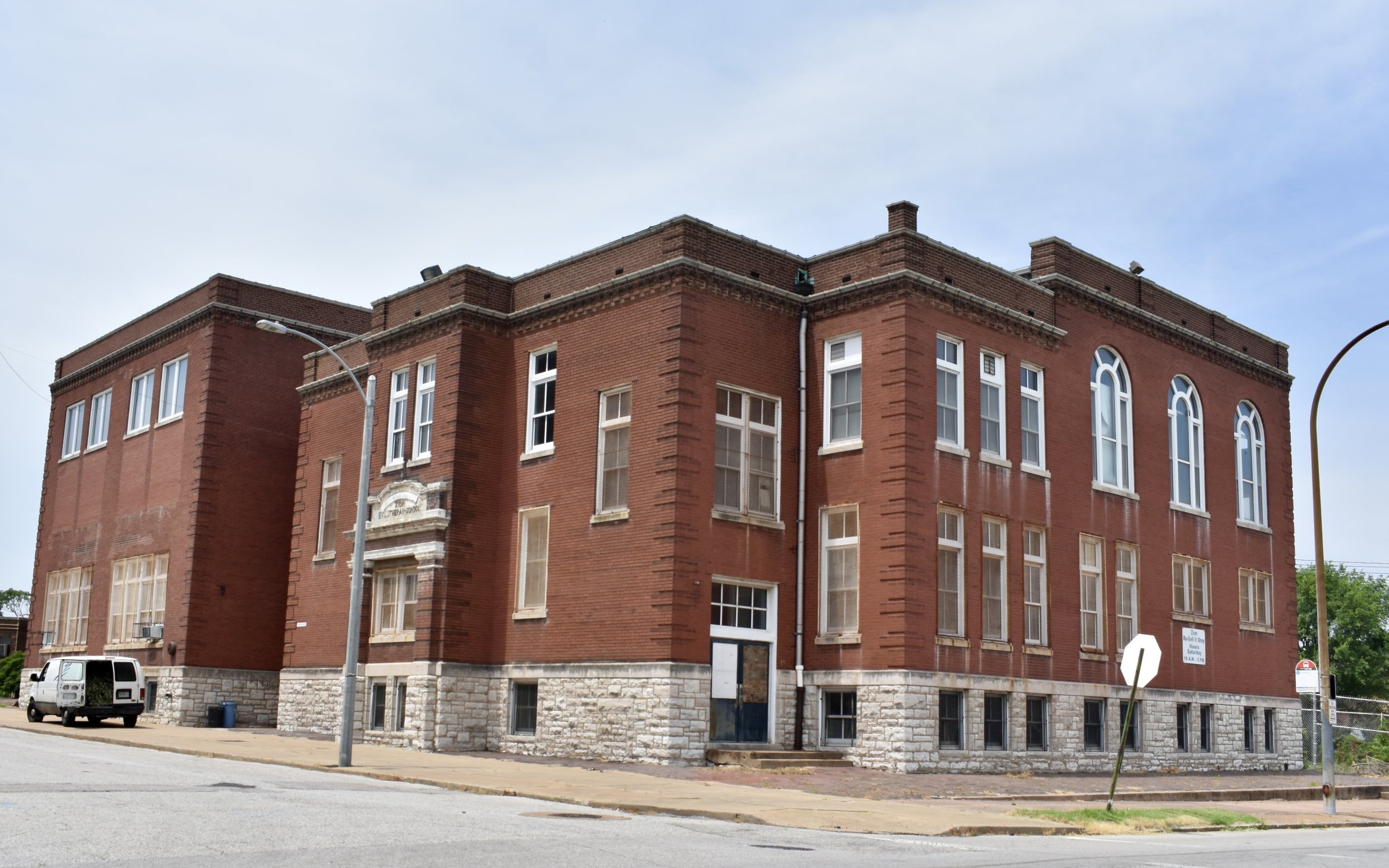

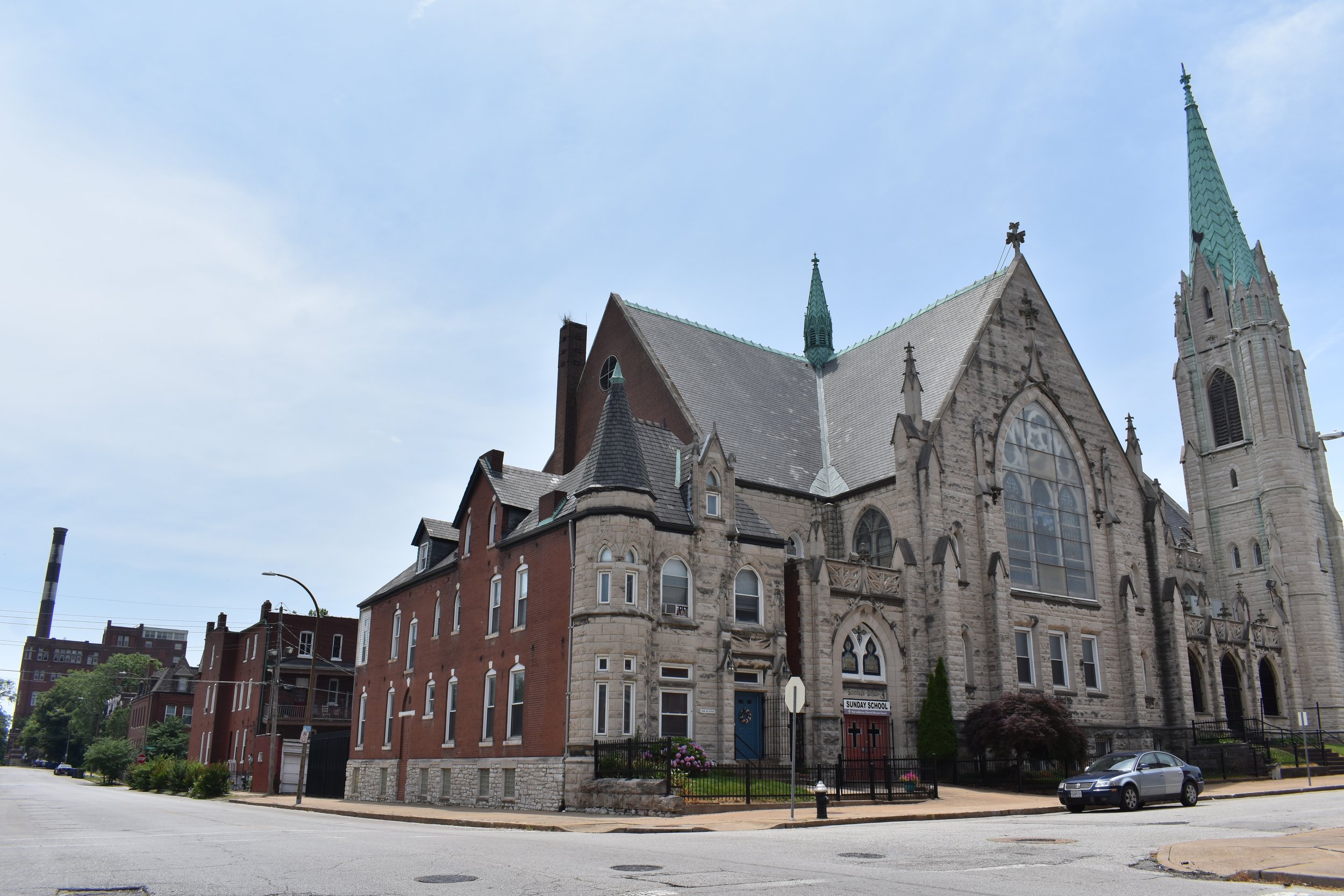



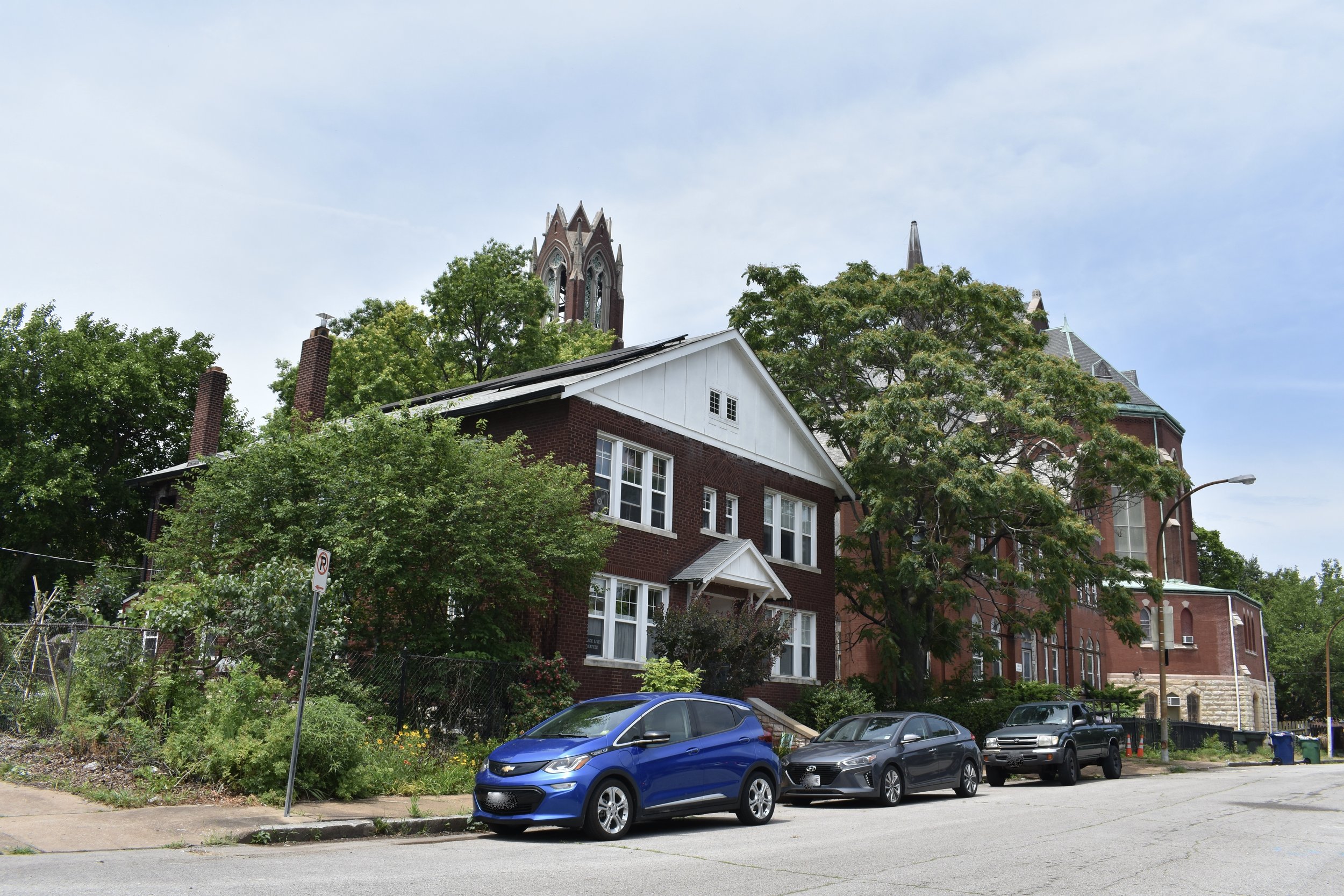
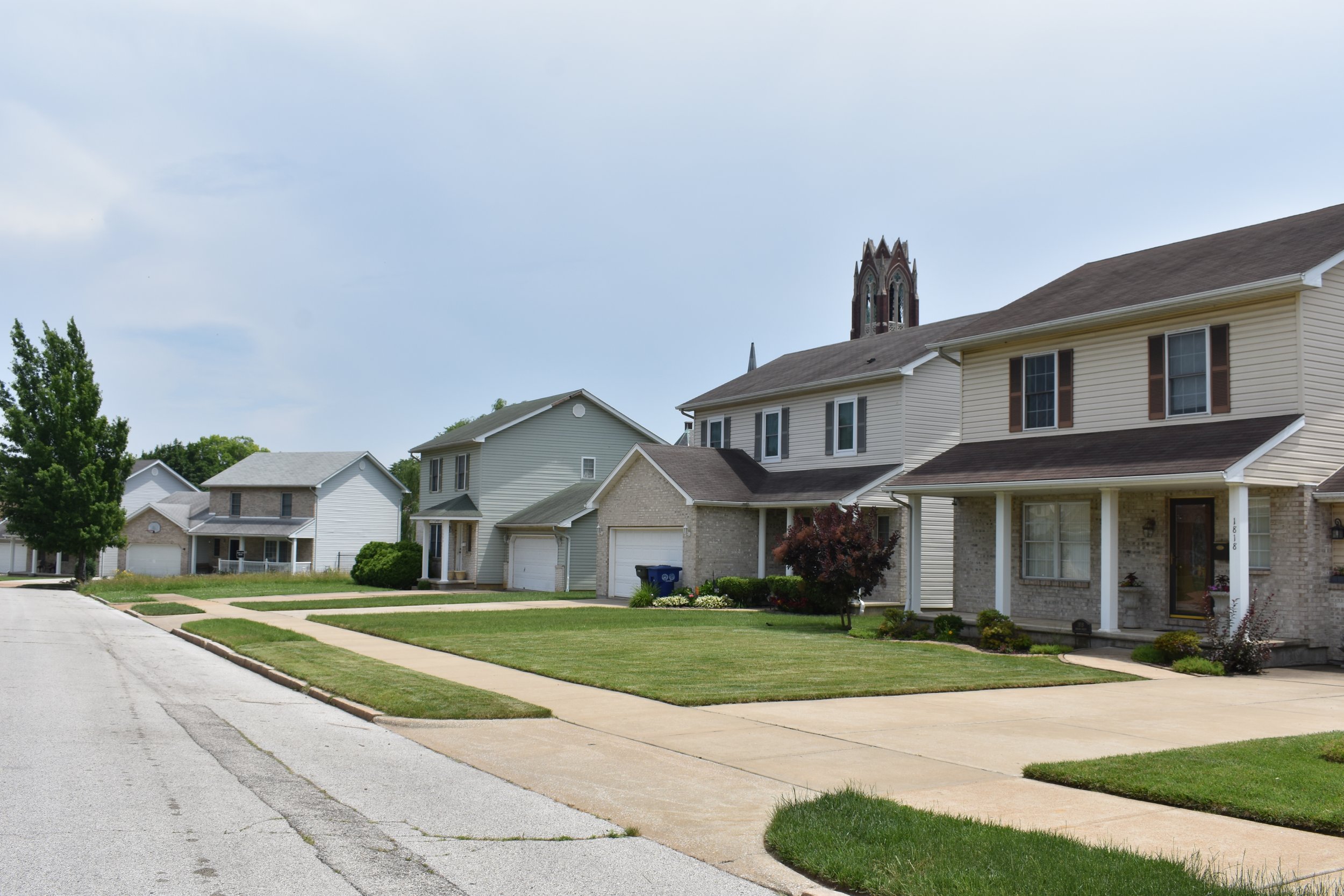

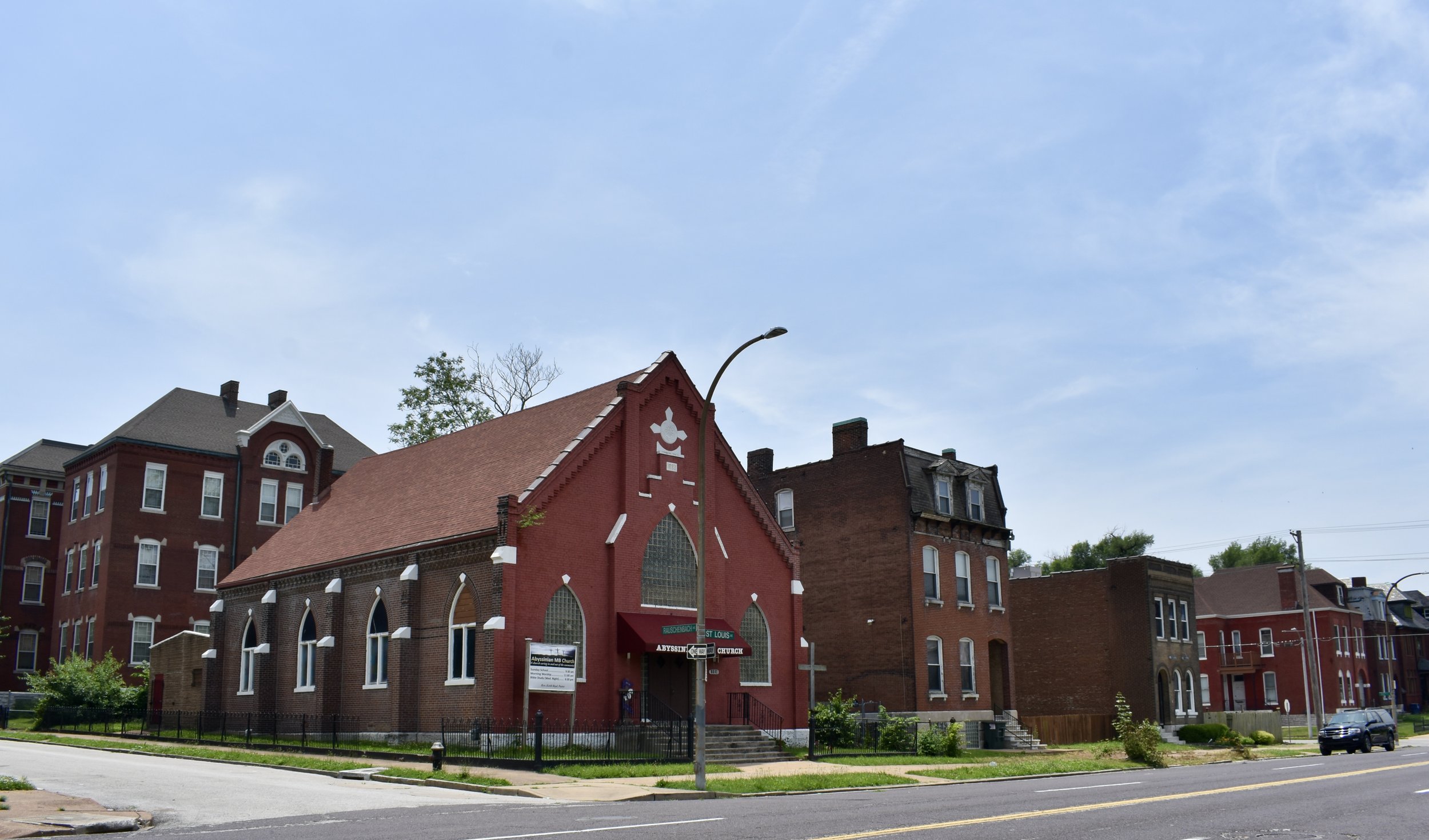
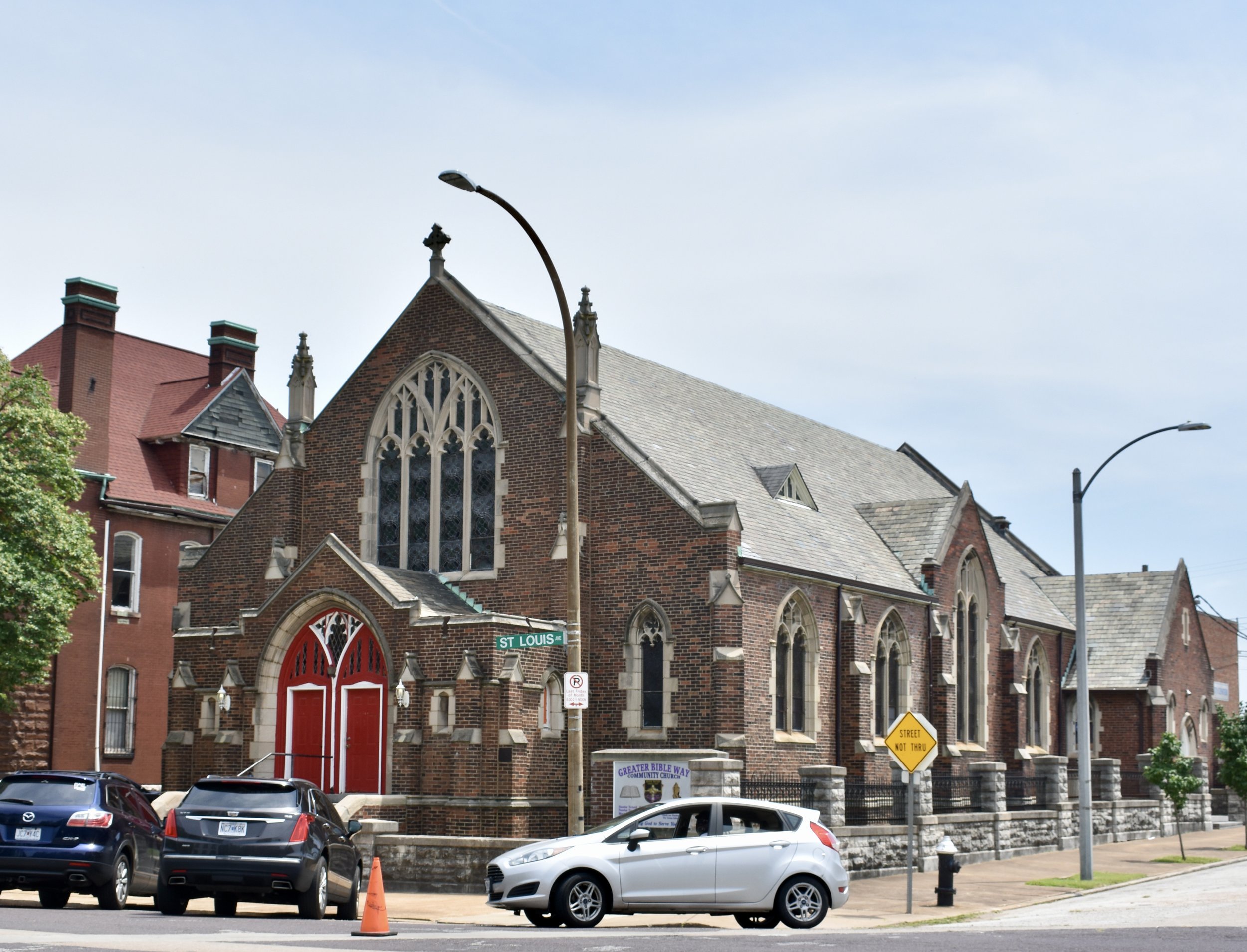
Noticeable Changes
You have to start with the $1.7 billion dollar federal government investment to construct a new 97-acre campus of the National Geospatial-Intelligence Agency western facility. While this is not a net gain for the city overall, rather a bit of musical chairs for St. Louis as a whole (the current location is in the Kosciusko neighborhood near the Mississippi River), the good is undeniable. The investment and job retention is important, even if the ~700K square-foot office building and massive double parking garages and acres of “green space” are decidedly anti-urban and low density in every way. We need to retain the ~3,000 good jobs and get more eyes on the area. Don’t forget this is also a high National security site that needs strategic protection. There are already a few peripheral benefits of the move in that there will be a $54M investment in nearby roads and a restriction on gas stations for the nearby residents (source). The streets here need the investment.
As of publishing, the site looks like this:
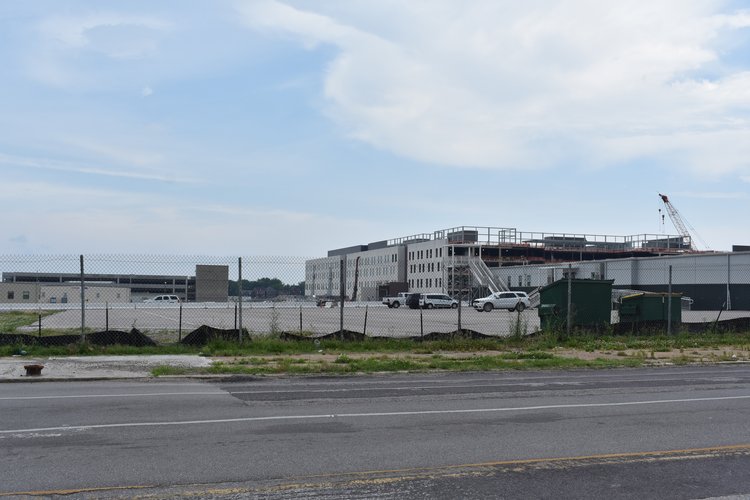
And here’s a rendering from NGA that shows you what I mean by anti-urban, low density campus:
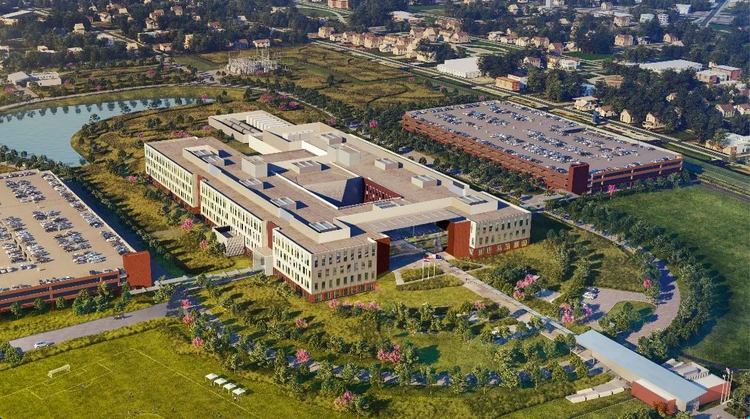
In other changes, there is a hopping restaurant/bar called @Monroe which was a huge draw on my visit, and we’ll be back for sure to check it out because the food looks “chef’s kiss”.
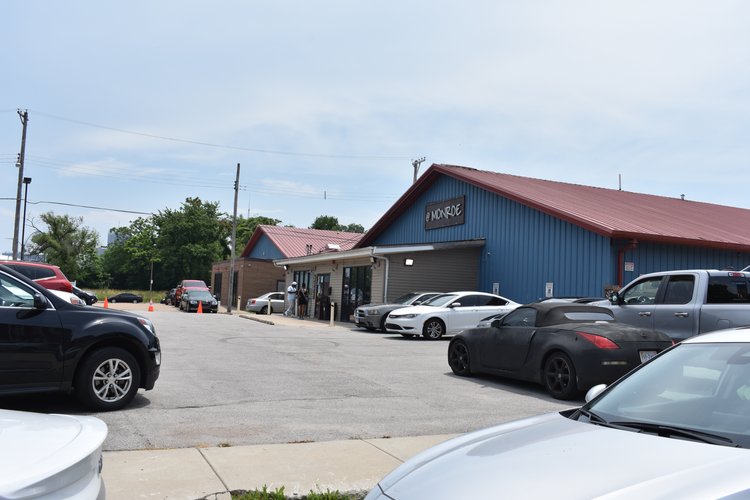
There is an “urban farm” near St. Liborius which always makes me happy.
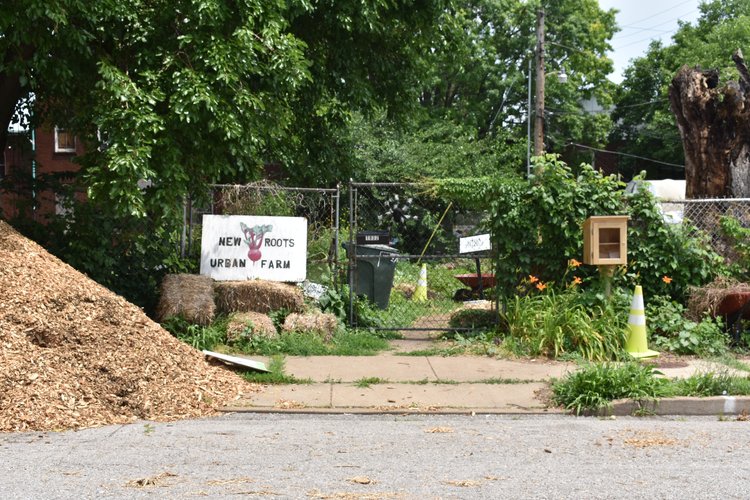
One of the most beautiful parts in all of St. Louis is the former St. Liborius Catholic parish. The former churbch has since been converted to a skate park called SK8 Liborius. Check it out and donate or volunteer. This place will blow you away. My photos won’t do justice, but here you go anyway.
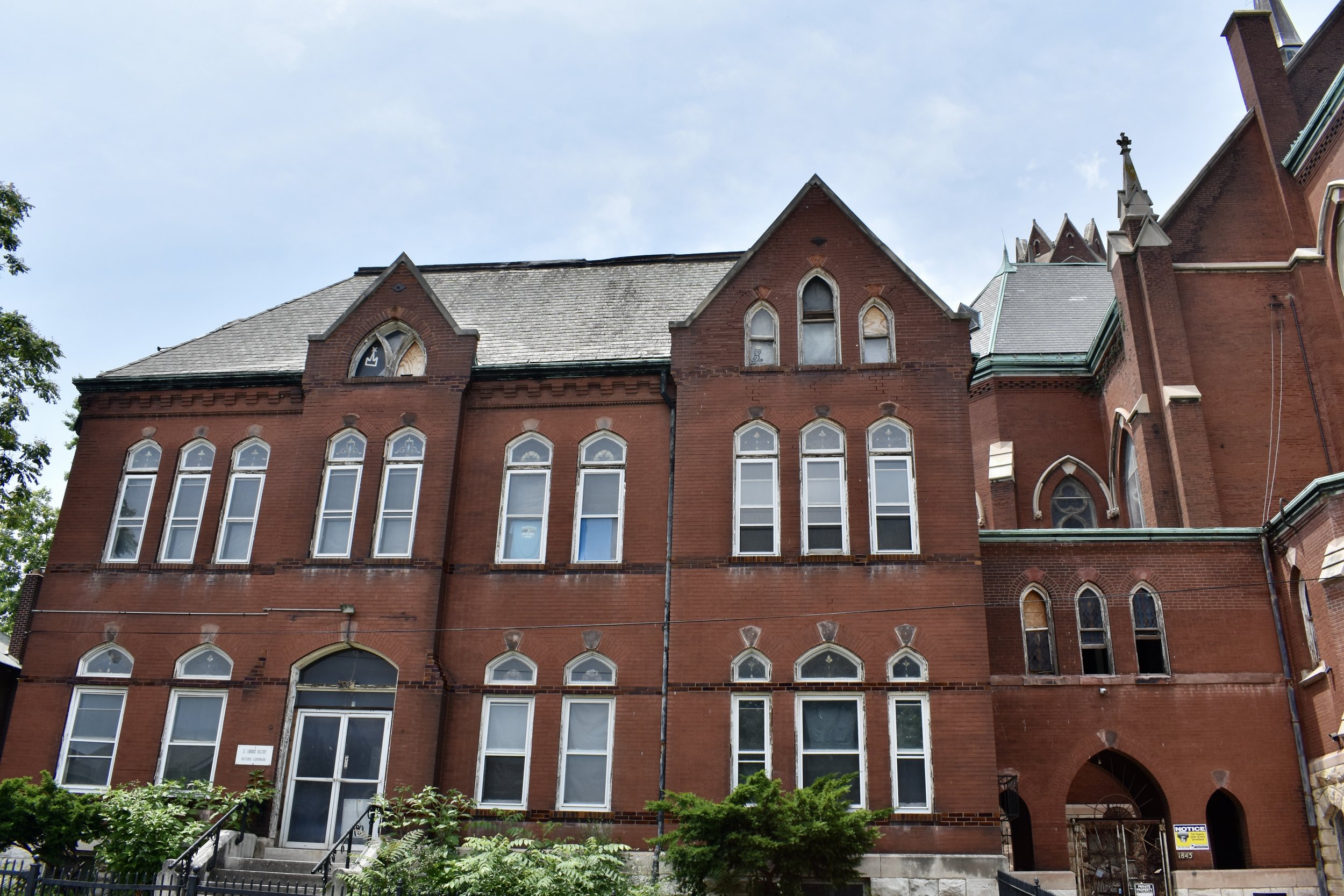
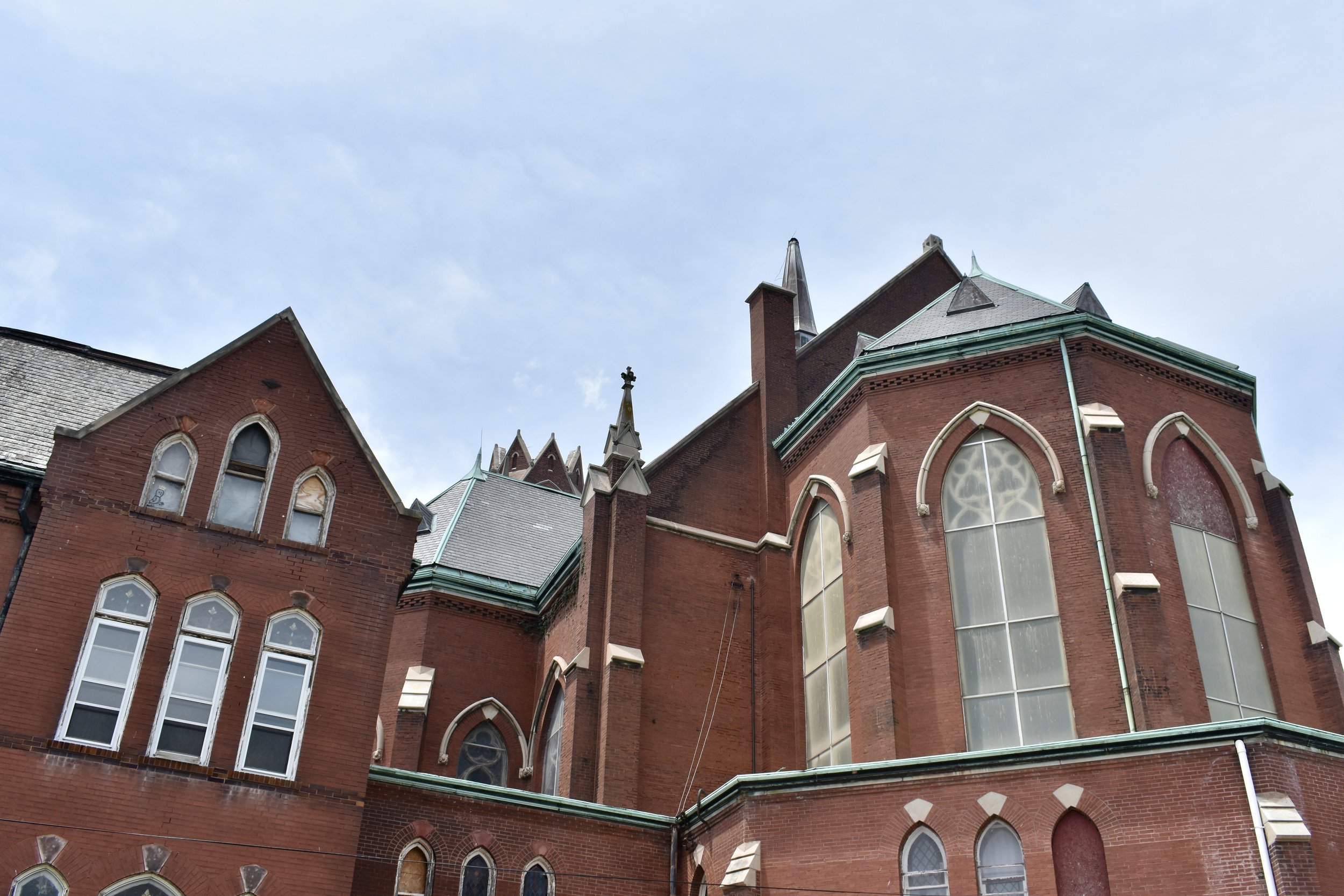
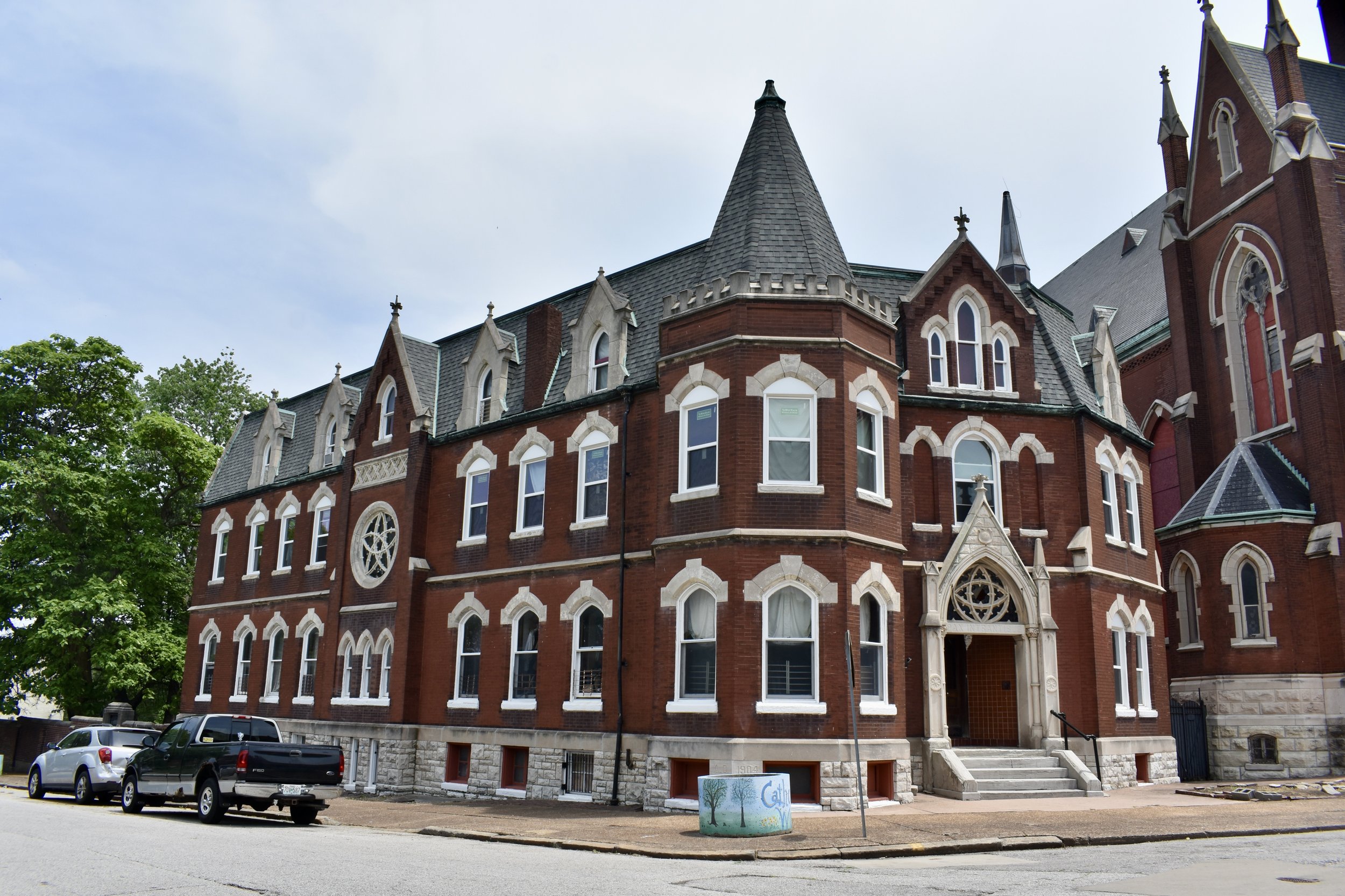
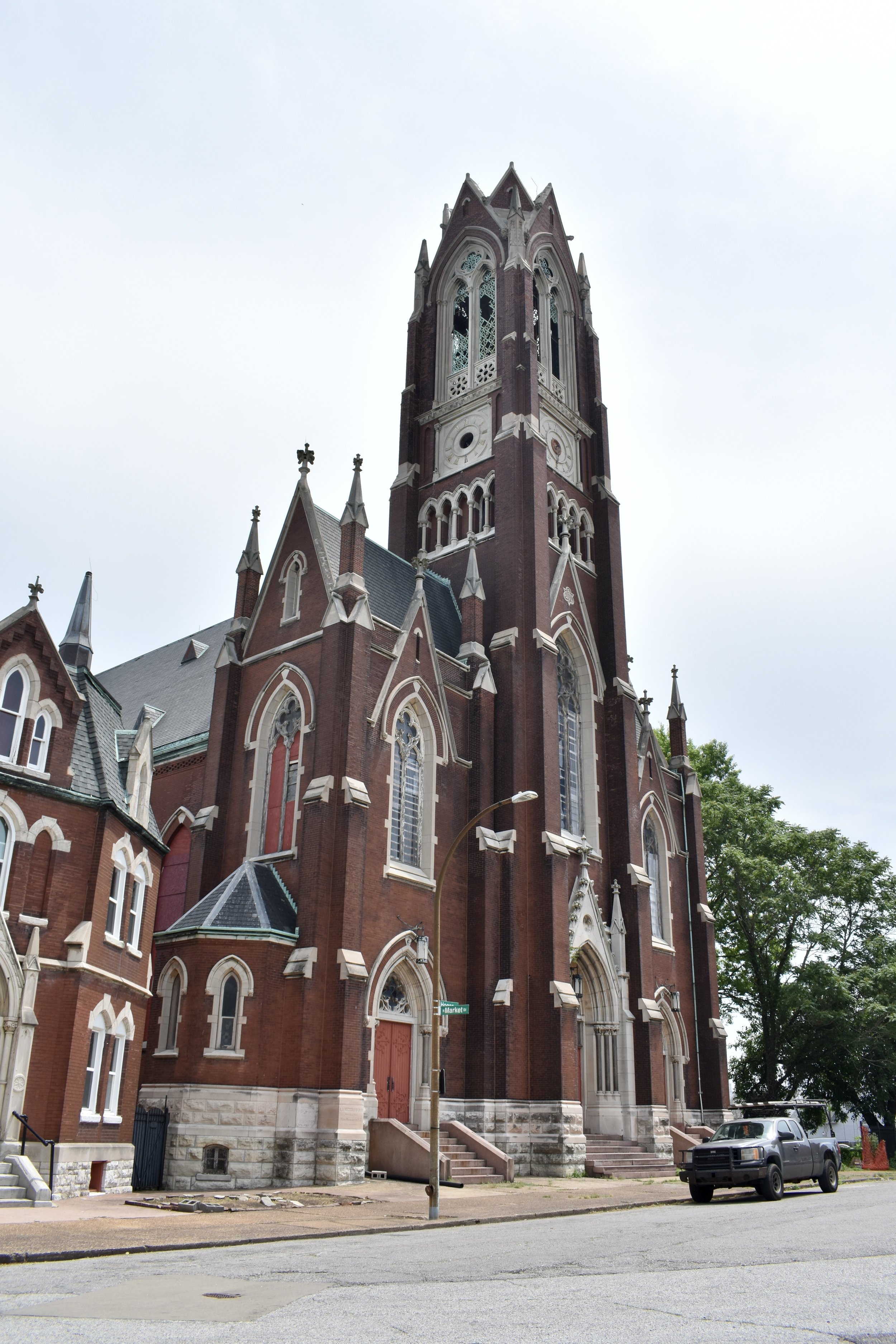
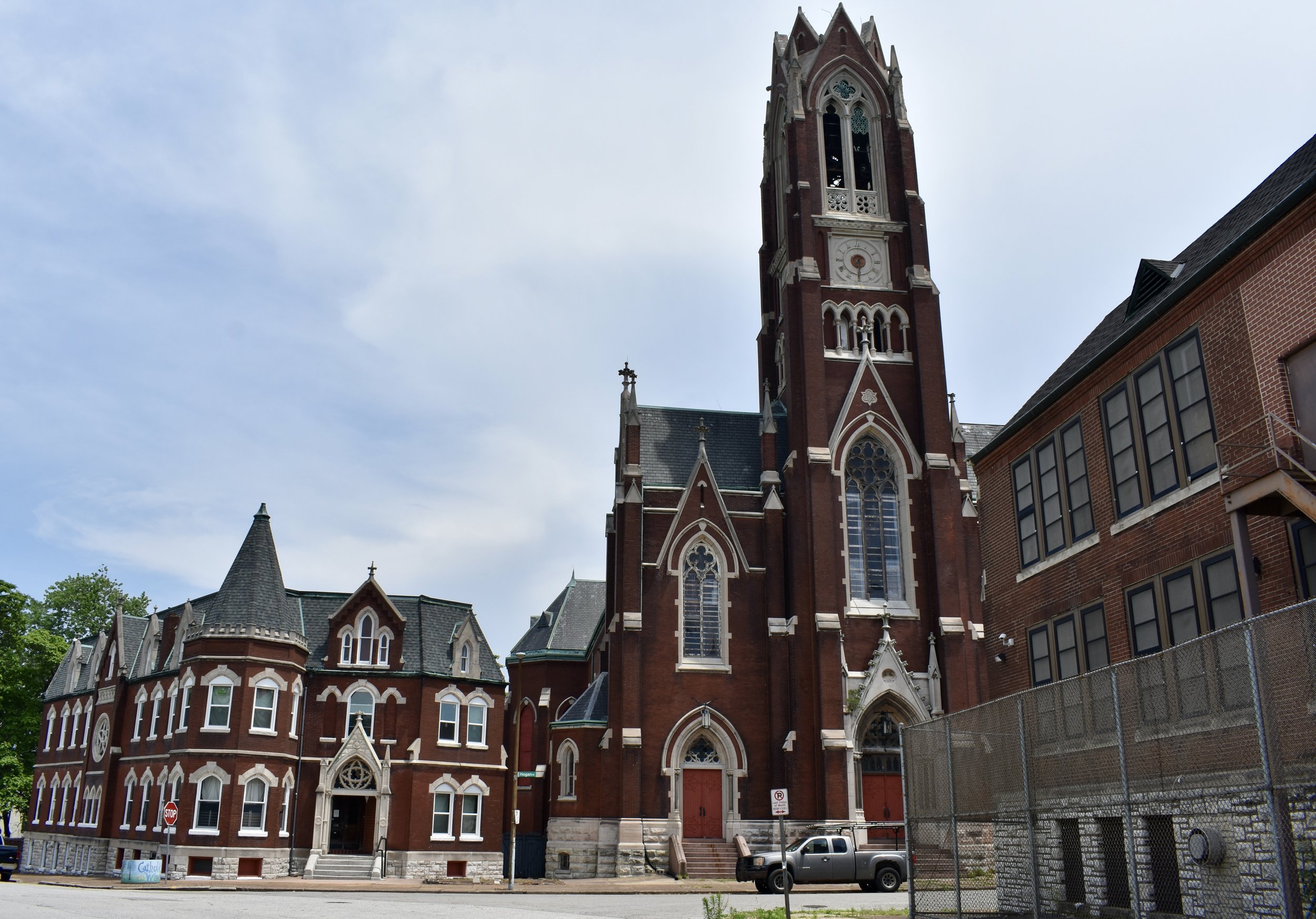
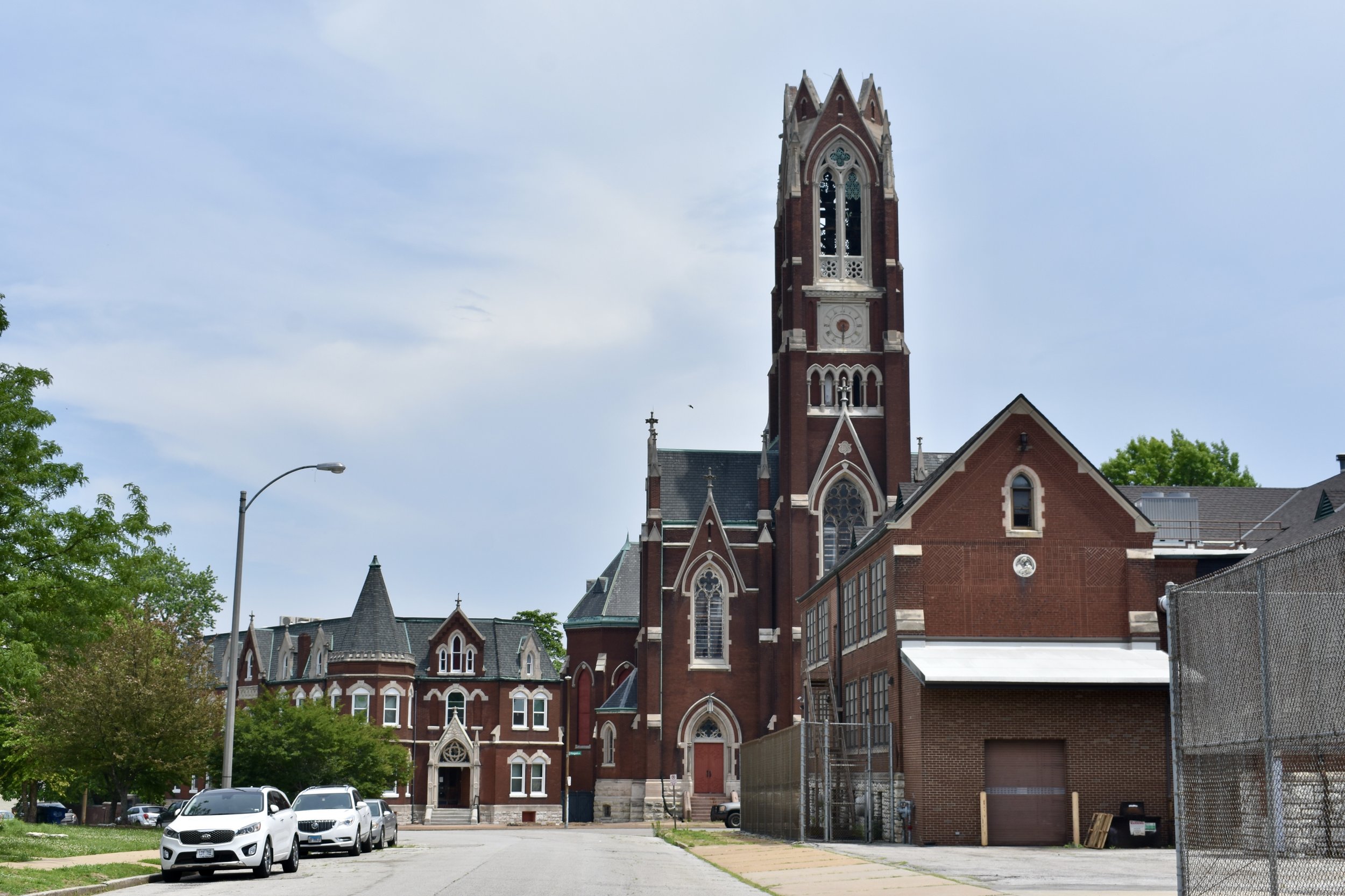
The noticeable changes are not all good. Think Paul McKee, suburban slumlord, is not bad for St. Louis? He is. The 1858 Clemens Mansion with a history connecting back to Mark Twain’s family shown in my original post is gone…leveled. It was wiped from history as it burned in 2017. McKee sat on his hands for years, not seeing quick money in it and stuck a dagger in St. Louis’ history. He is on the hook for this one. It’s now a vacant lot on Cass Avenue (source).
So many other properties have been wiped from the map in the last decade.
What Are The Future Needs?
Not enough is happening here from a city services perspective. The acres of vacant lots are not being mowed. The copious amount of dumping continues year after year. The roads are in horrible condition. The lawlessness of no-dignity drivers is abundant and palpable.
Aside from the negatives, there is hope for the areas around NGA. As of today, most of the surrounding areas to the east are abandoned and vacant. There is tremendous opportunity for rehabbing and infill to keep existing residents and bring new people to the area. The light industry and warehouses are sitting and waiting for some conversions to housing or businesses. Remember, many St. Louis neighborhoods were considered “too far gone”. Lafayette Square, Soulard, etc. were invested in, privately and publicly. Kosciusko and Mill Creek were not…they wiped em off the map.
We can’t let that happen here. Too much beauty, dedicated residency and history…

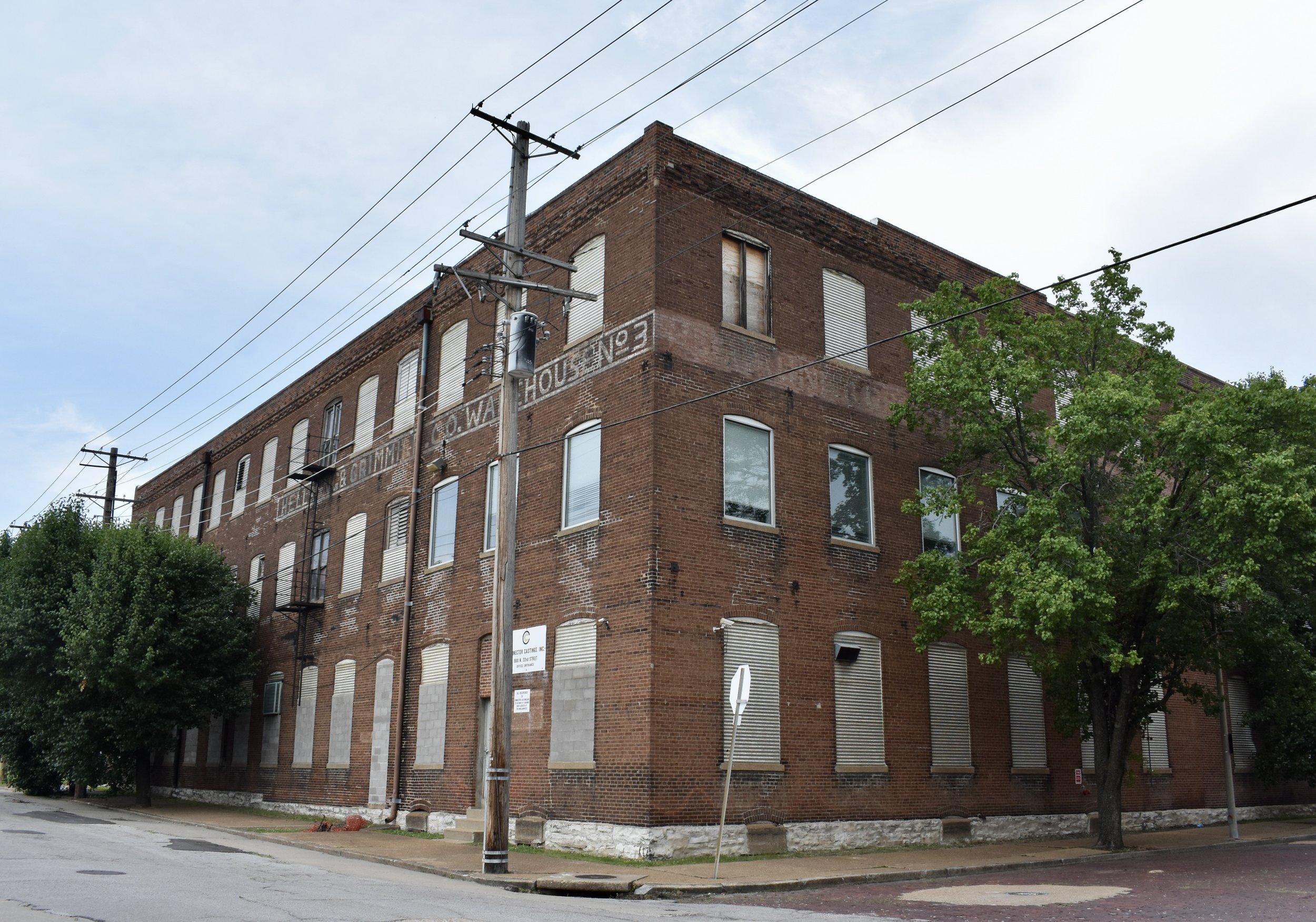
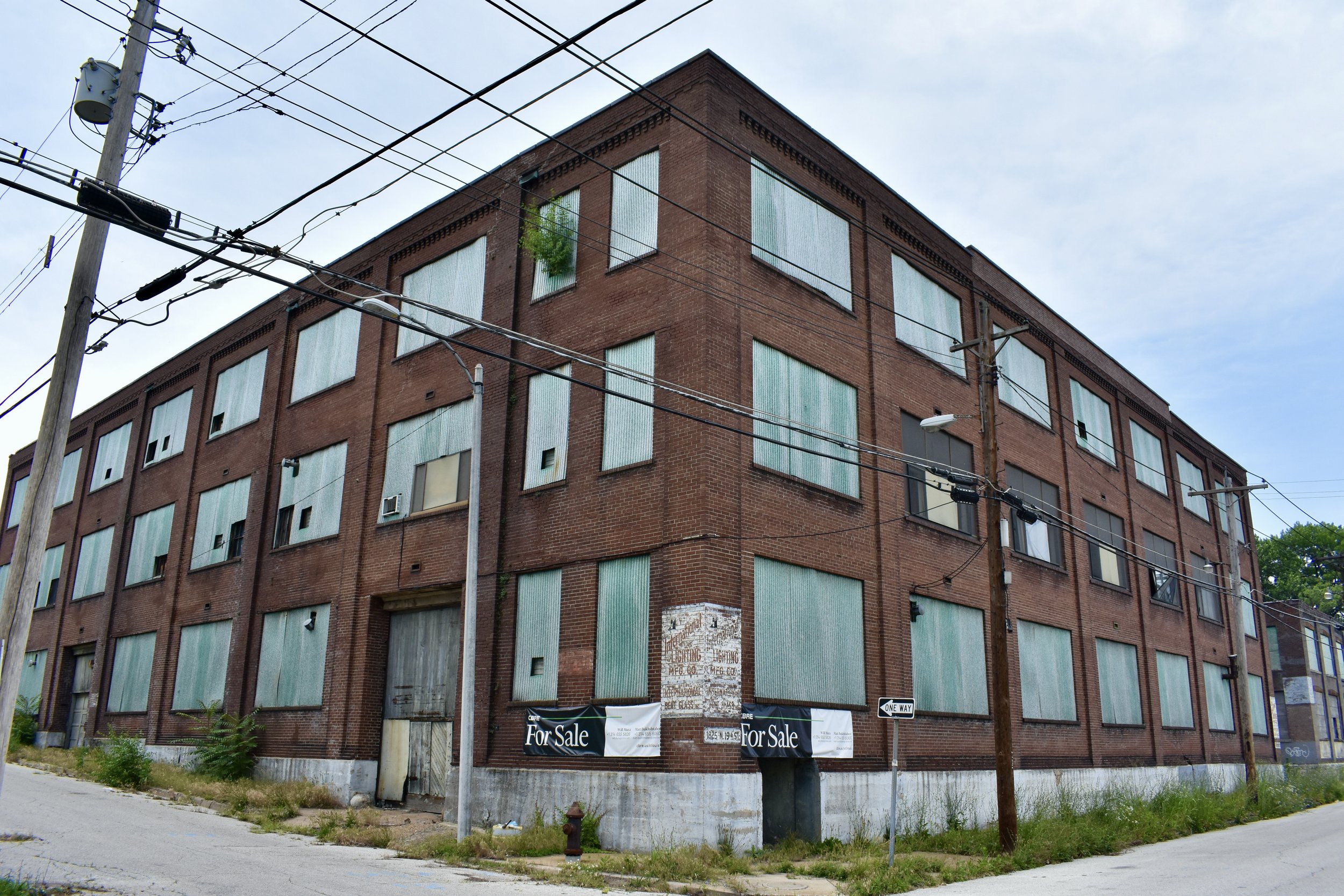



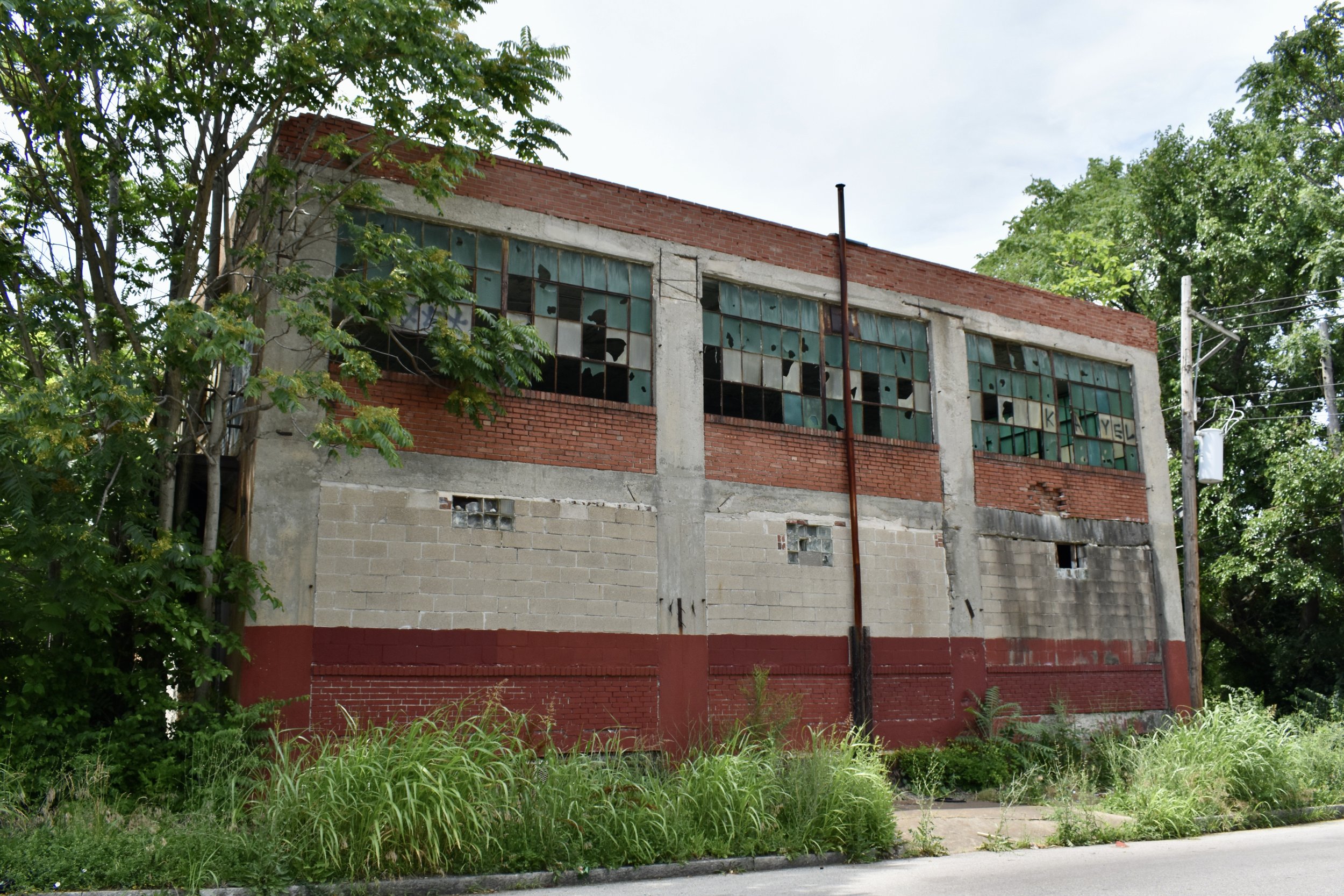
There are some beautiful apartment buildings that have to be prioritized for rehab and housing. Because if you don’t do something now, the squatters will eventually burn it to the ground and further hurt surrounding up and up folks.
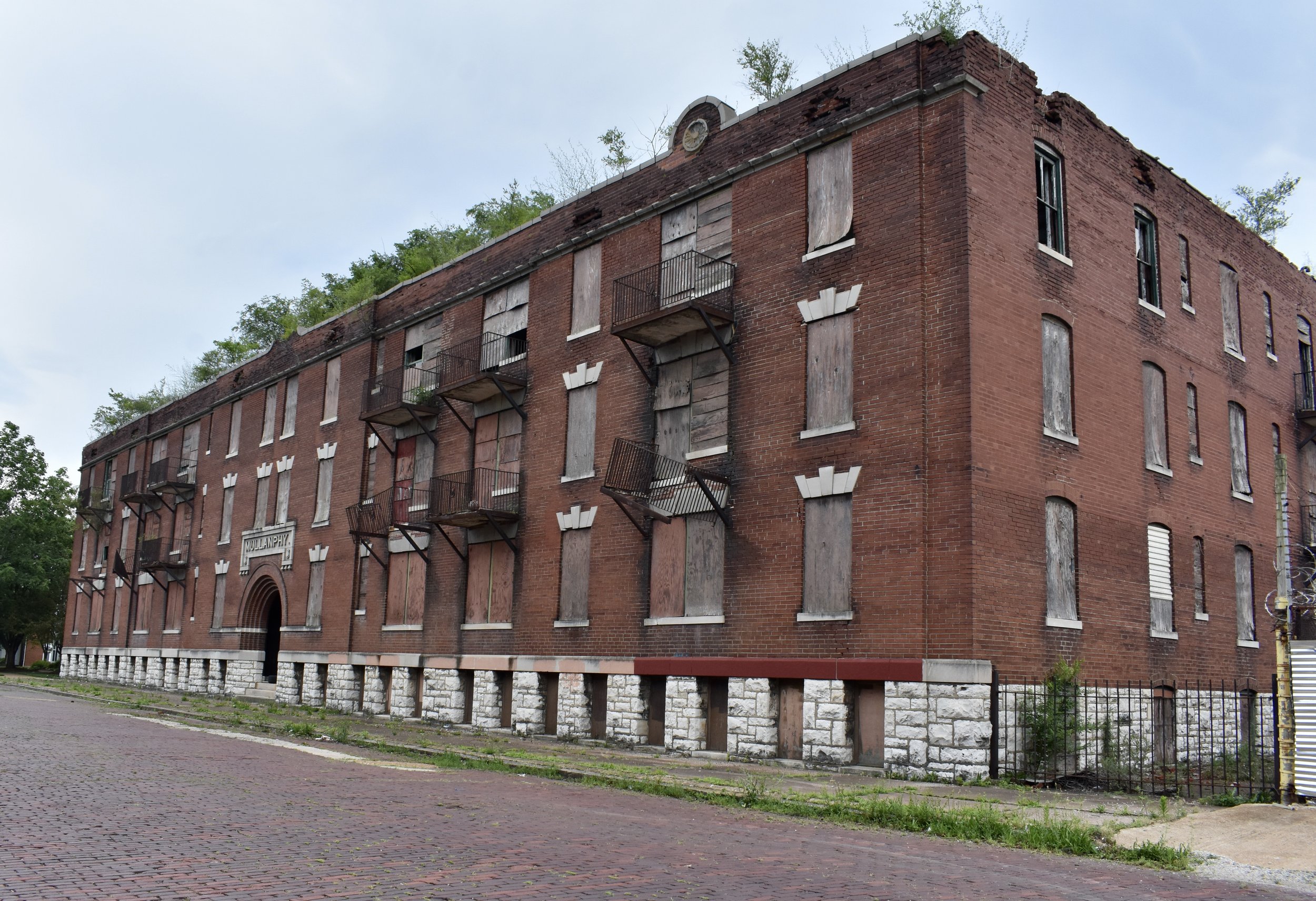

The buildings nearest NGA are largely abandoned; but with some investment, could become great homes to anchor that historic character when the modern infill (hopefully) comes. If you compare the photos in my original post to these, you can see it has been a rough decade. The second photo below could be a great tavern for NGA employees and locals to hang after work.
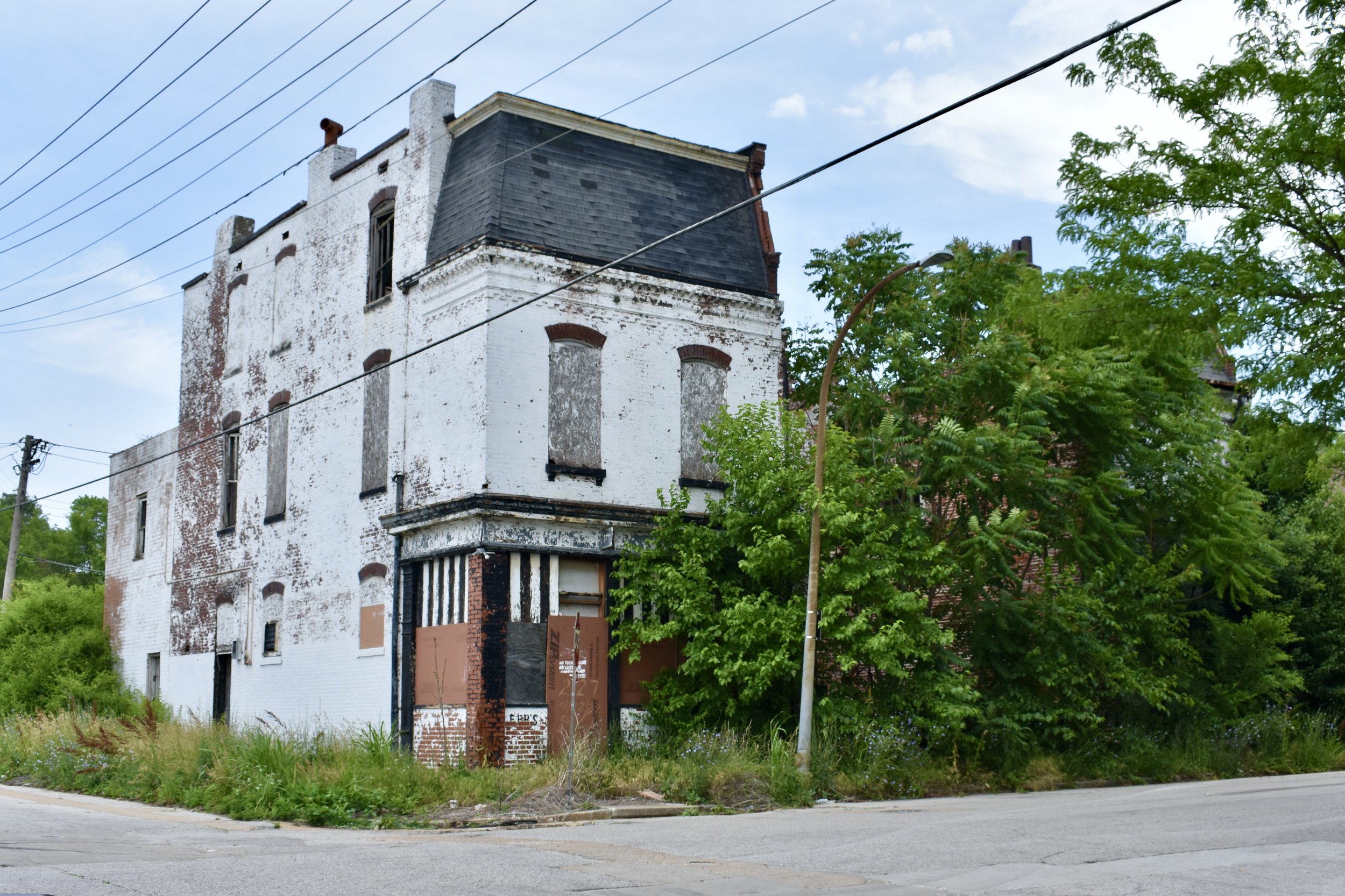

One narrative I’ve read about people who are anti-NGA in St. Louis Place is that homes were destroyed and people were displaced. While there are examples that support this, a historic home was moved. Yet, please know that the vast majority of this space was already vacant and the majority of properties were these strange late 20th Century suburban homes that didn’t last long anyhow. Here are some examples of what was mostly included in the NGA footprint.
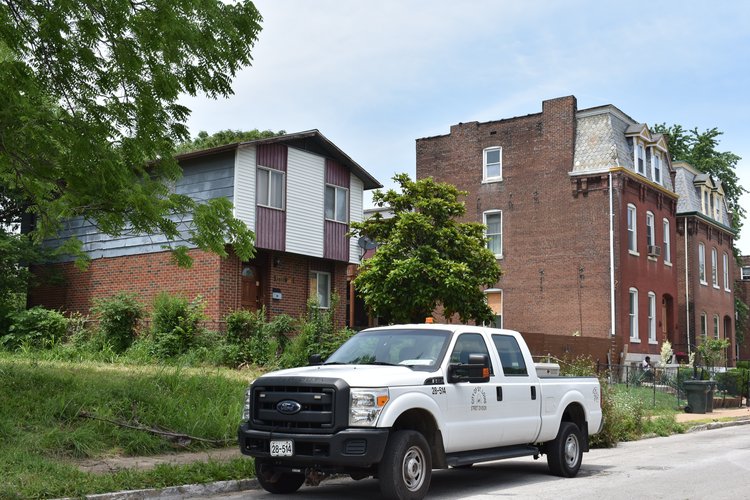
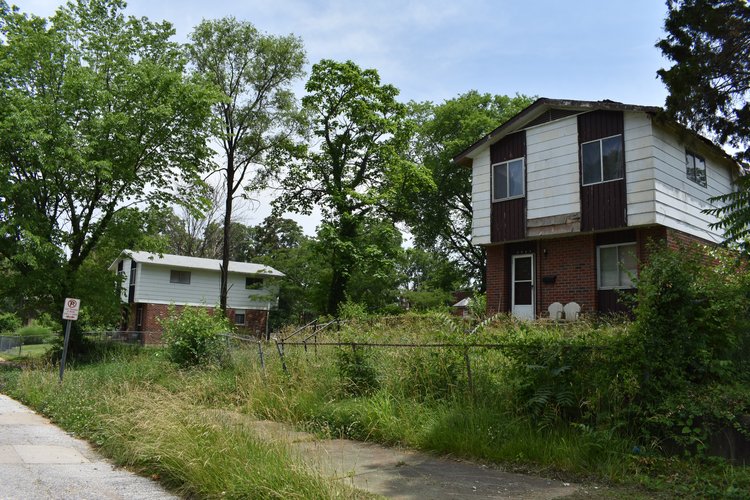
While we’re thinking about need, why not prioritize the stable and gorgeous areas around the former Columbia/Falstaff brewery saved from the wrecking ball/landfill over 30 years ago. Invest in your strengths and people!

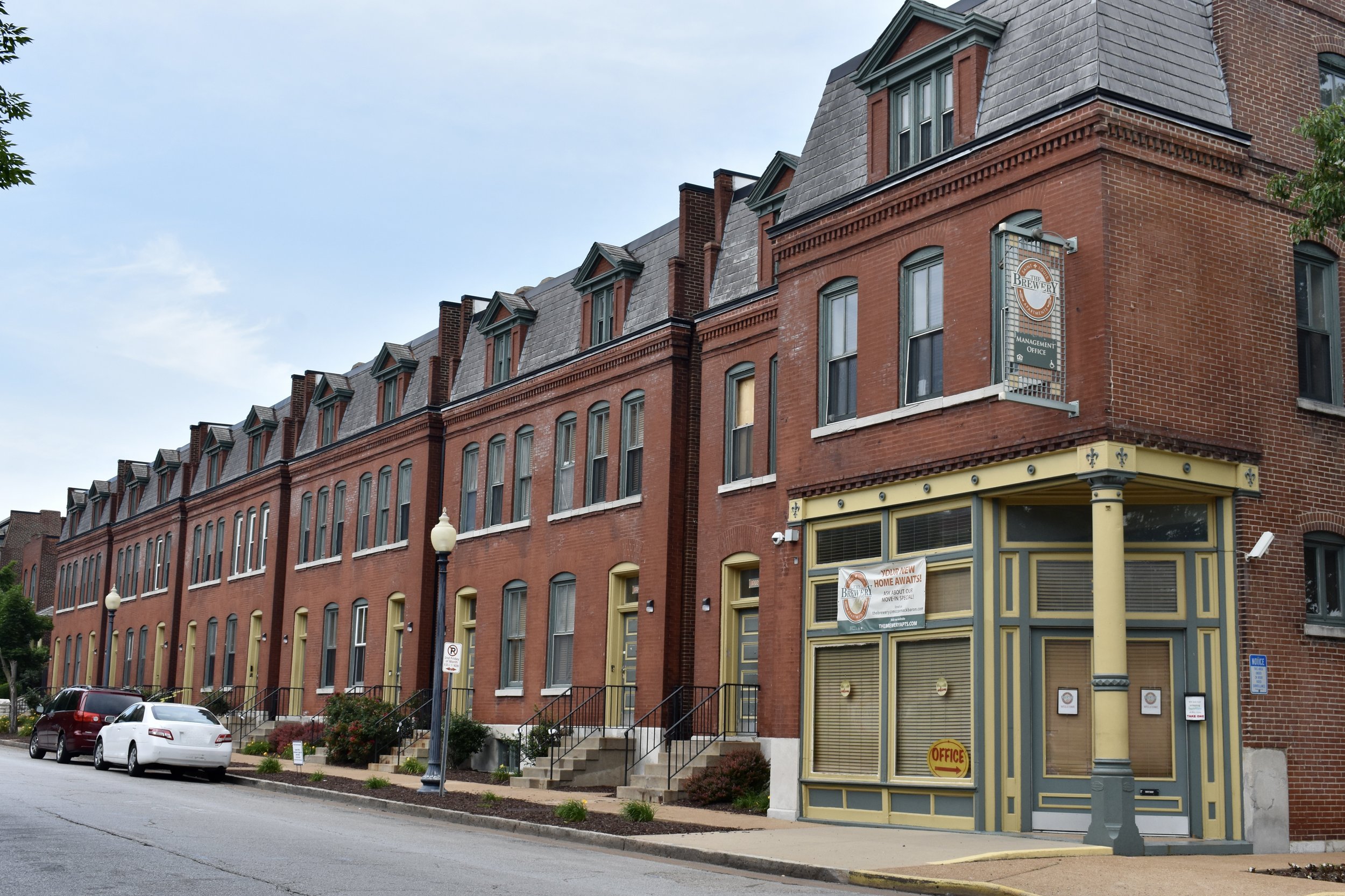
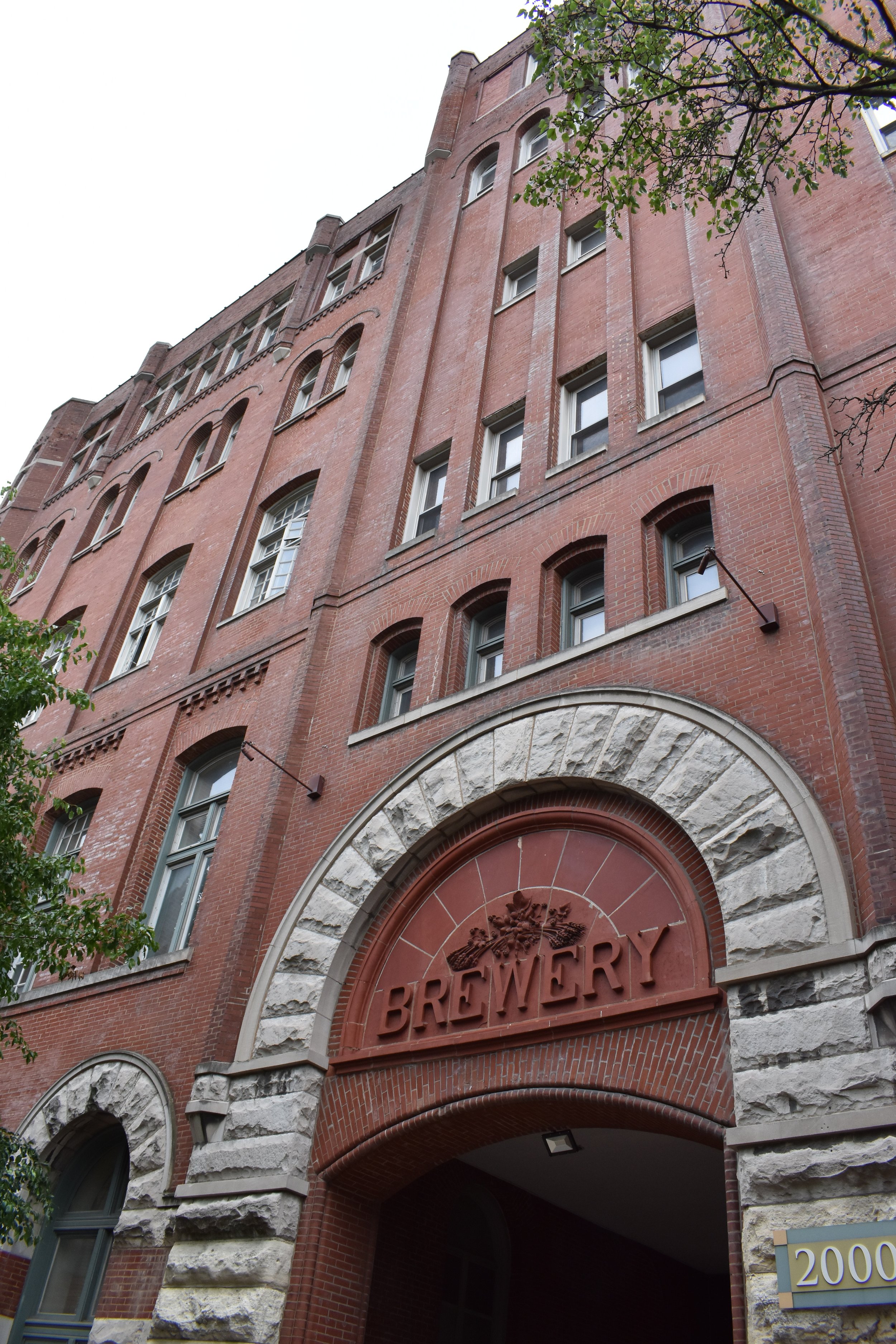
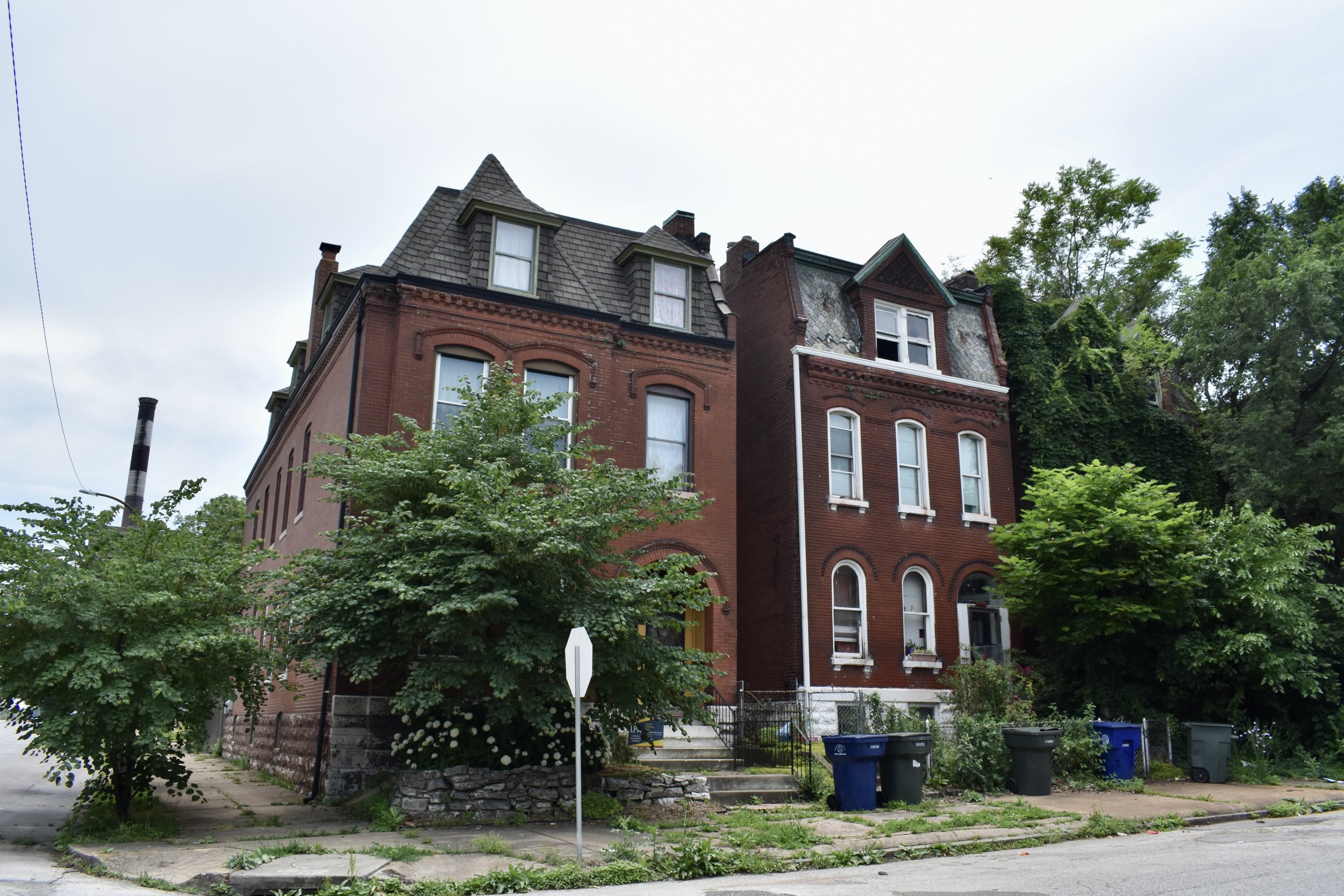

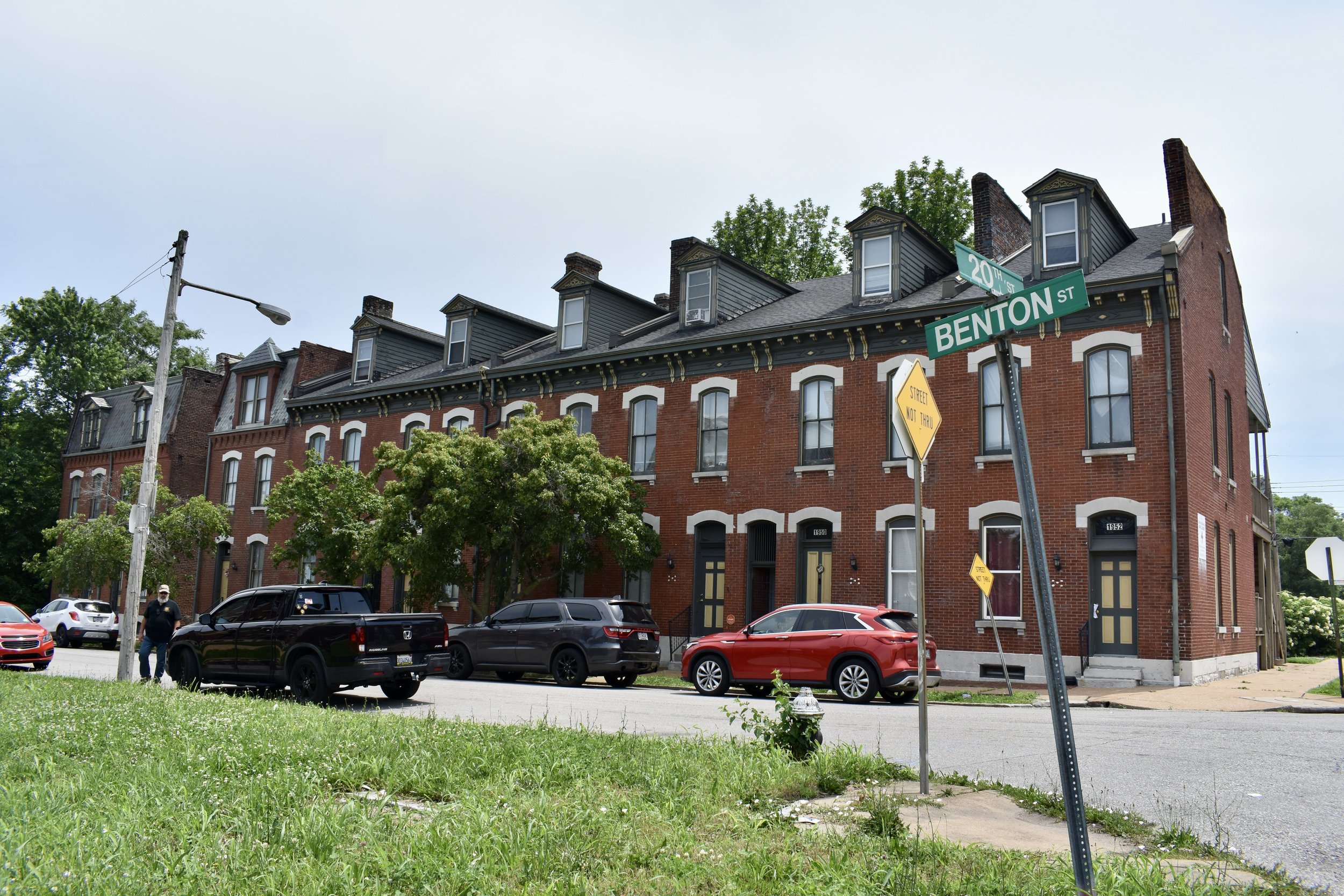
St. Louis Public Schools closed the former Jackson School in 2003 as we continue to see the exodus of parents/students out of St. Louis. This William B. Ittner beauty is not on the market as of publishing, but it would be a wonderful apartment conversion and a historic win for this neighborhood and city.


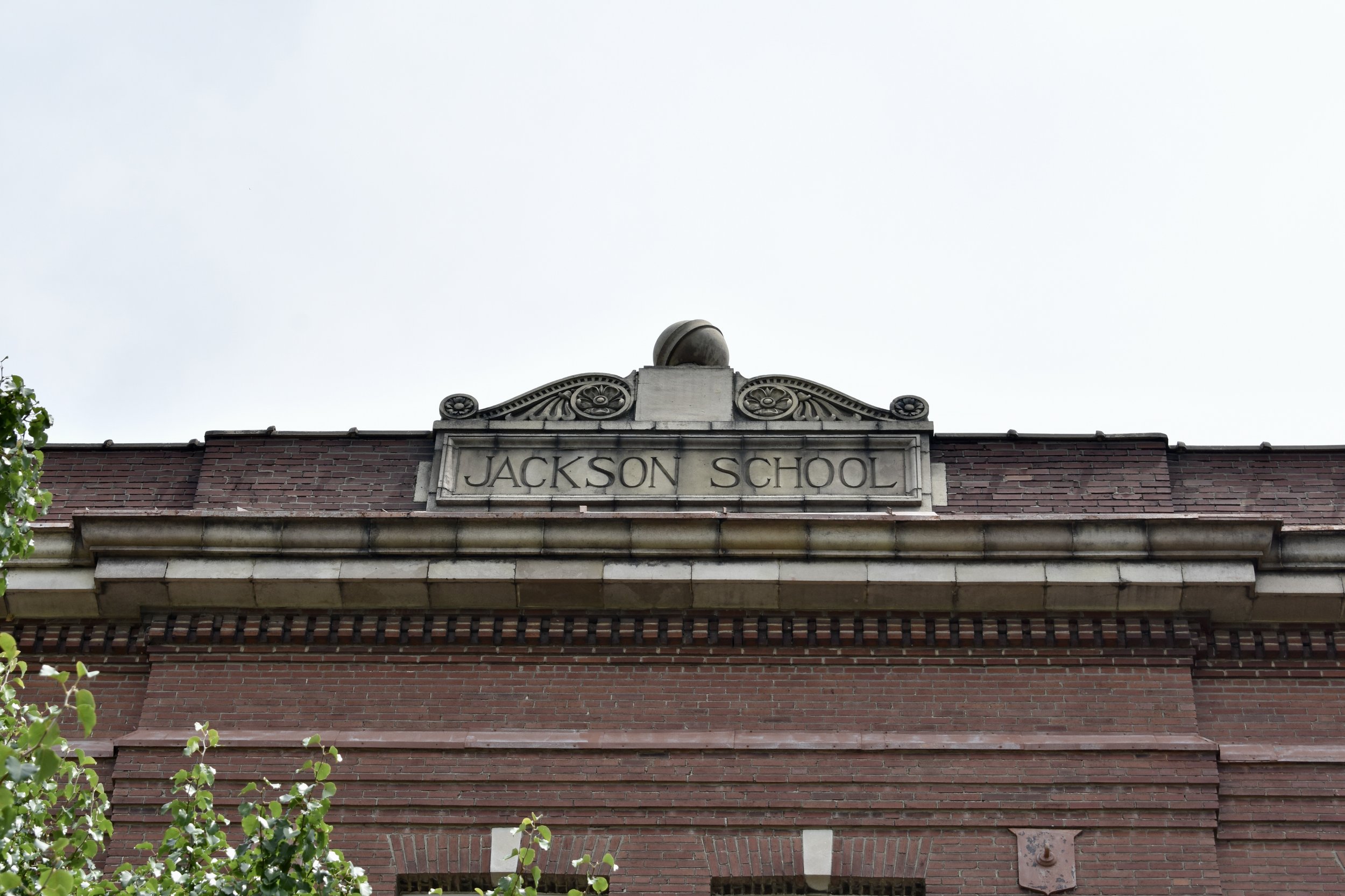
The former Blewett school is now a center for at-risk youth. The neighborhood needs schools if it starts to see an uptick in population over the next decade.
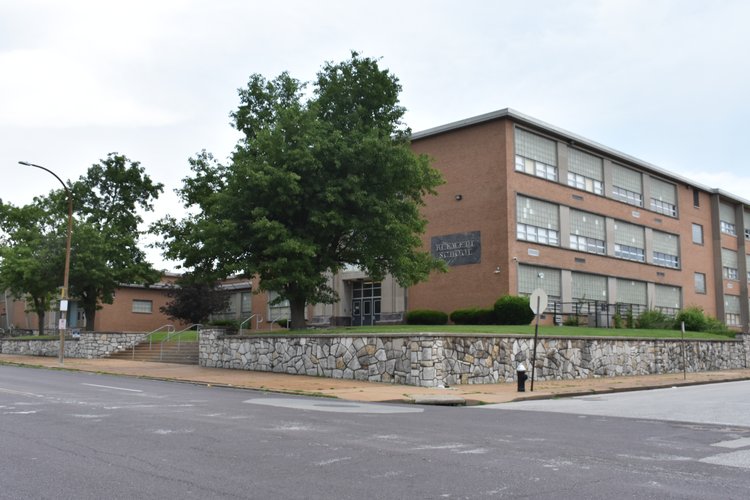
Another need is to focus on Cass Avenue. The bank should be rehabbed and the infill needs to be urban scaled to complement the Murphy Blair housing neighborhood. Demos are underway on Cass and the Preservation Square housing project across the street looks pretty decent for new housing and appear to be a net positive for the area.
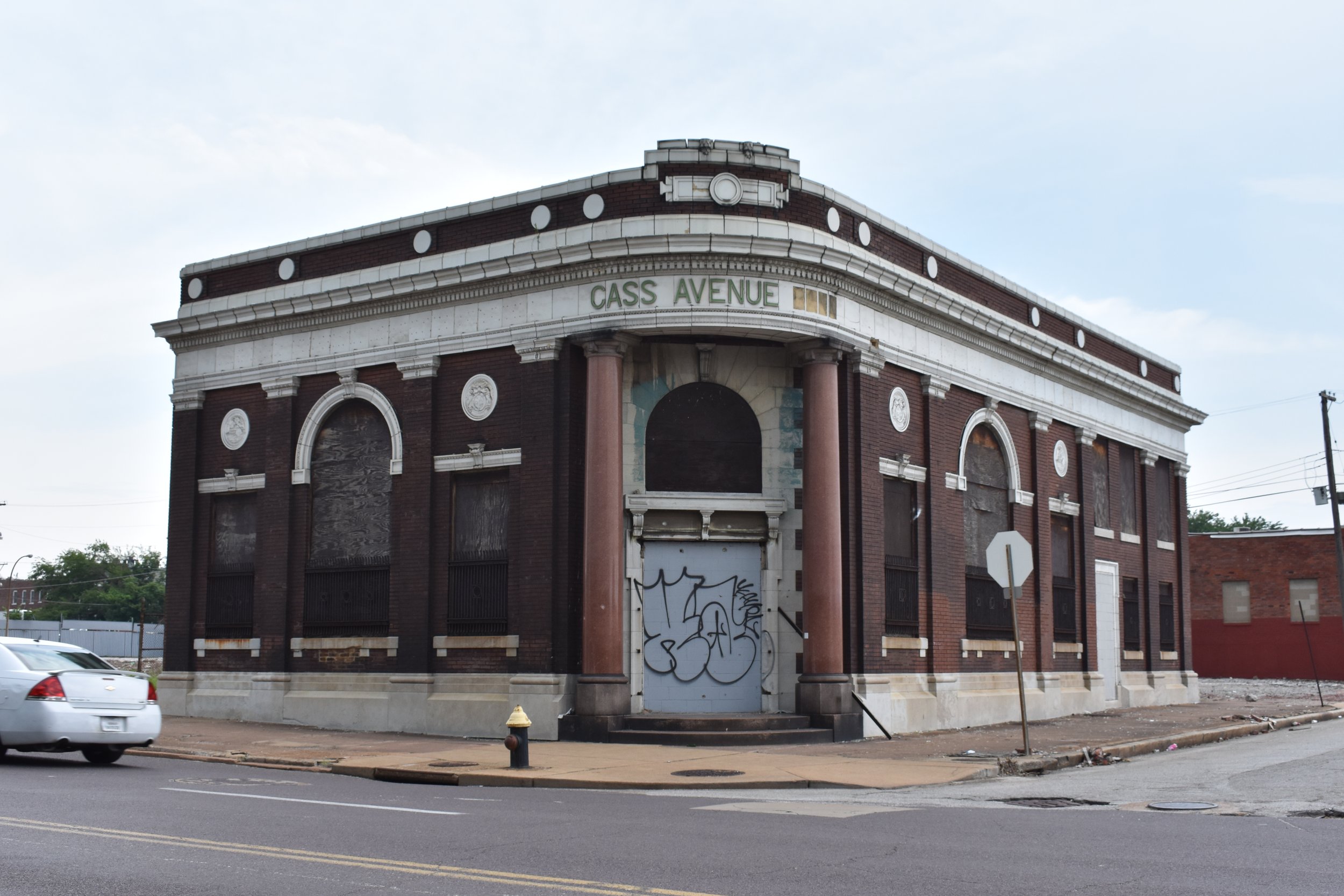
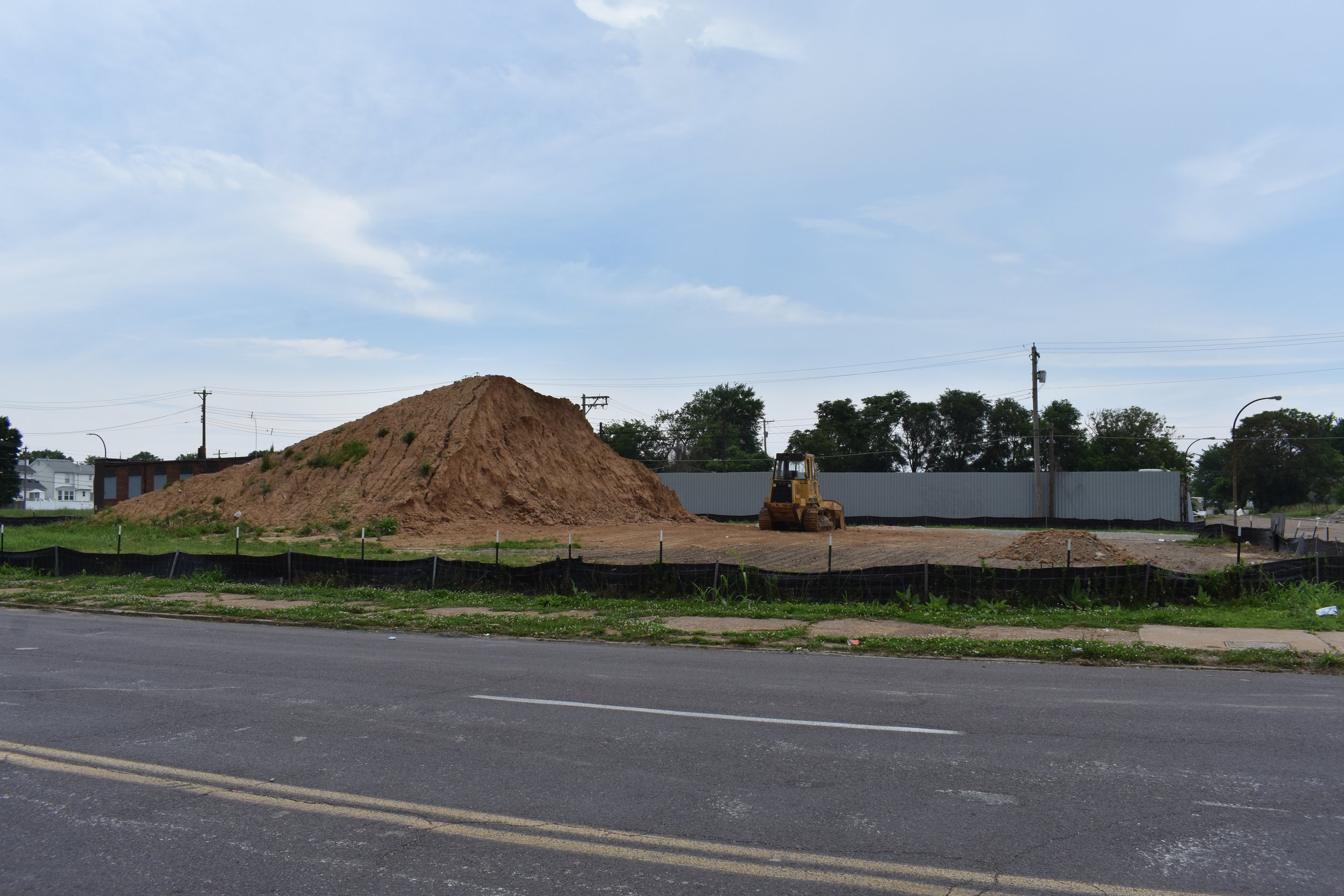


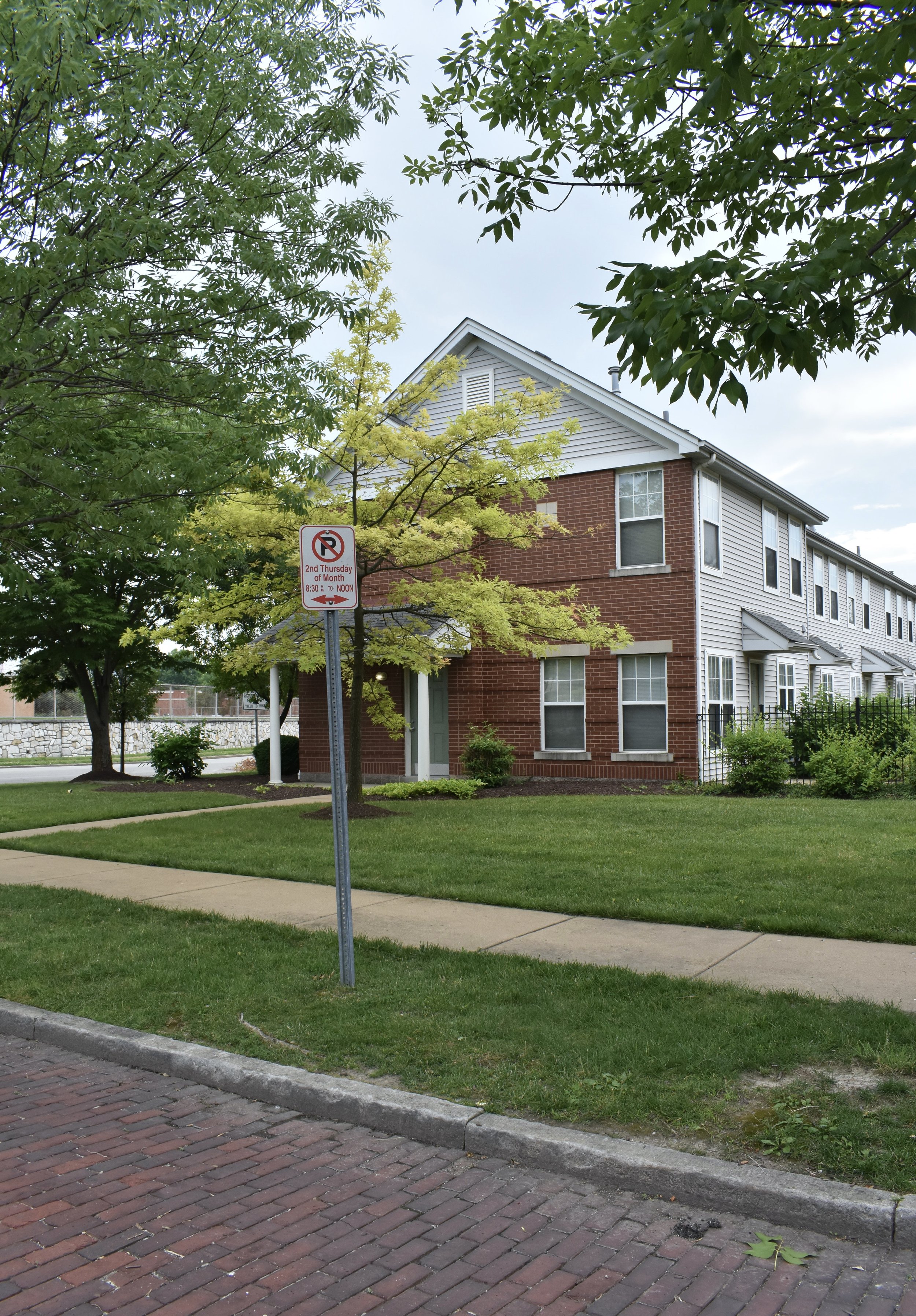
St. Louis Place Park needs some love and attention. It is trashed for the most part, and many of the homes and businesses on the east side are gone or disappearing. The ones on the west side are gorgeous and so ready for some more investment and care. There are signs of investment in the form of ADA corner curb cuts and new sidewalks and the spray fountain structure is operational, but the park is an adult party place, so it is quite trashed and abused. Kid-friendly space is not the thought that hits me.
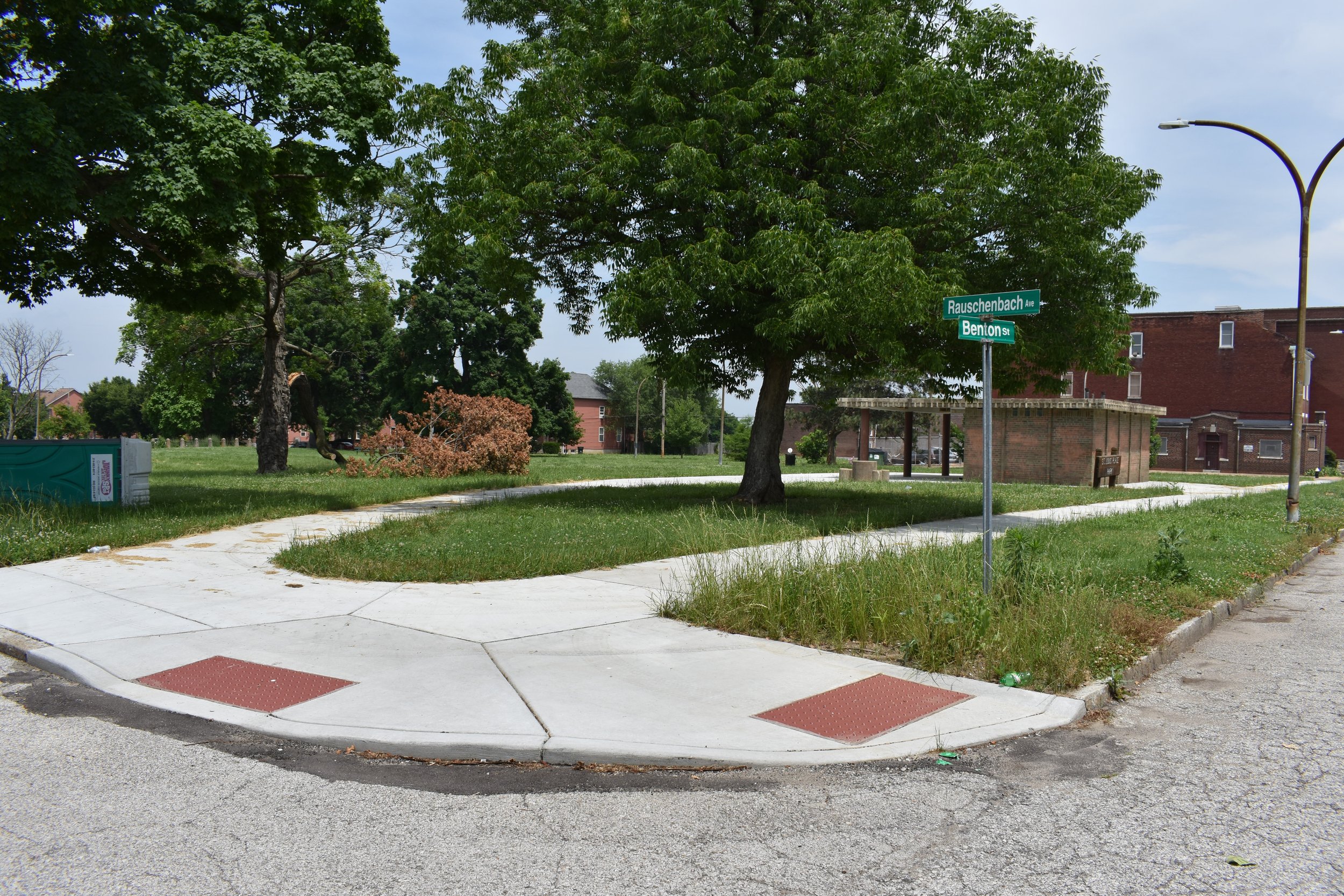

“Millionaires Row” on St. Louis Avenue through this neighborhood is stunning and should be a local priority for assistance on upgrades and rehabs. This is a one of the most gorgeous stretches of St. Louis architecture. Stunning…and there are some working hard to bring them back, like this video on the Charles S. Brown house getting some much needed TLC.
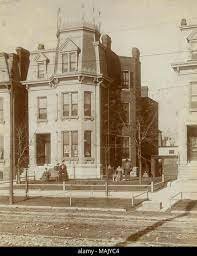

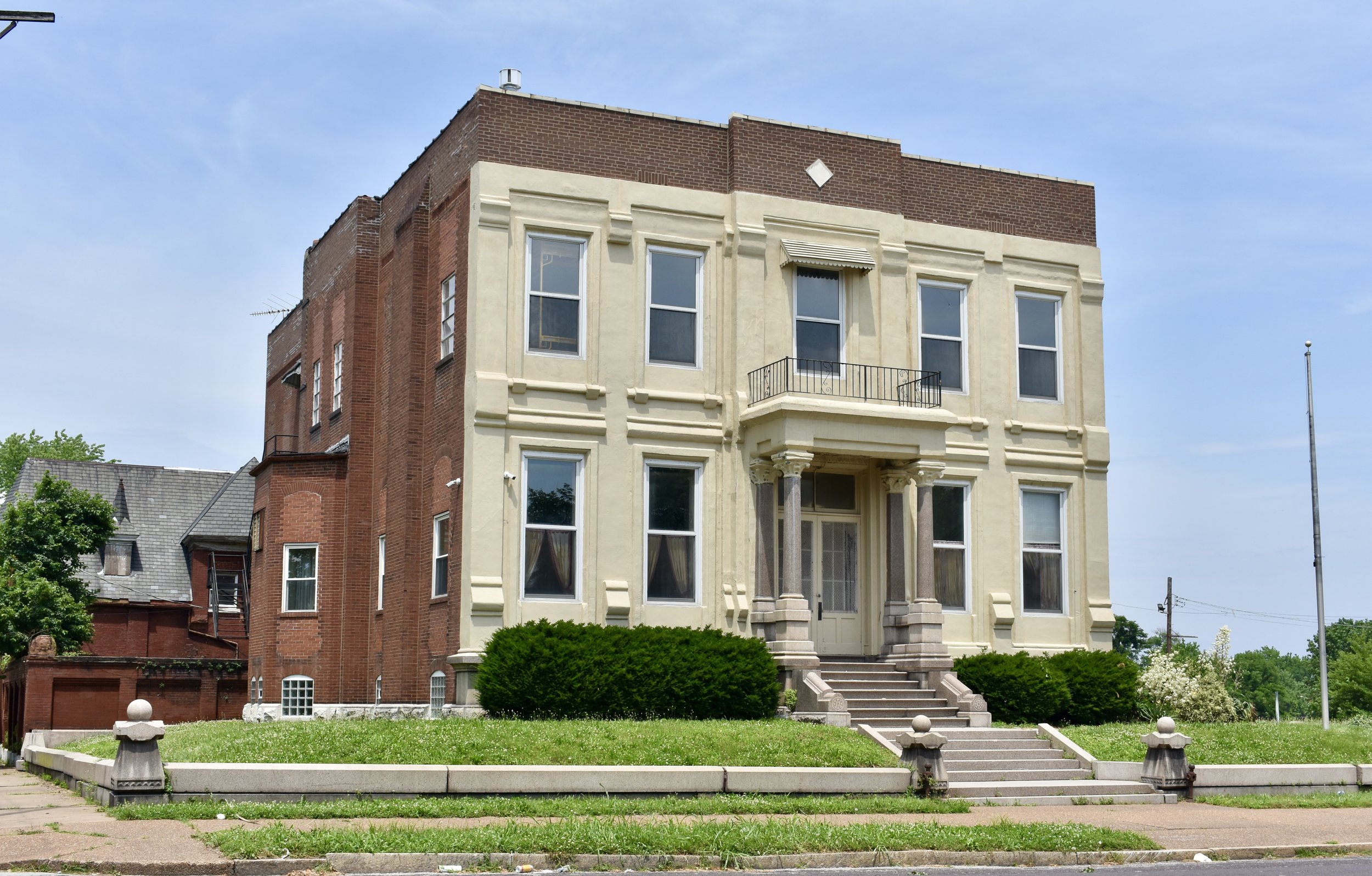
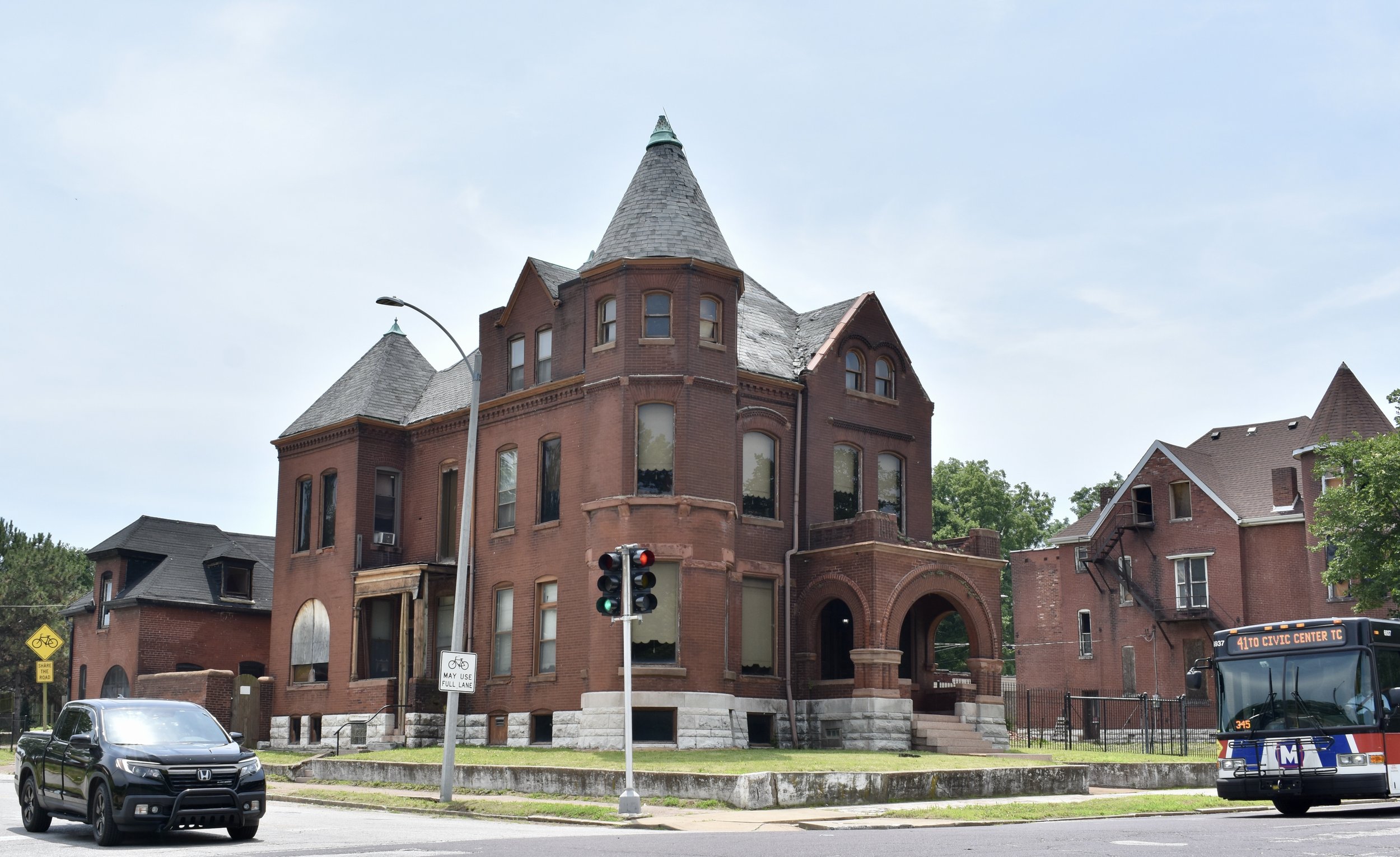
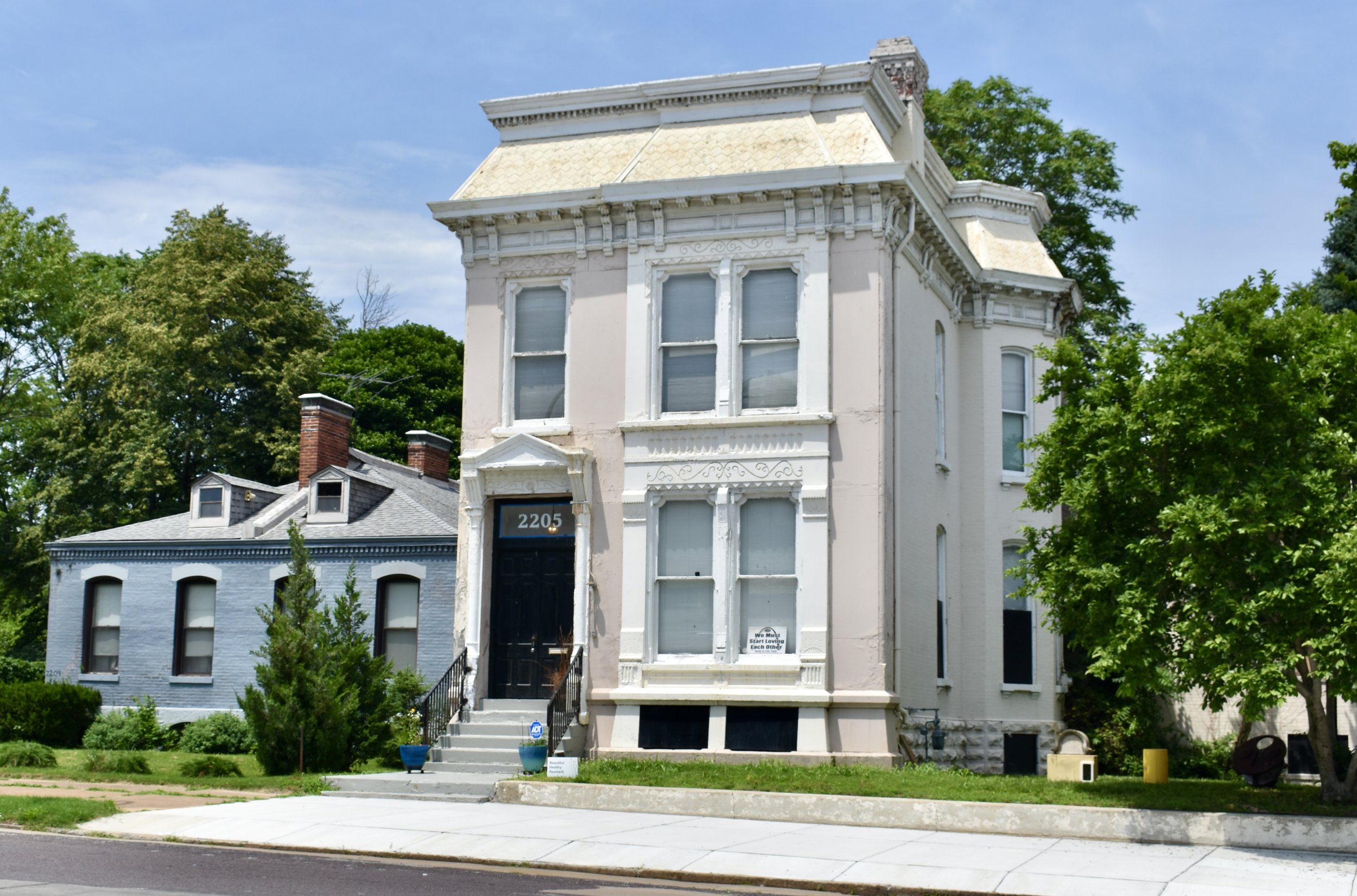
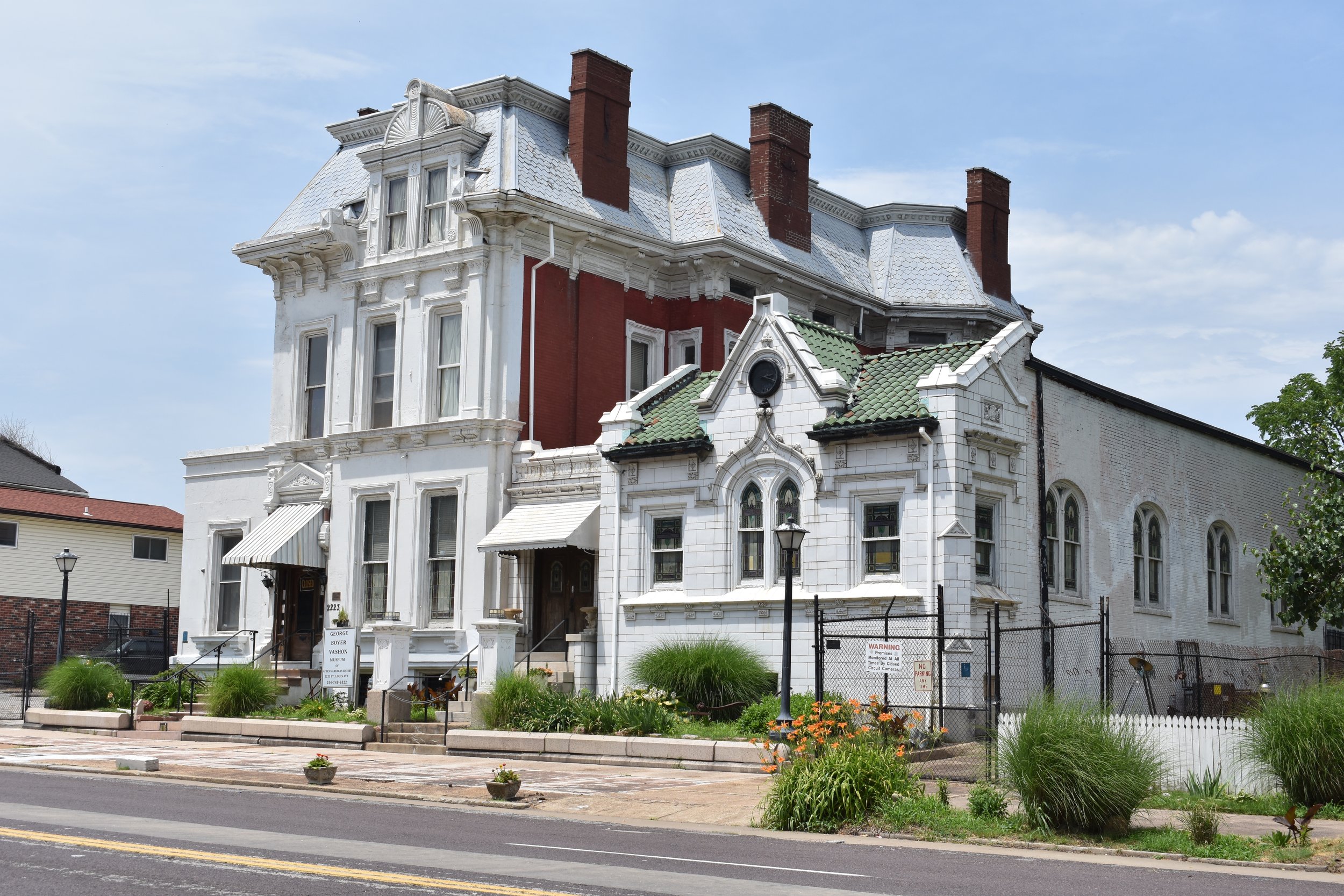


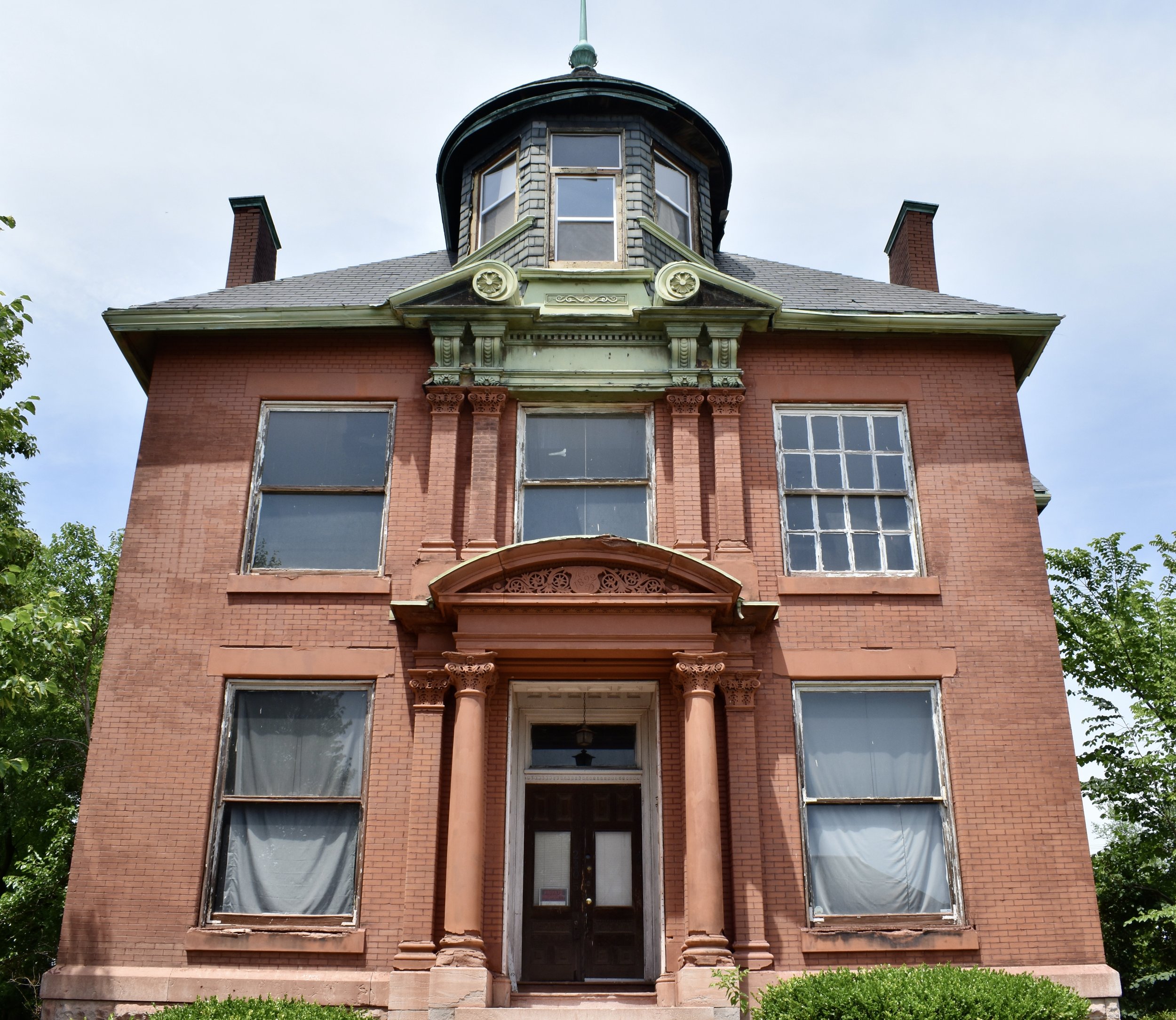
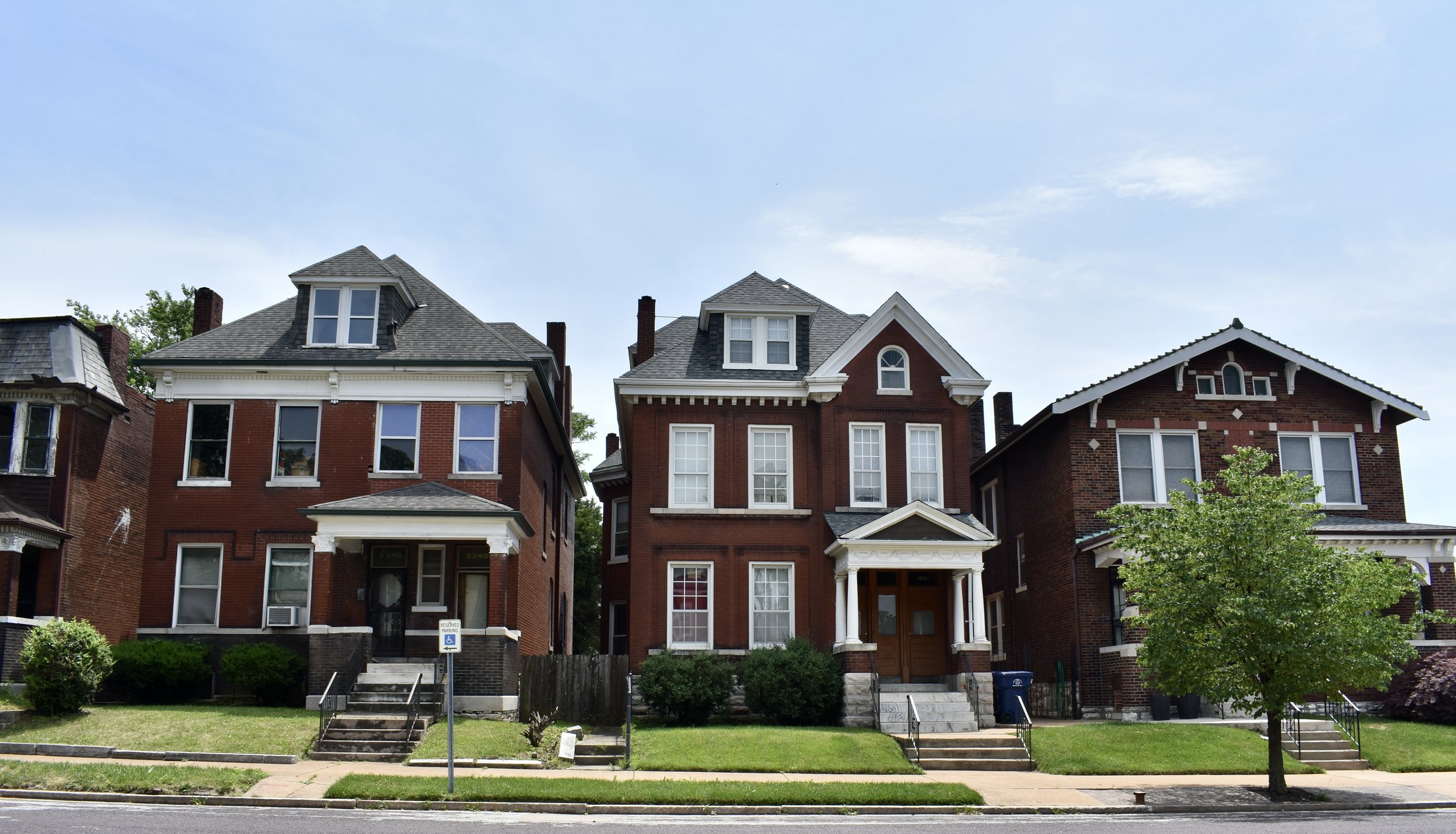
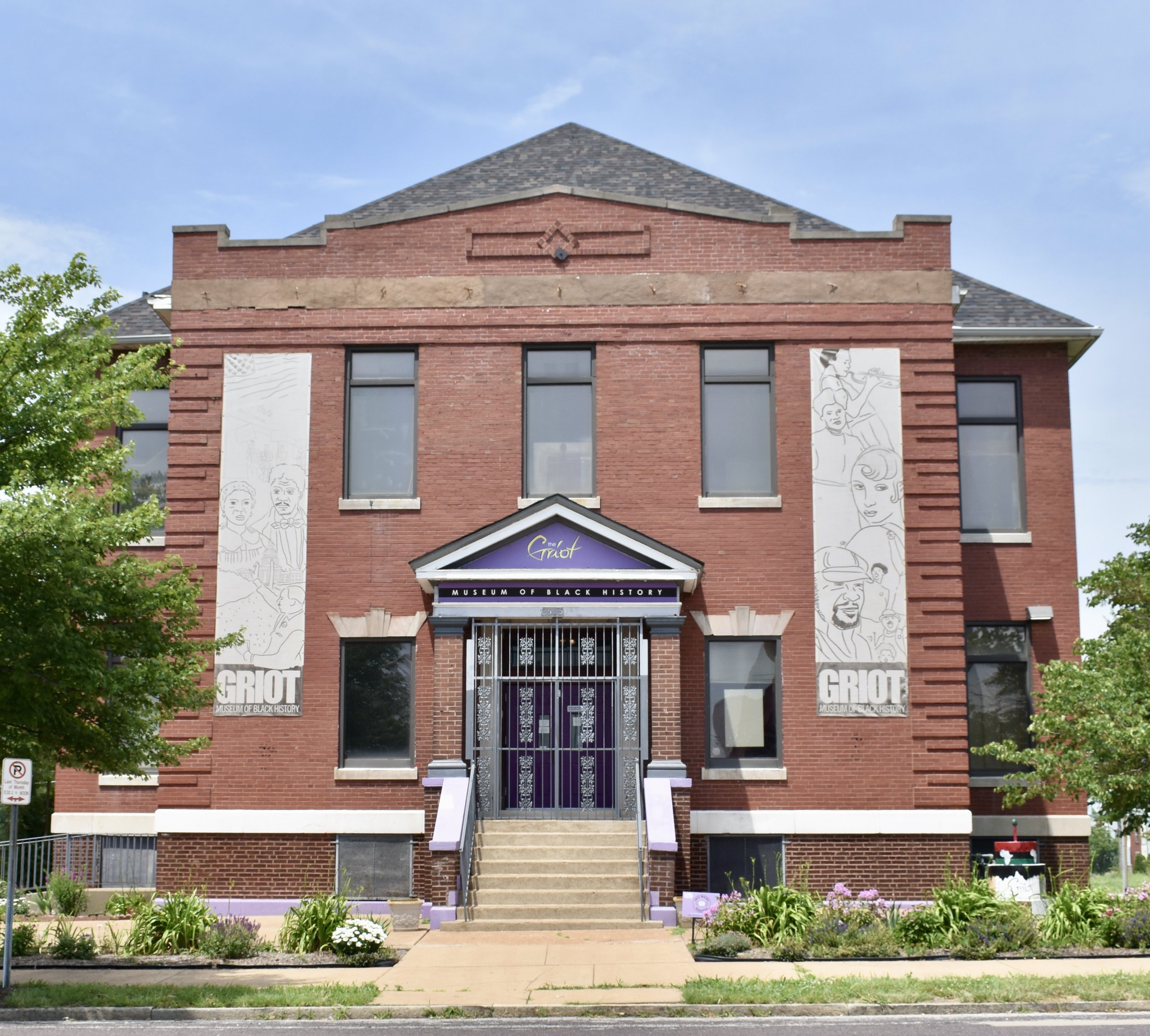
Future needs are centered around rehab efforts to save the rapidly disappearing 19th and early 20th Century housing. And fill in the vacant lots with new construction. In the meantime, take care of this place with acceptable city services for the many who live here. The city has failed these parts with the most basic of services. Blame local leadership all the way up the Mayor’s office who continue to turn a blind eye decade after decade. Take your pick on who to blame.
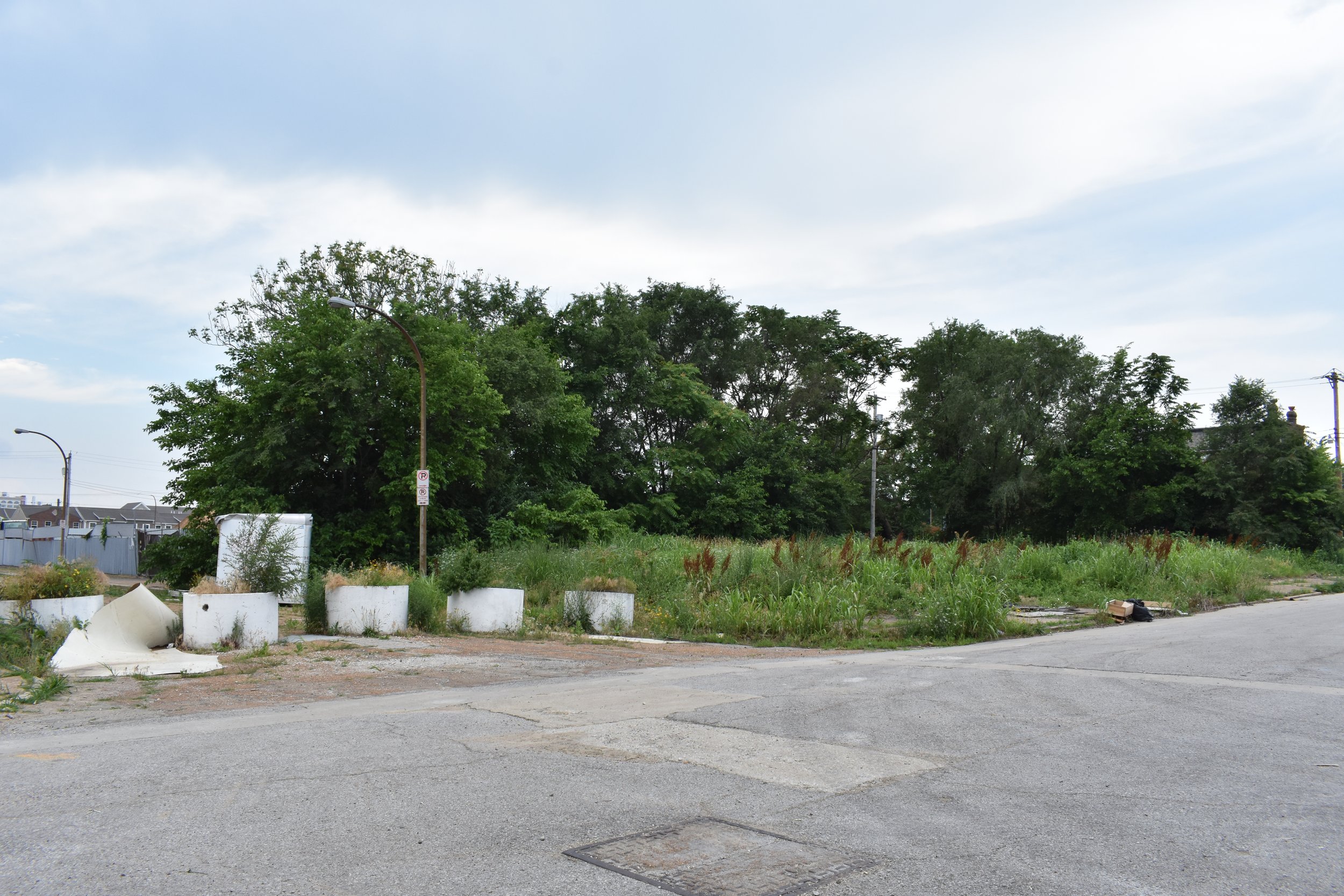
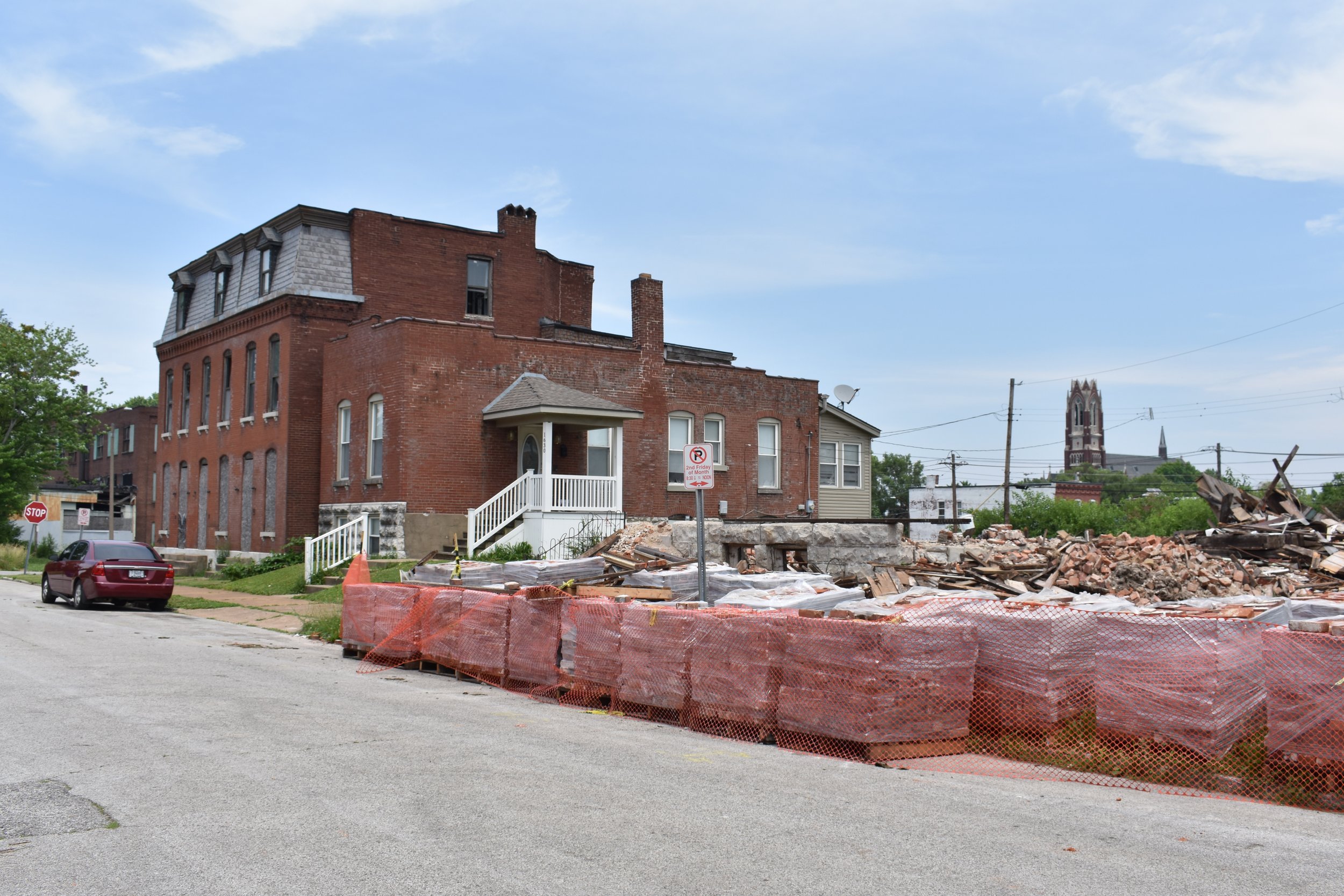
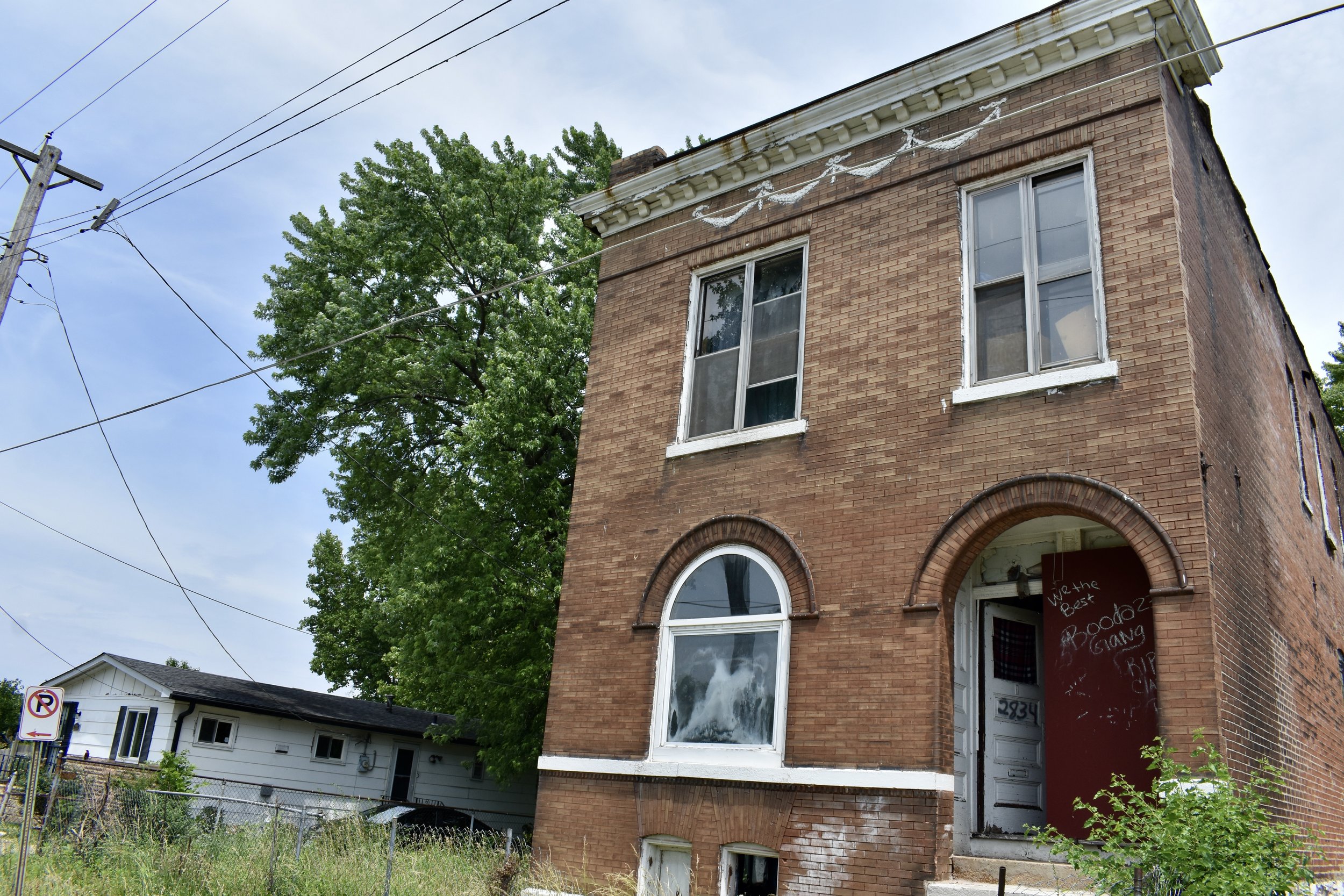

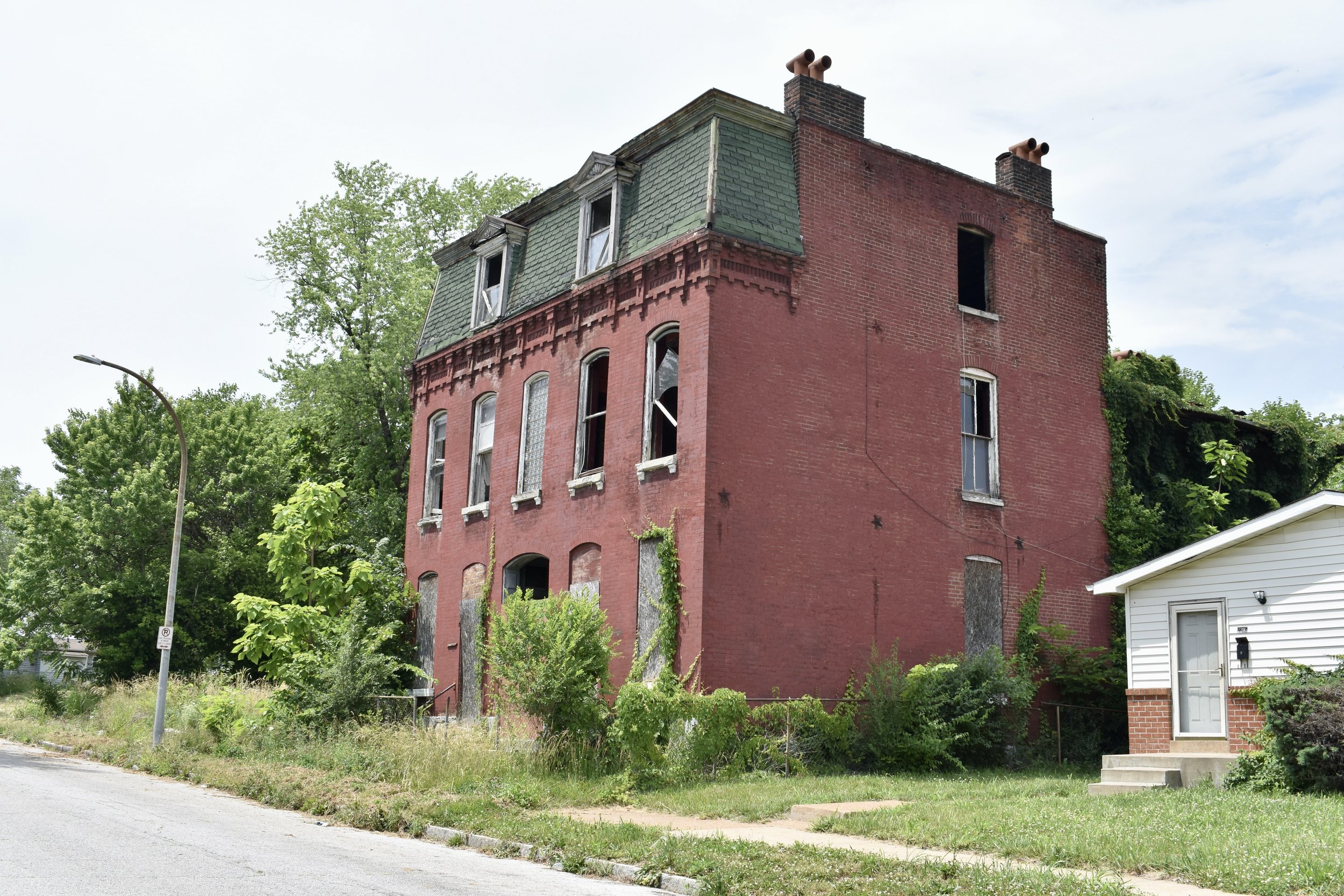
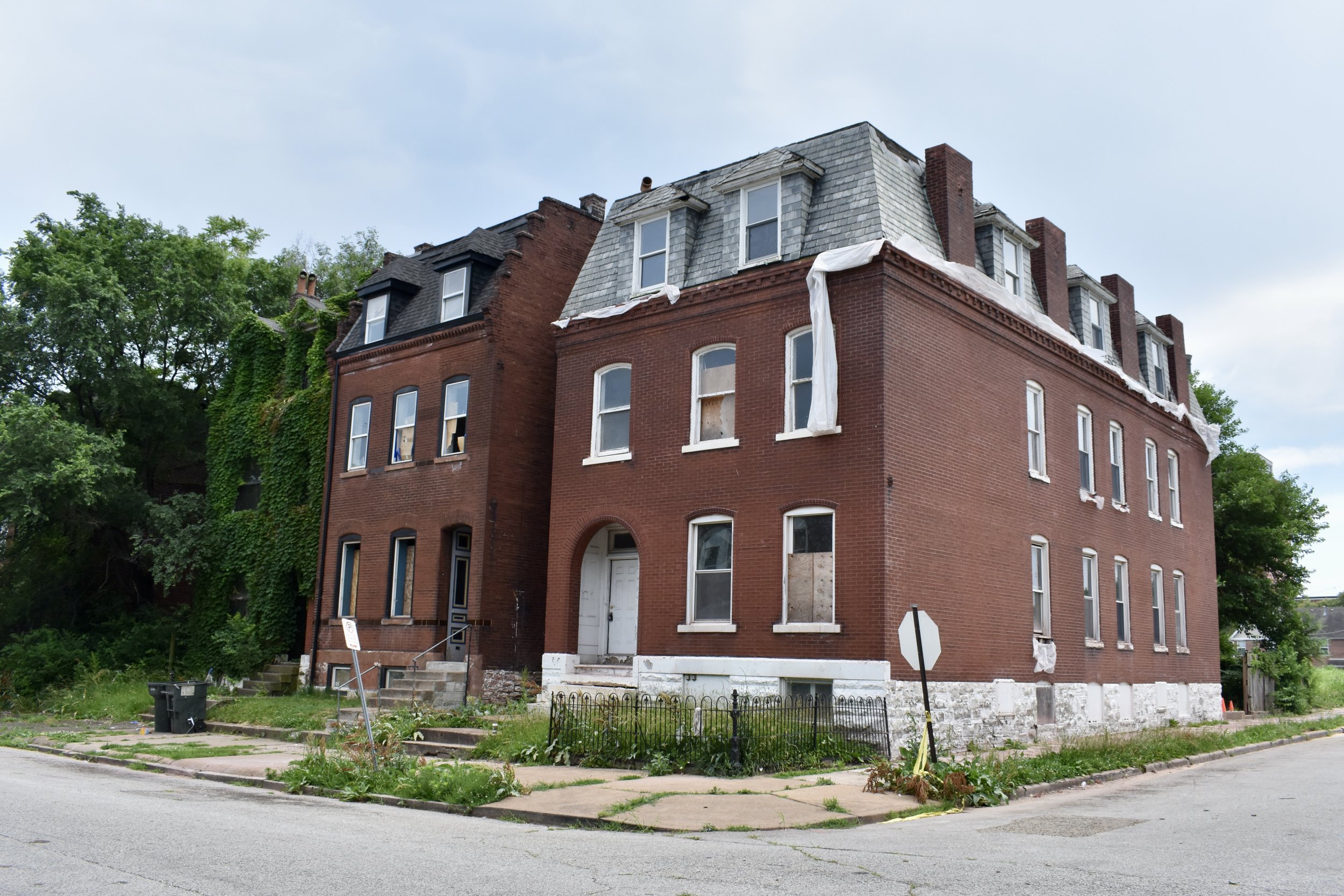
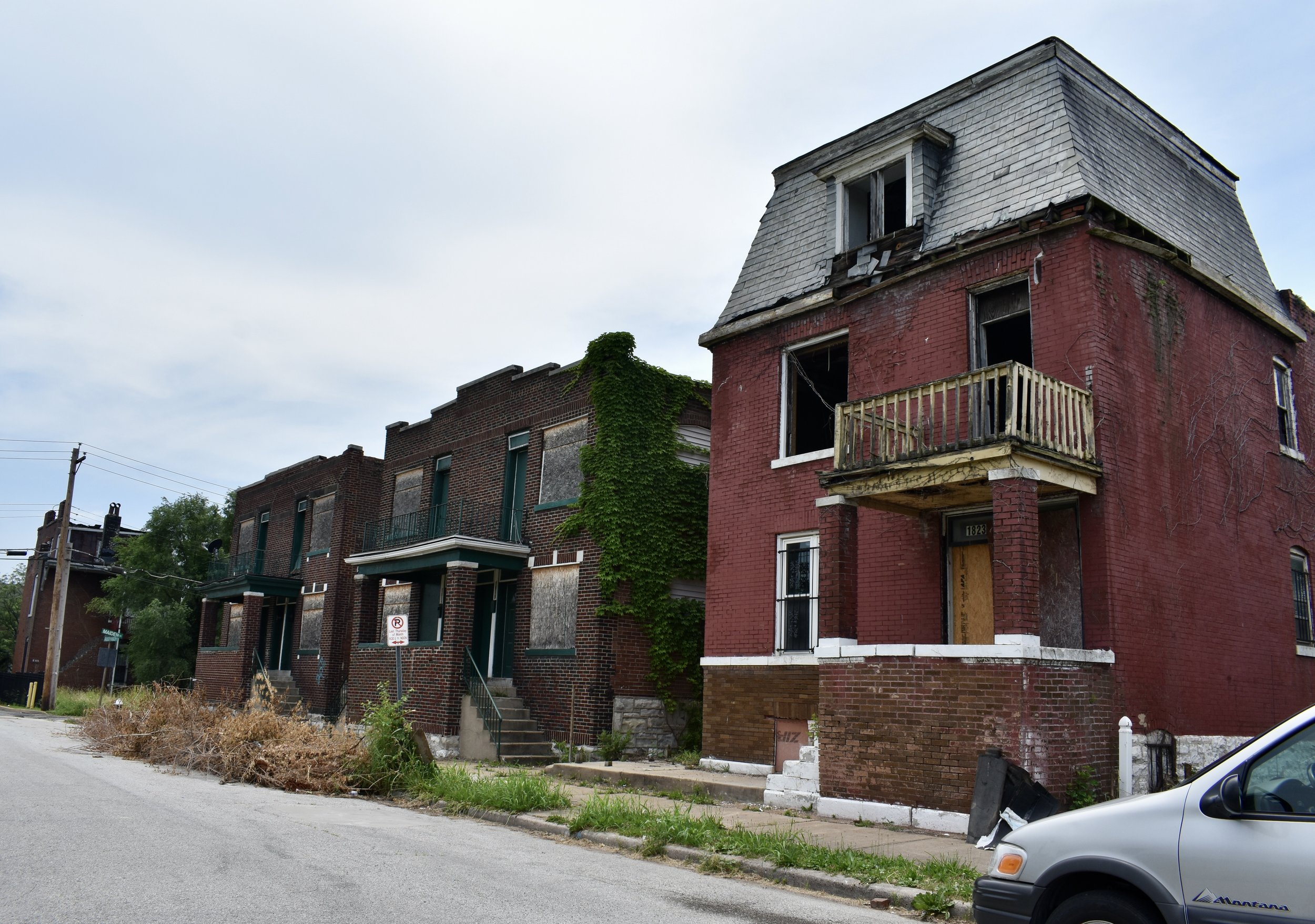
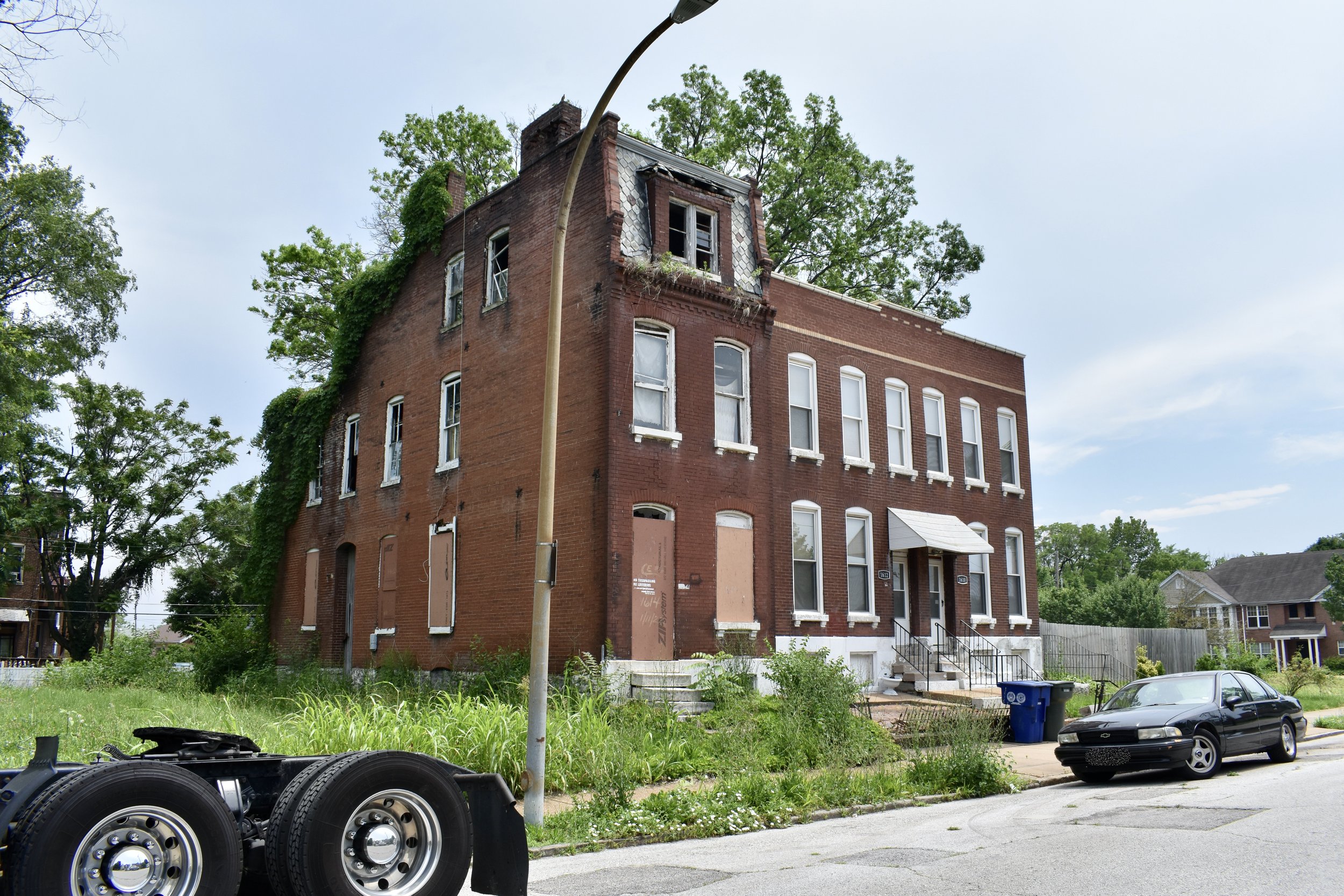
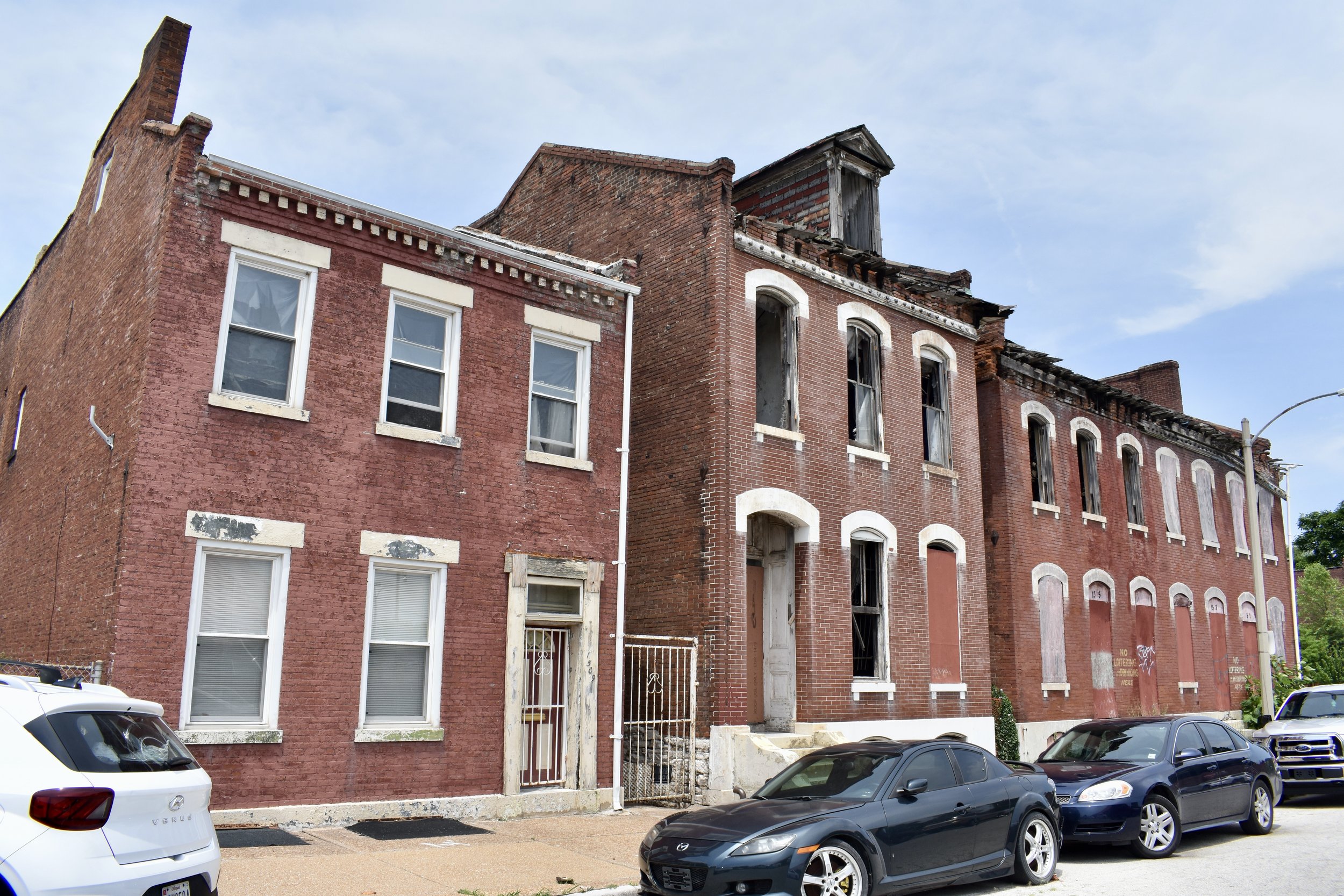
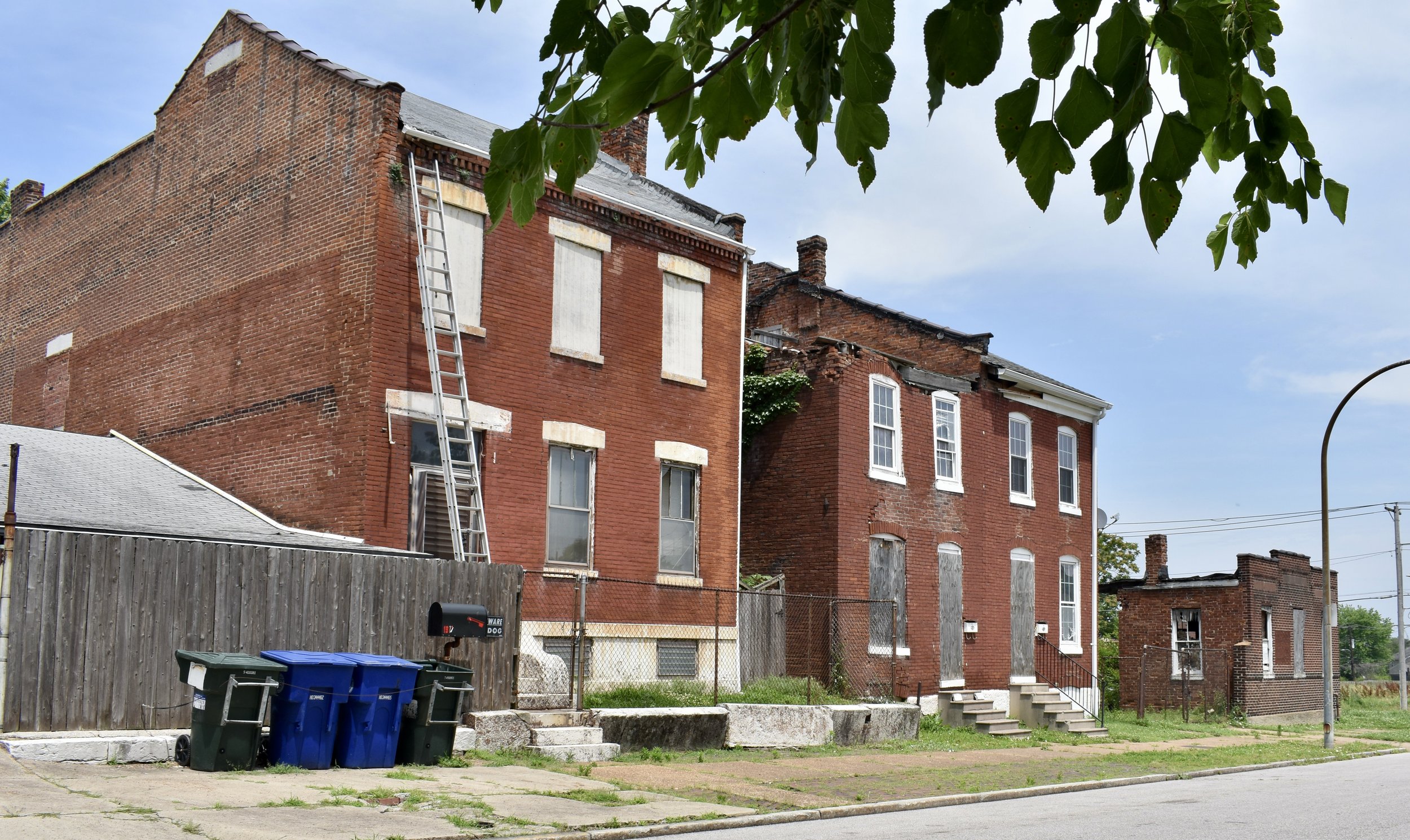

I’ll end this one with a large amount of photos to show you the beautiful homes that exist here, making it one of the places in North City the most ready for resources. Save this for the next generation(s), please. The people that are hanging on and thriving are the ones worthy of help. Let’s do this.
